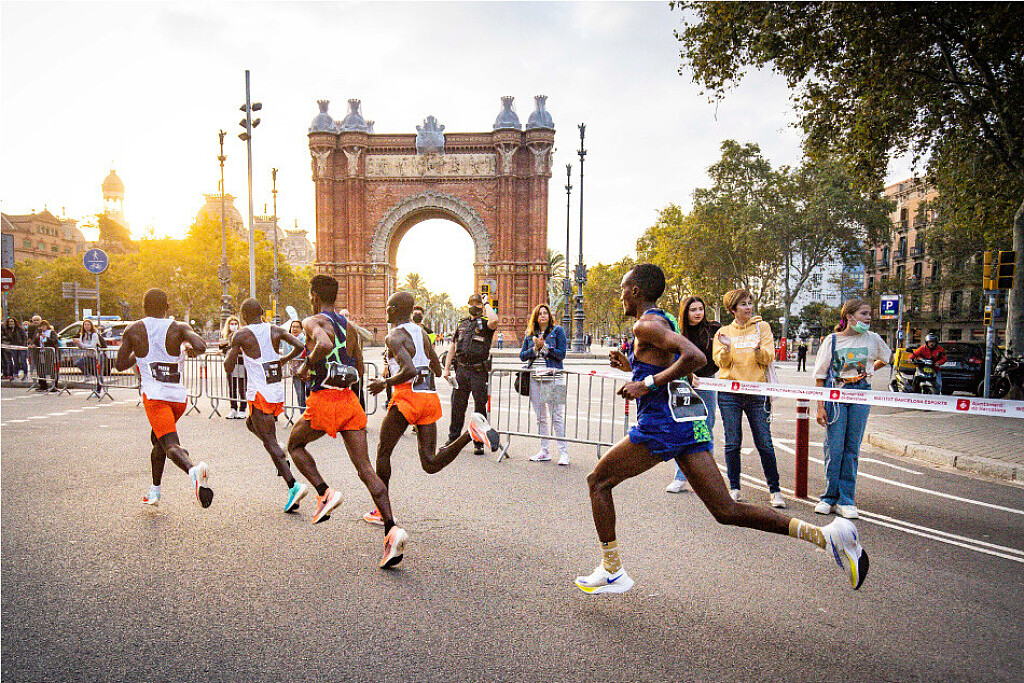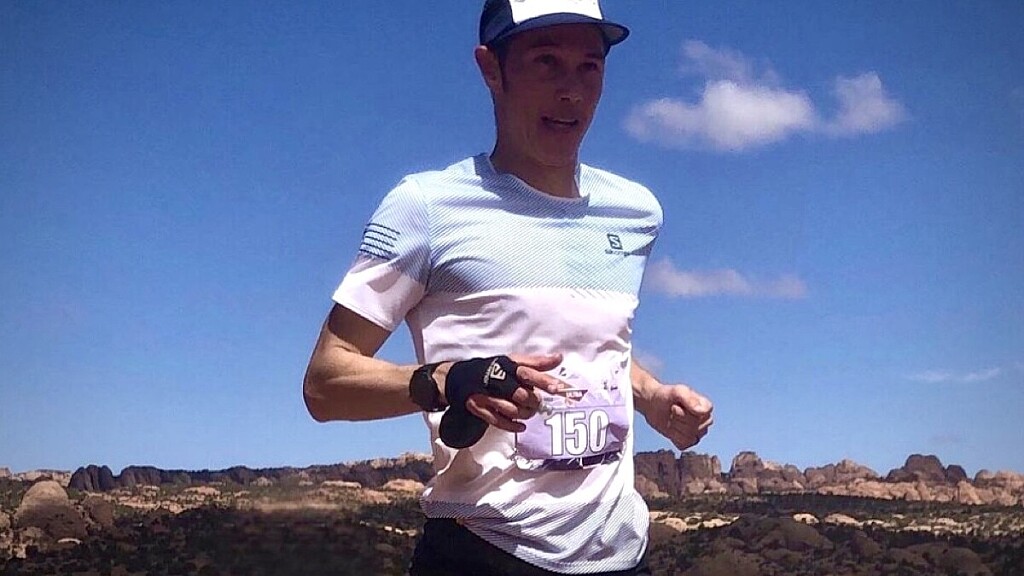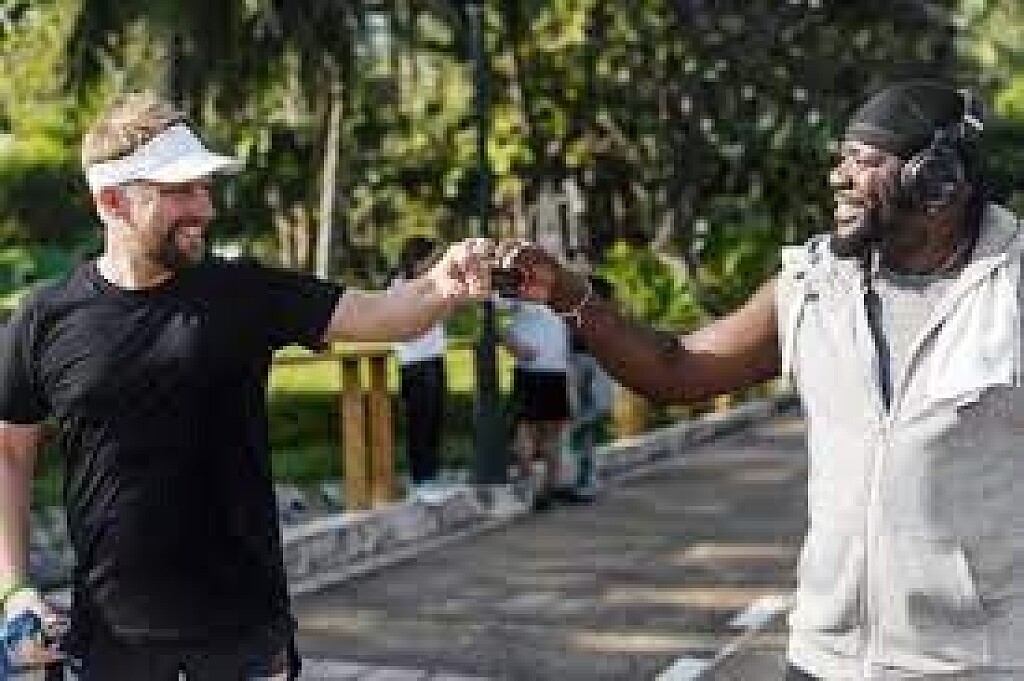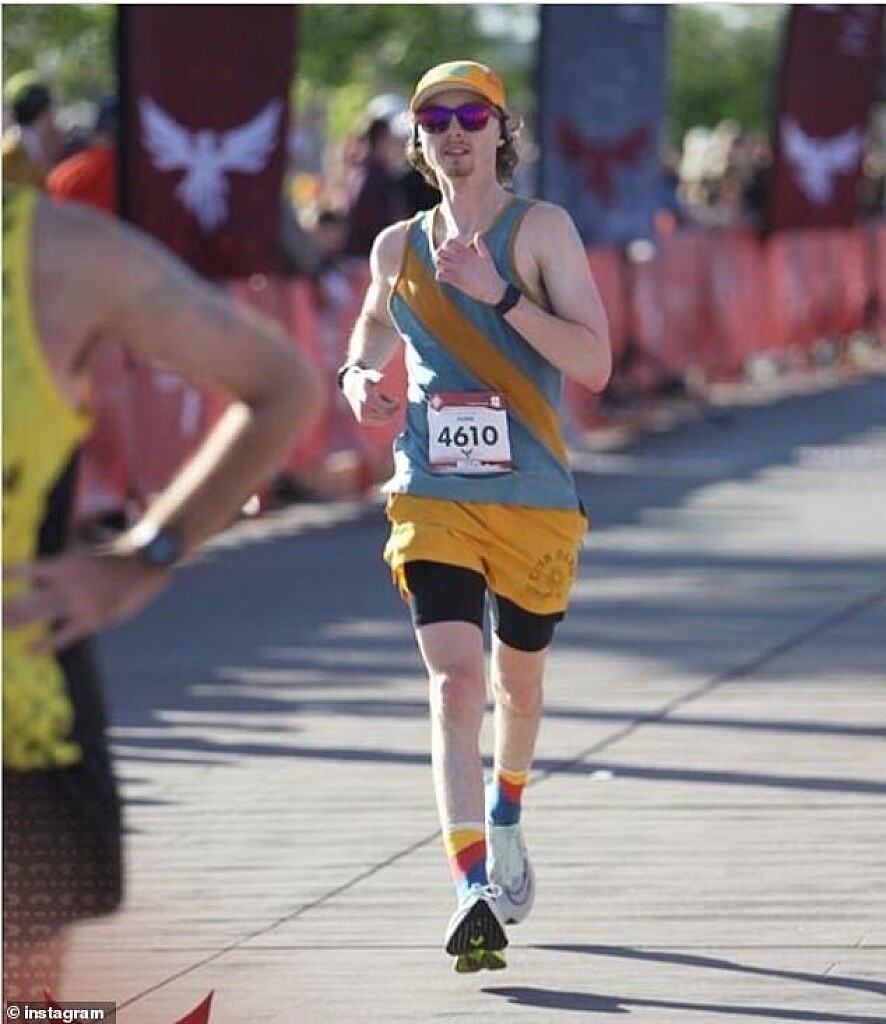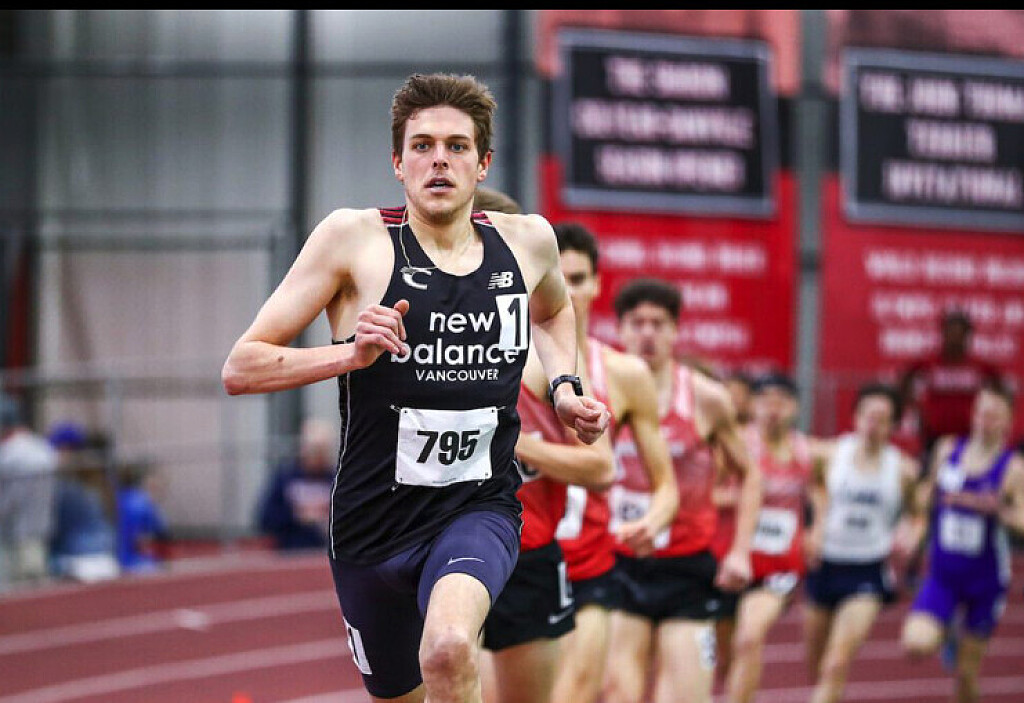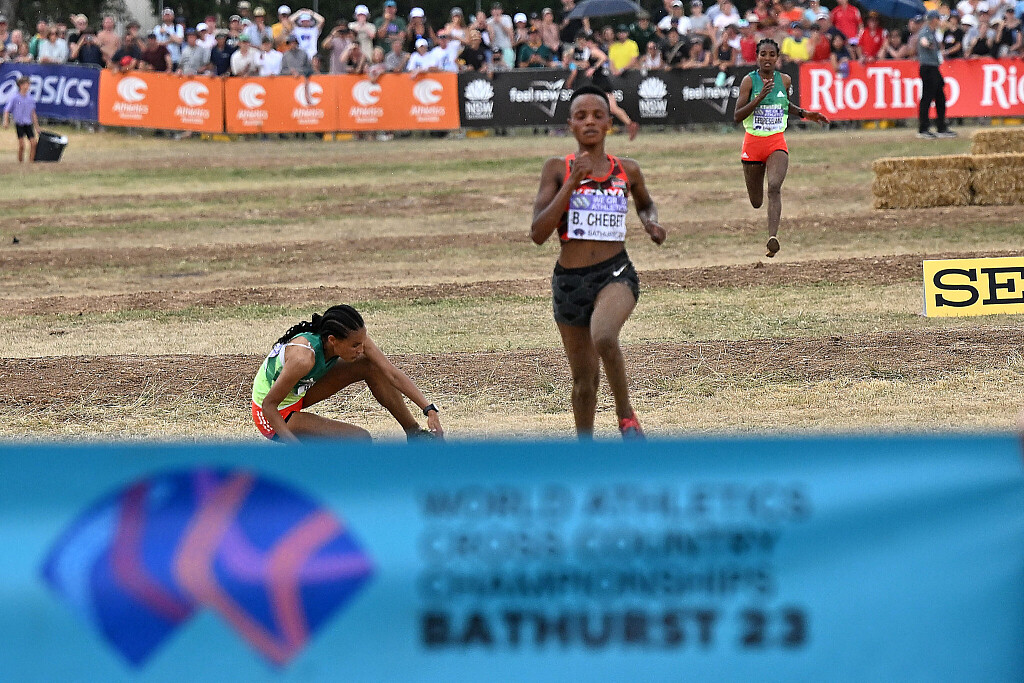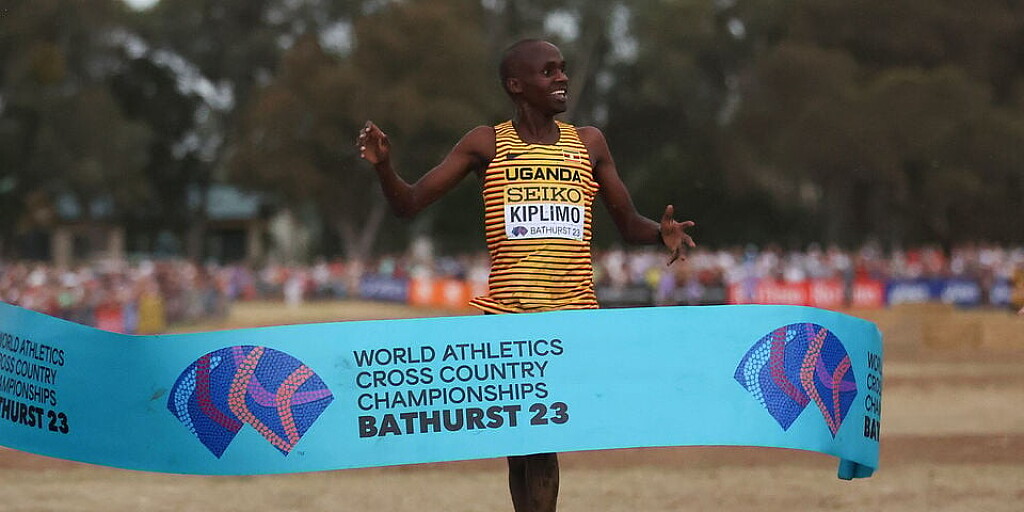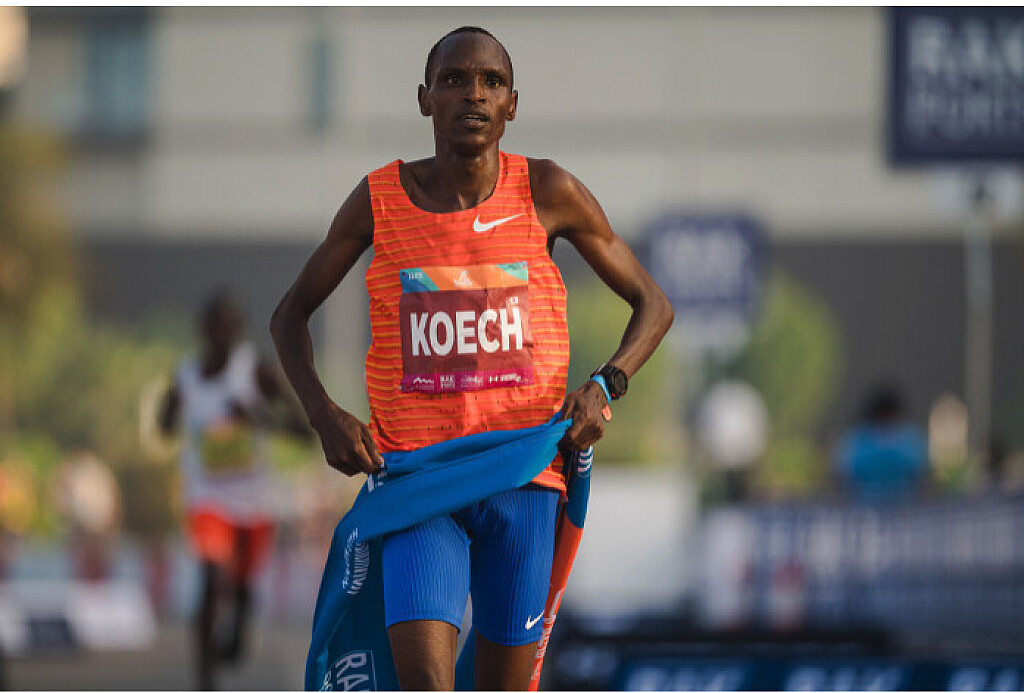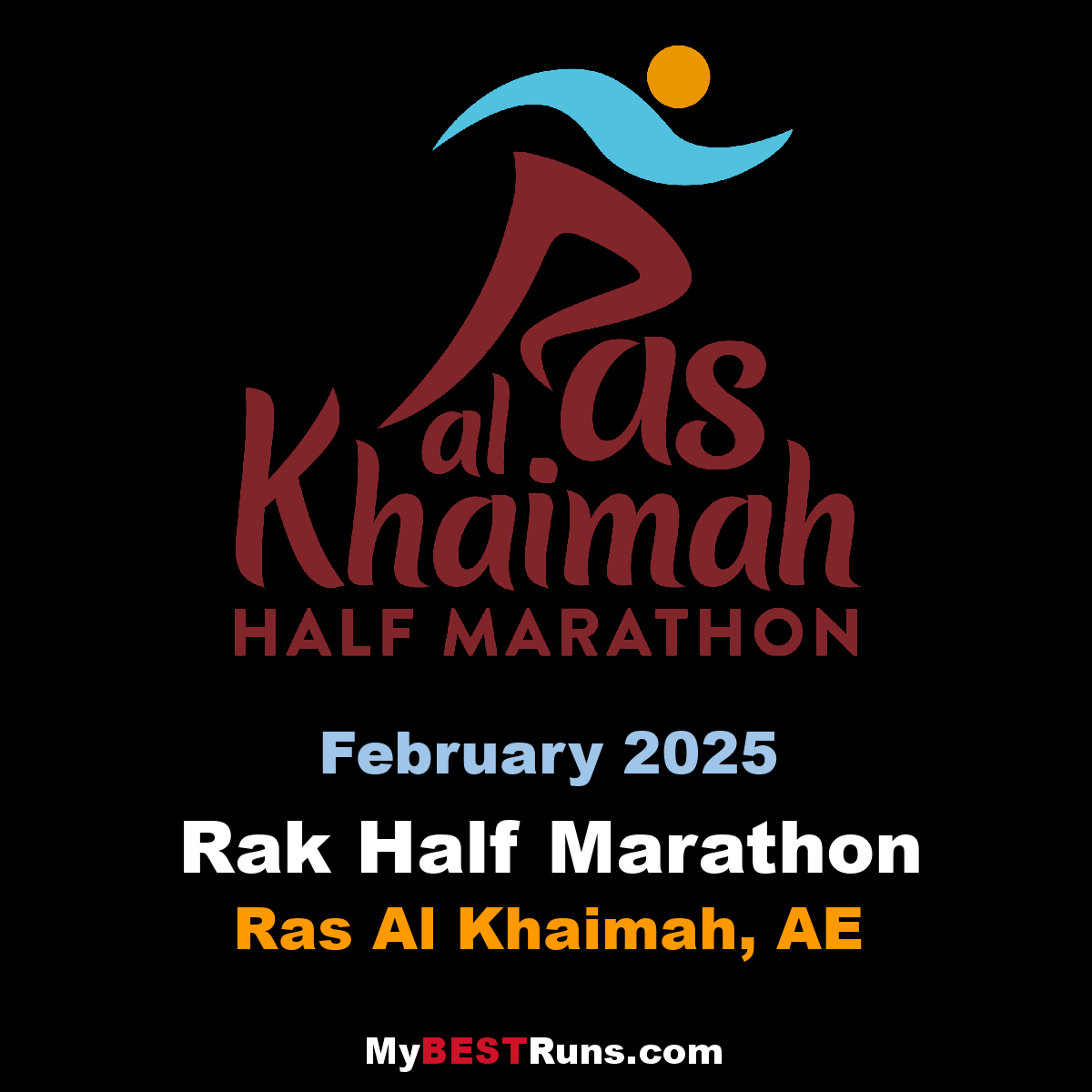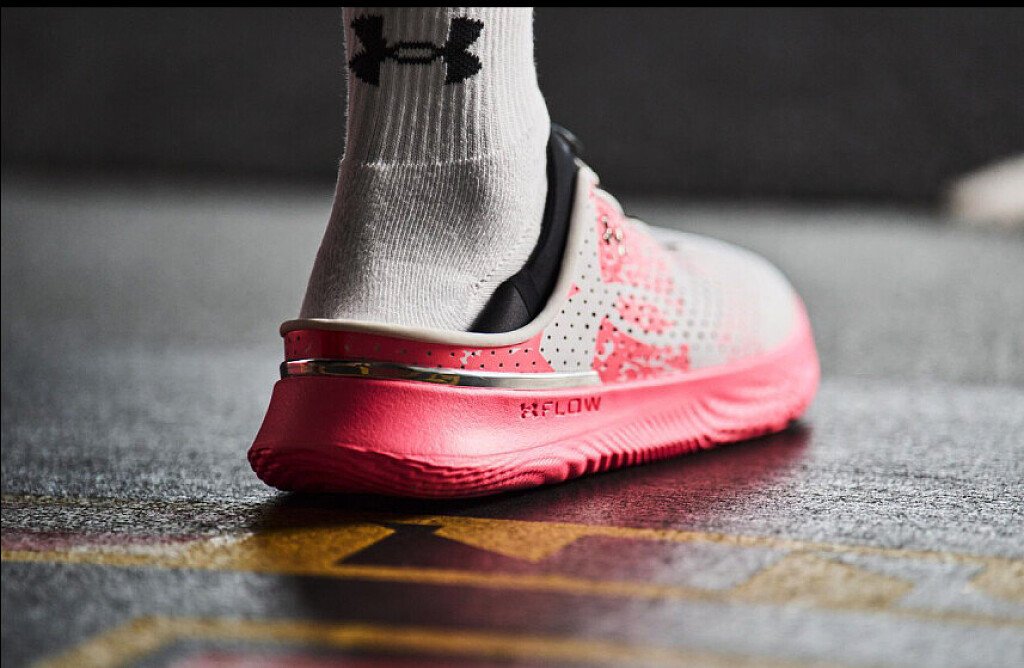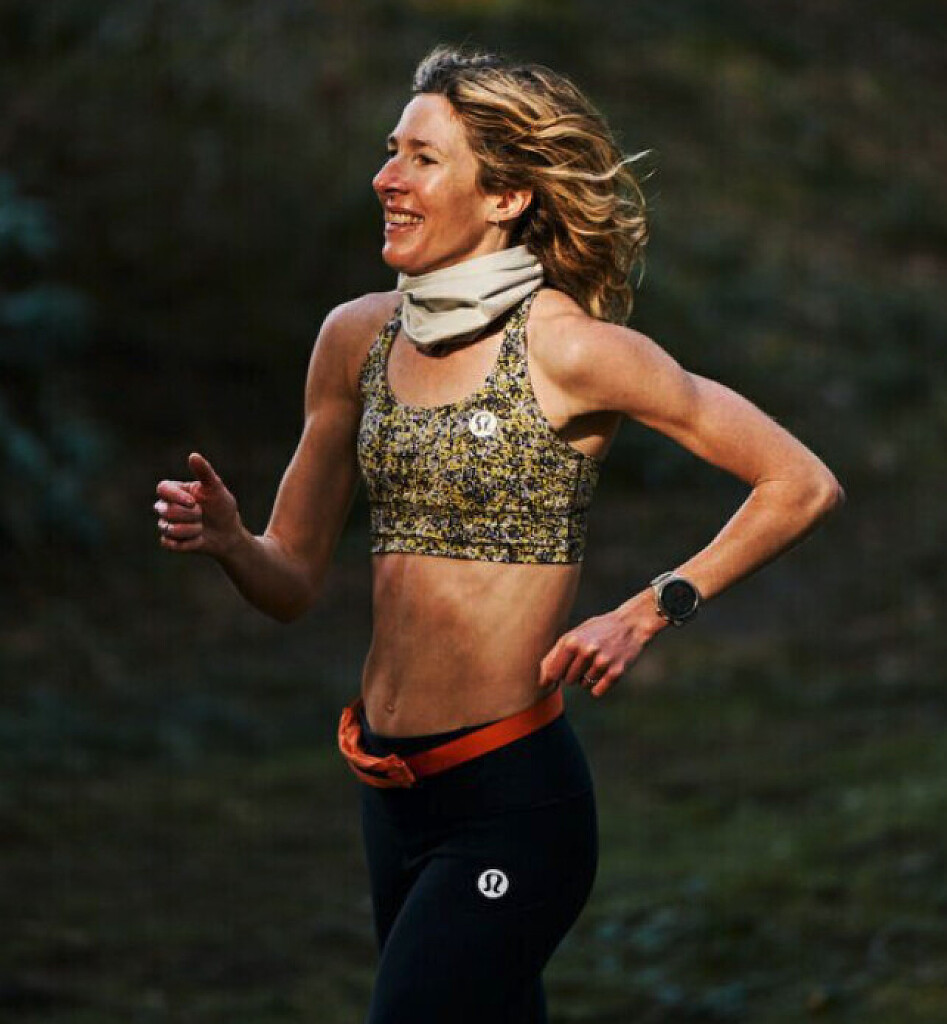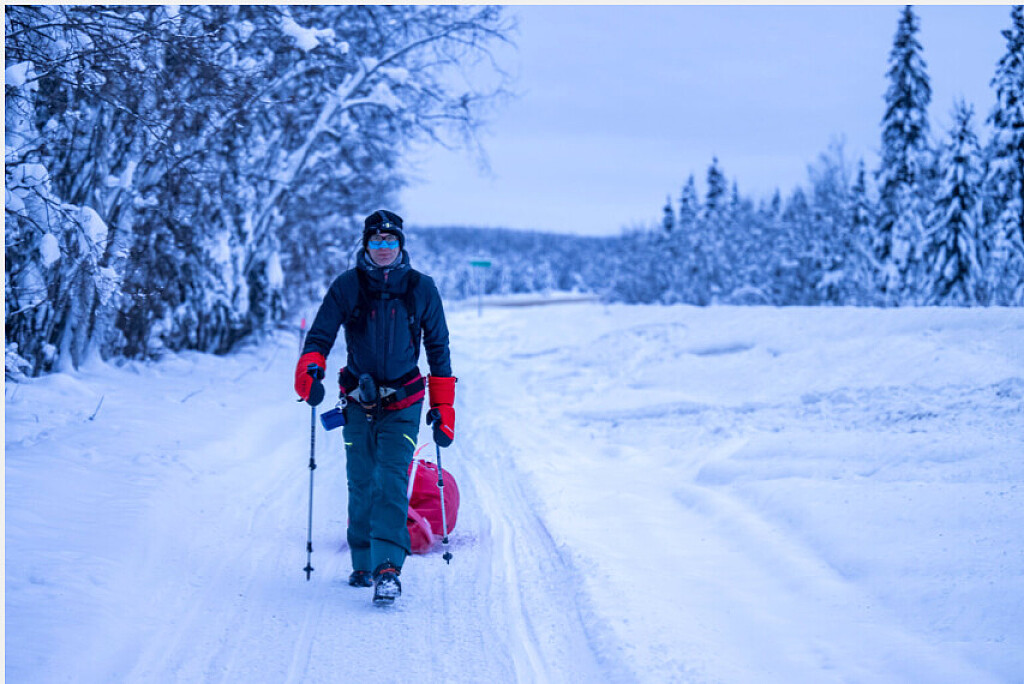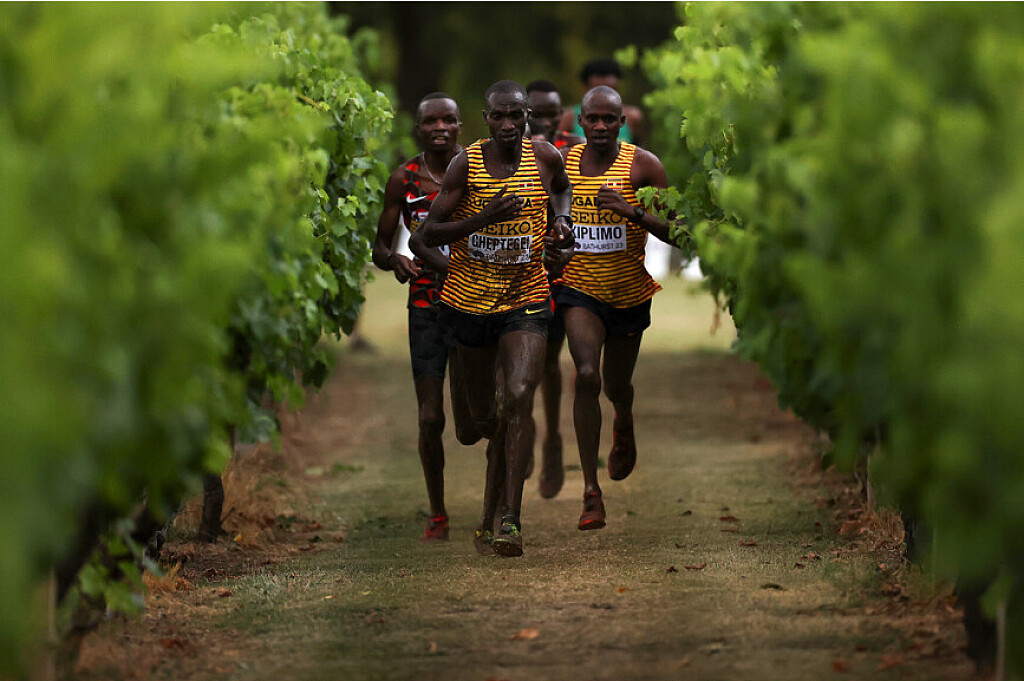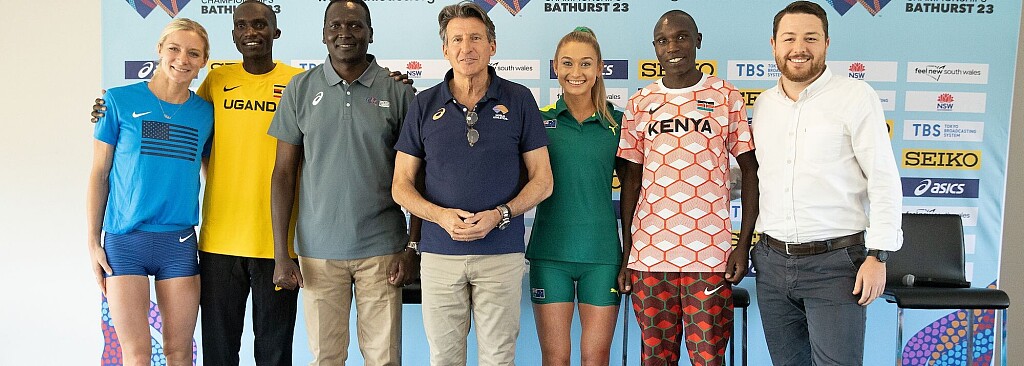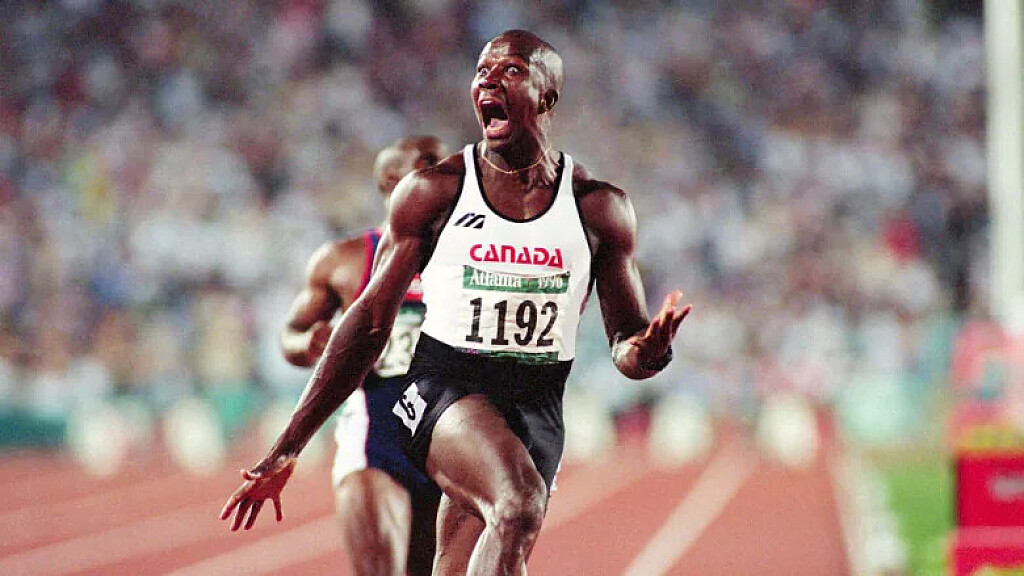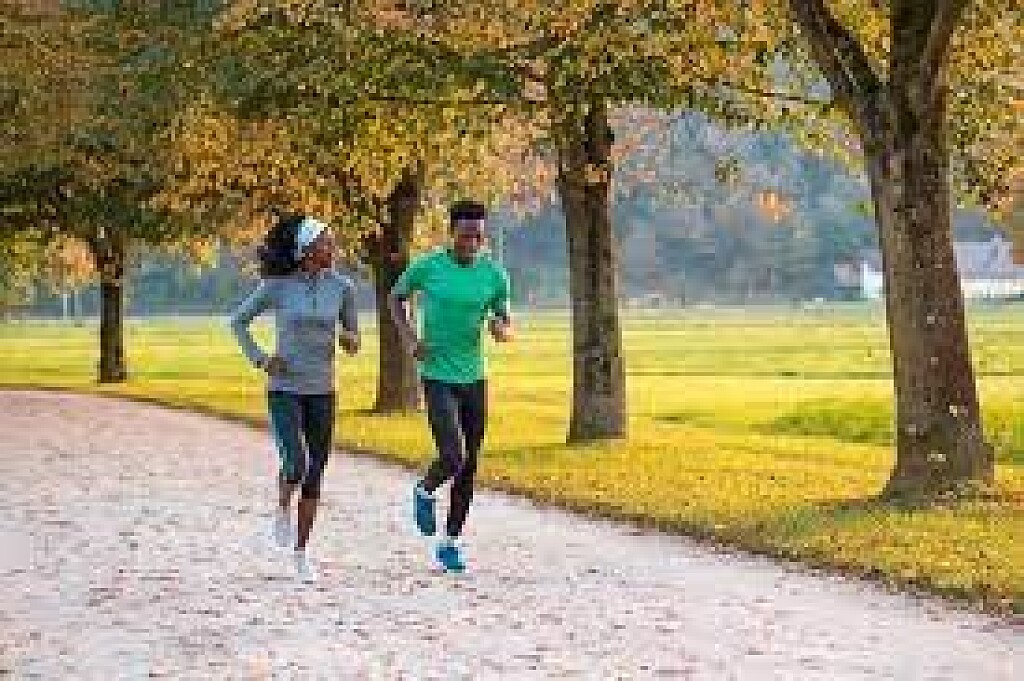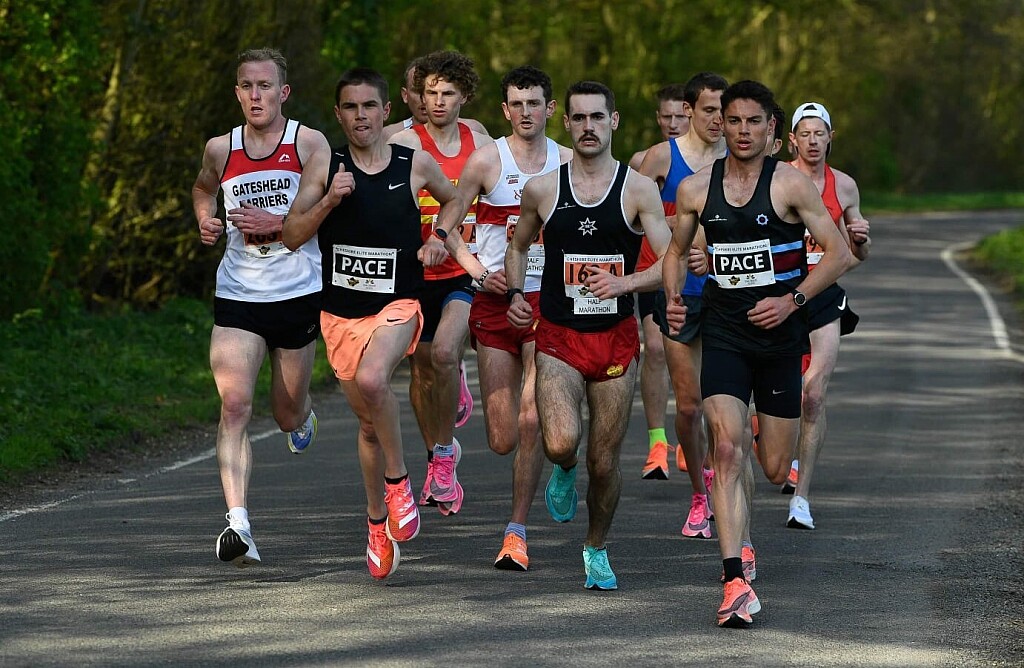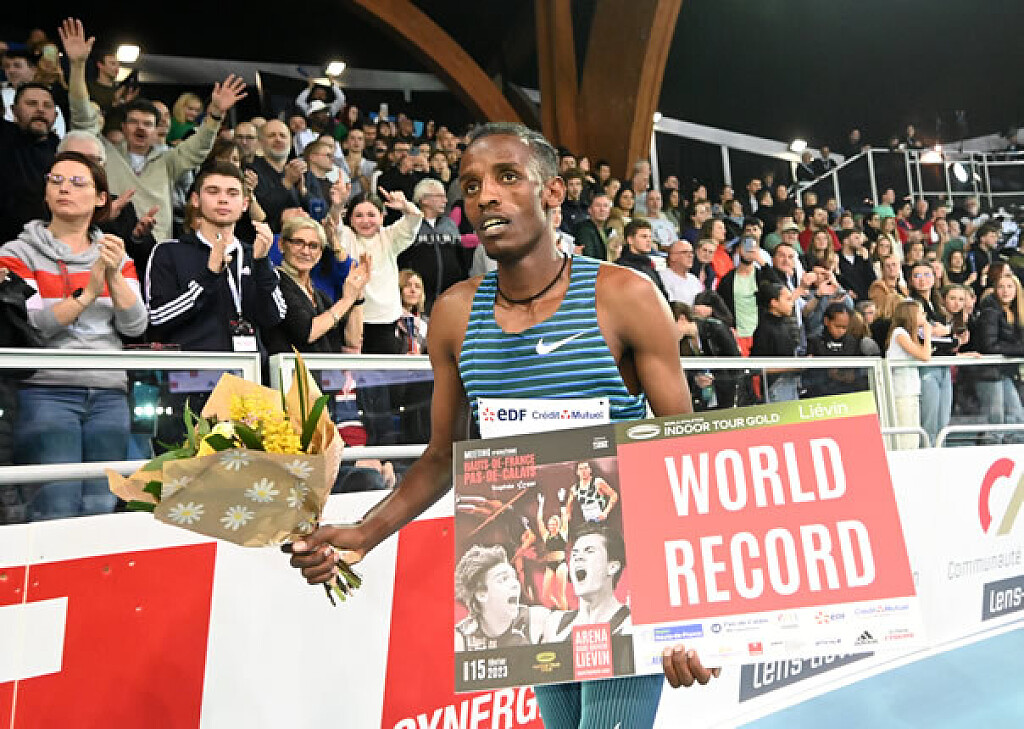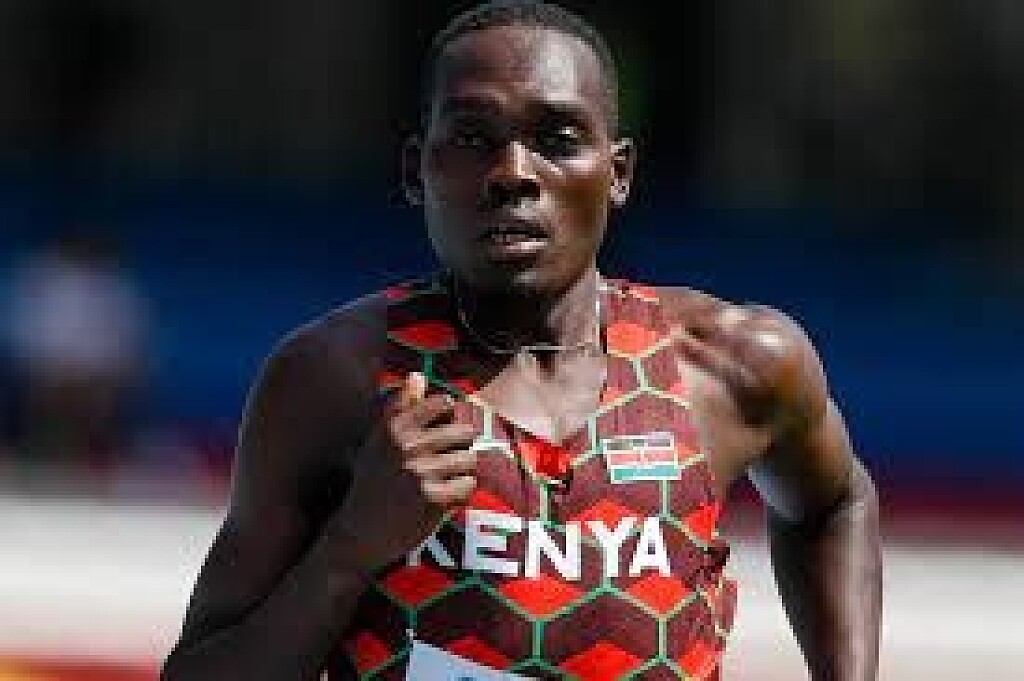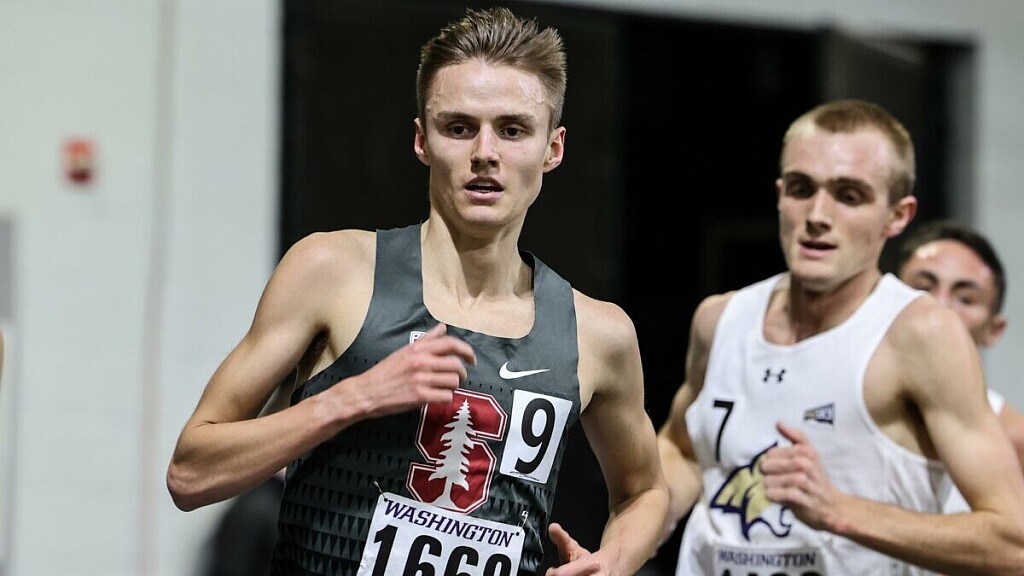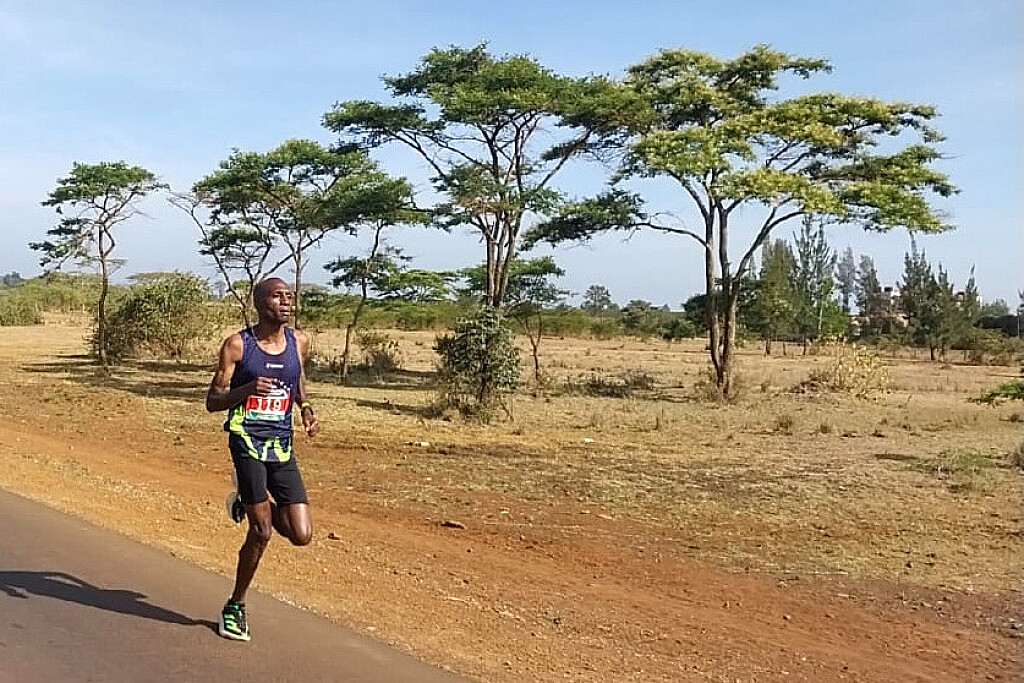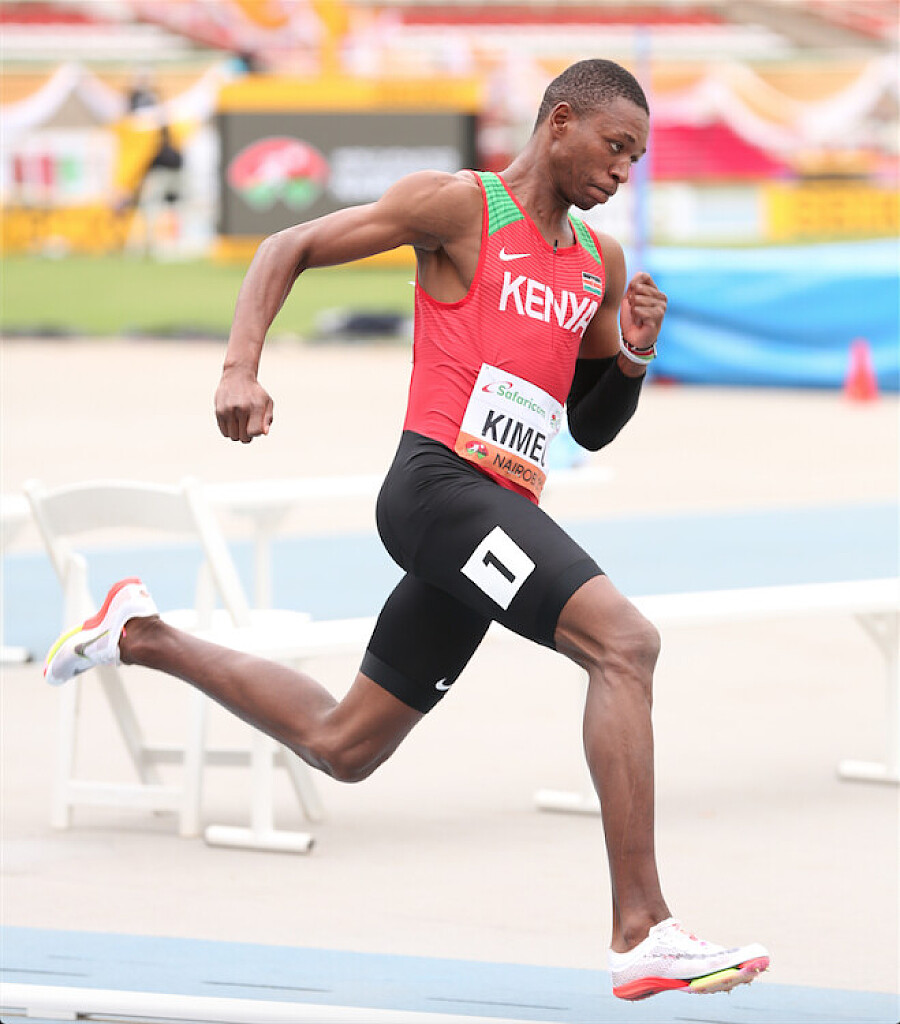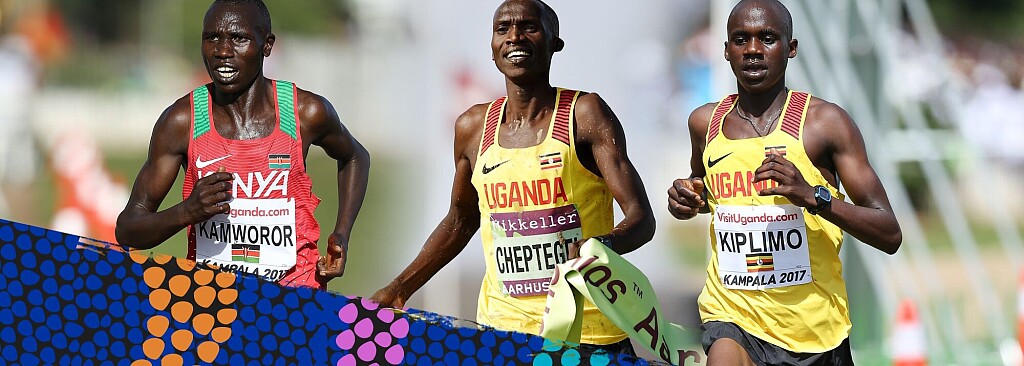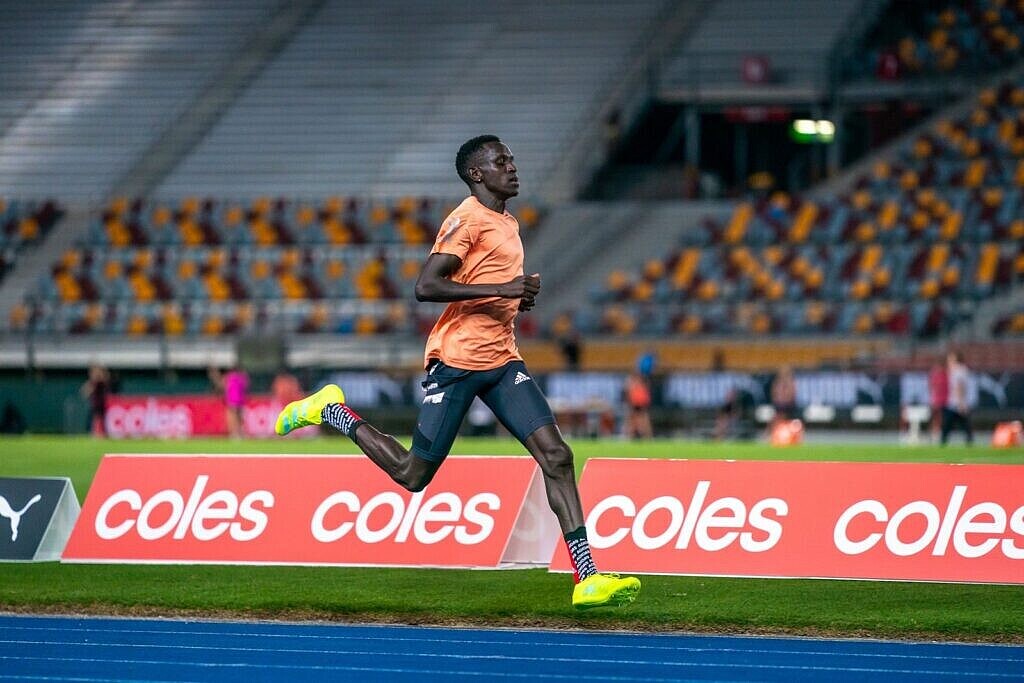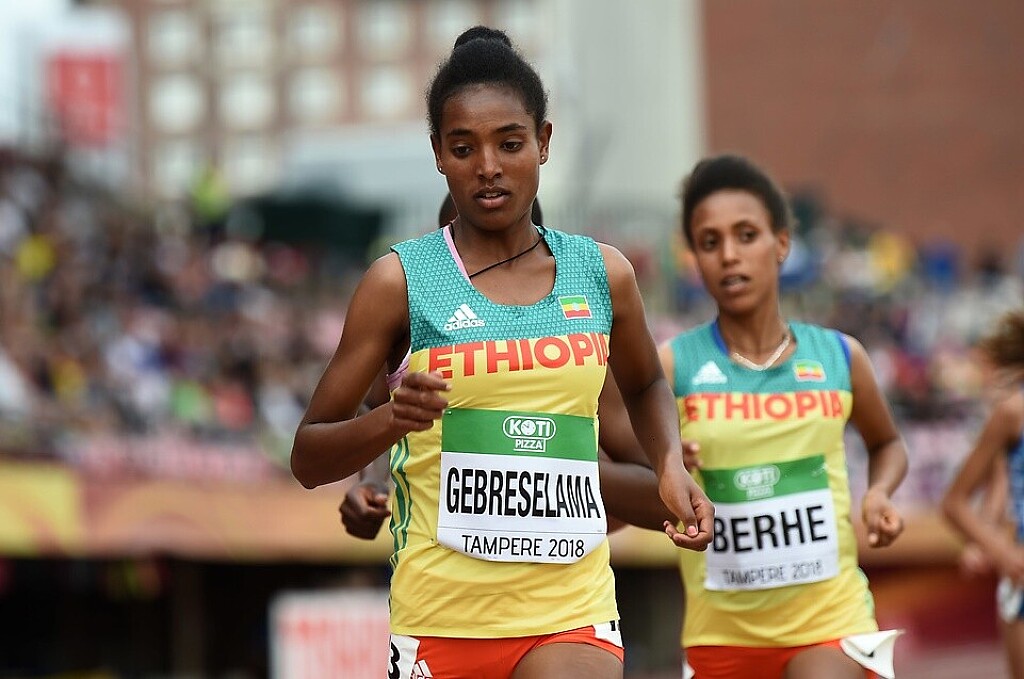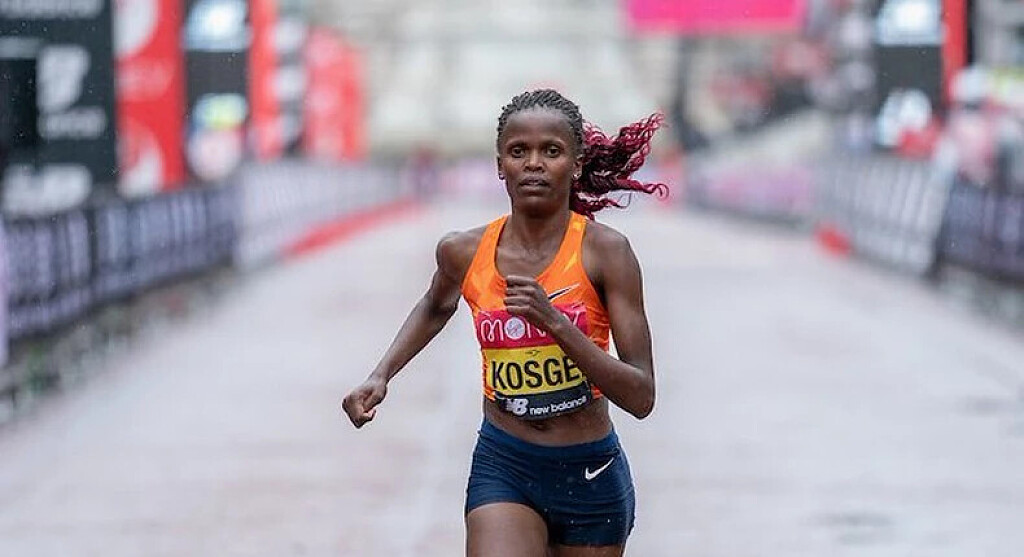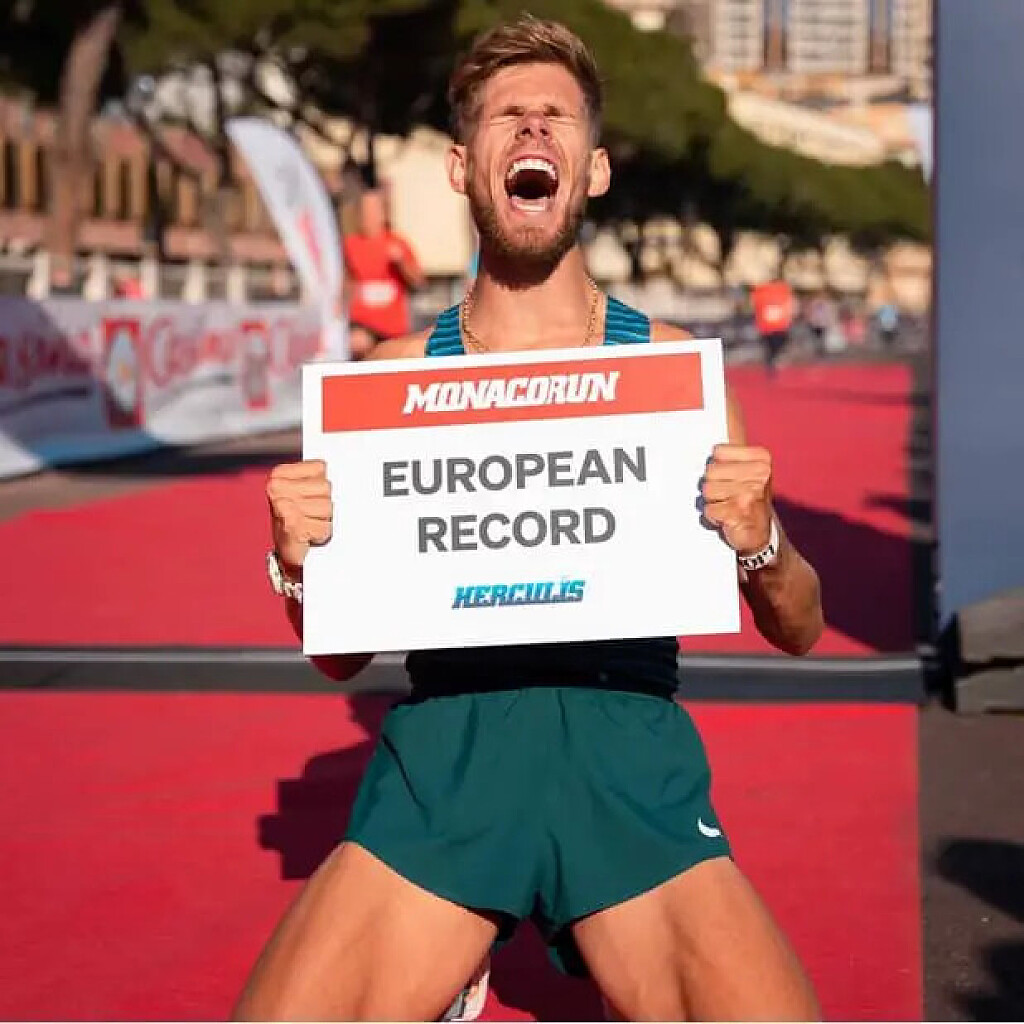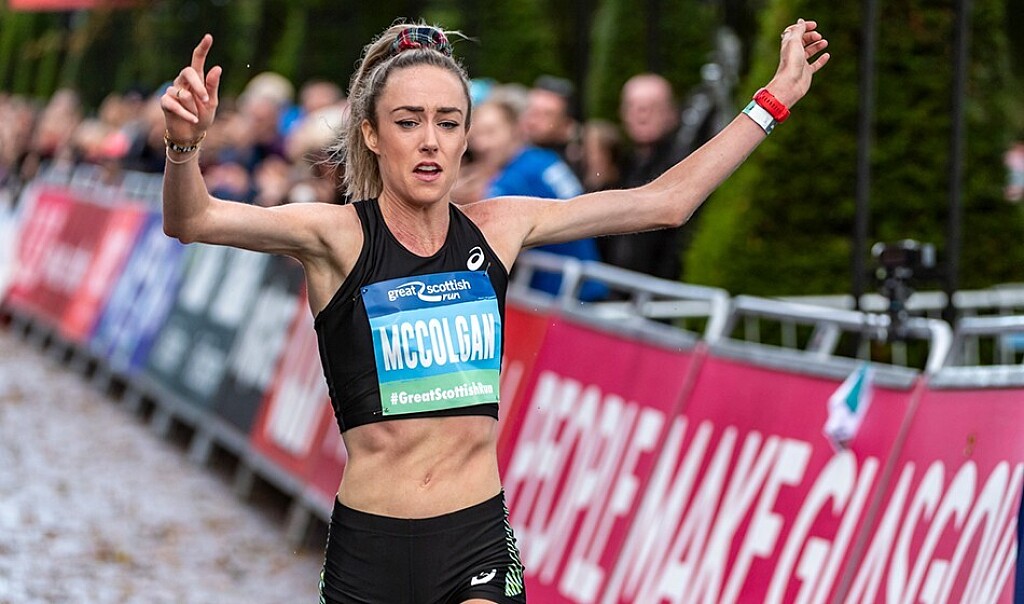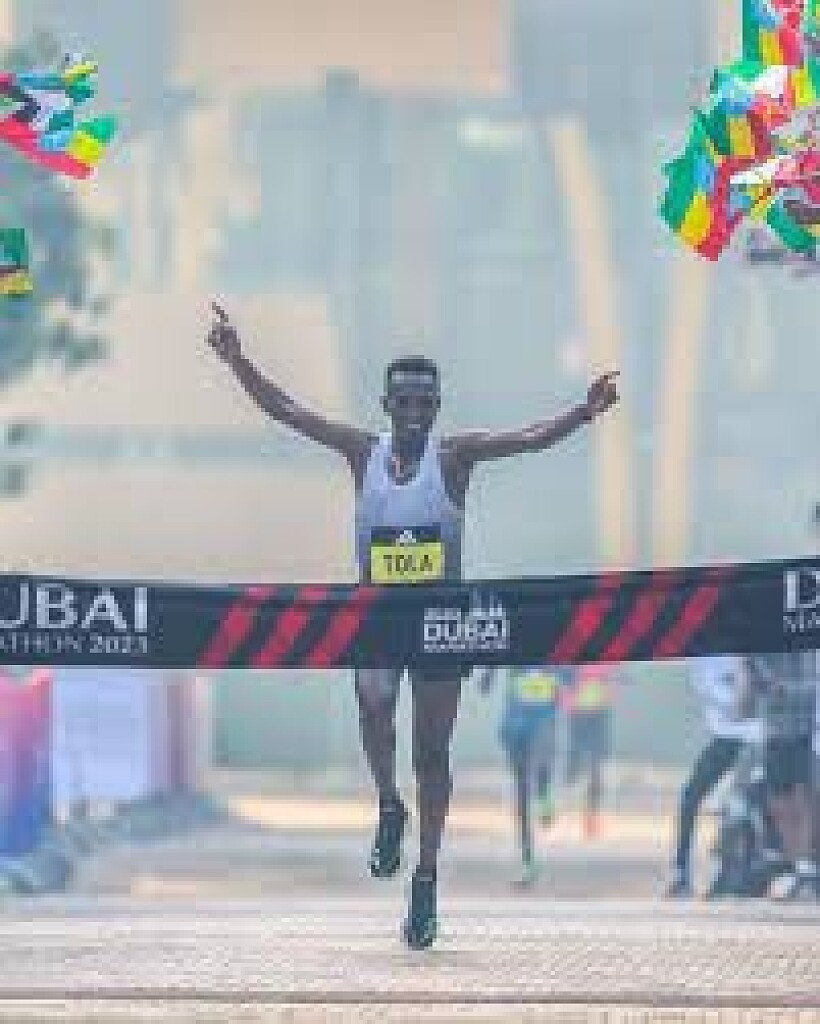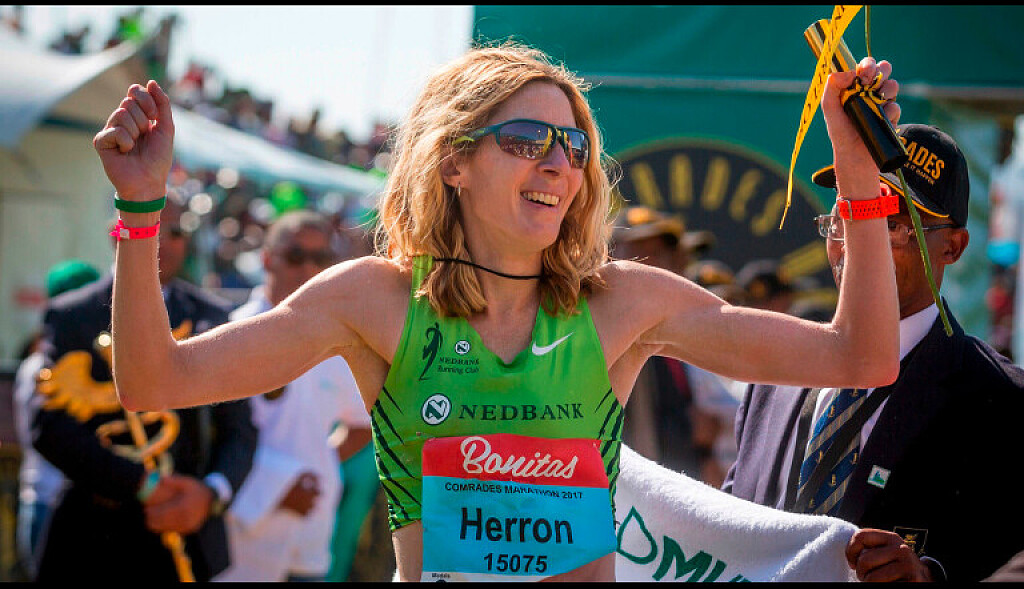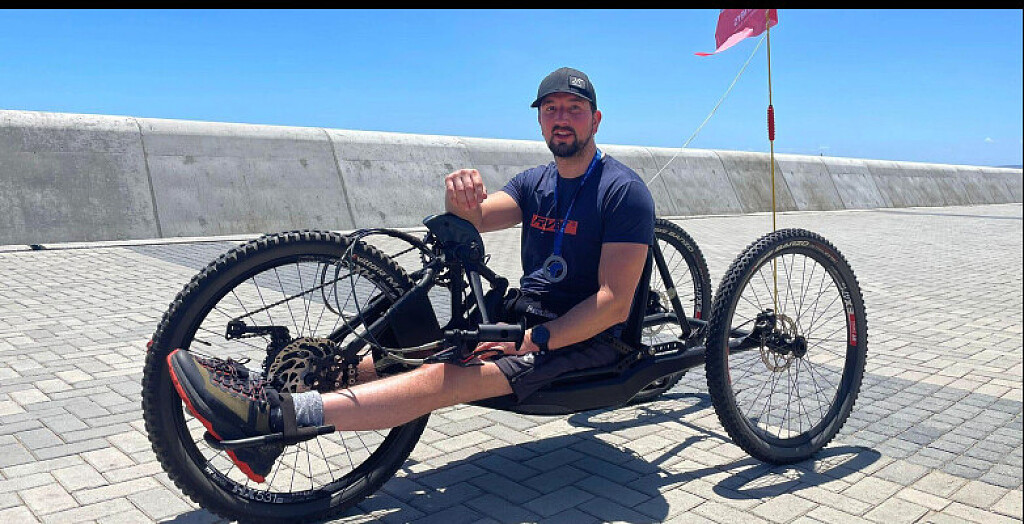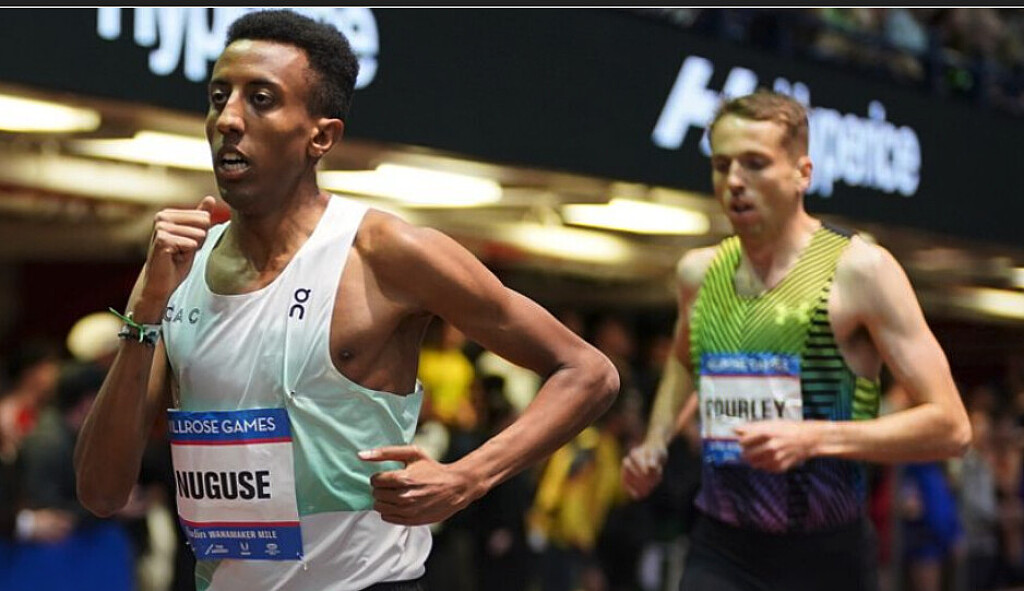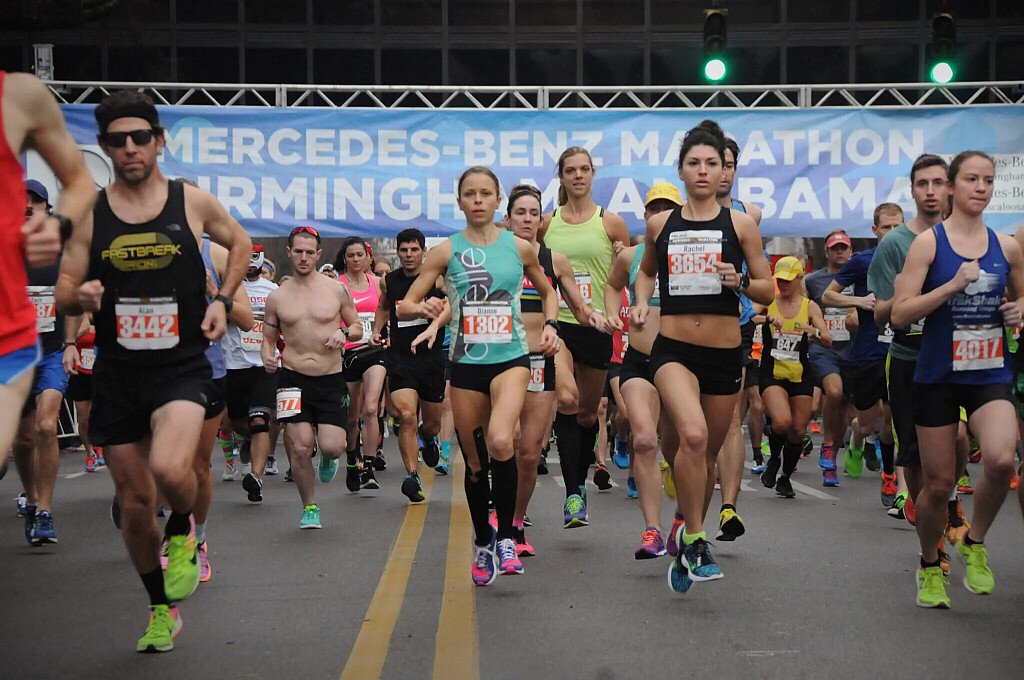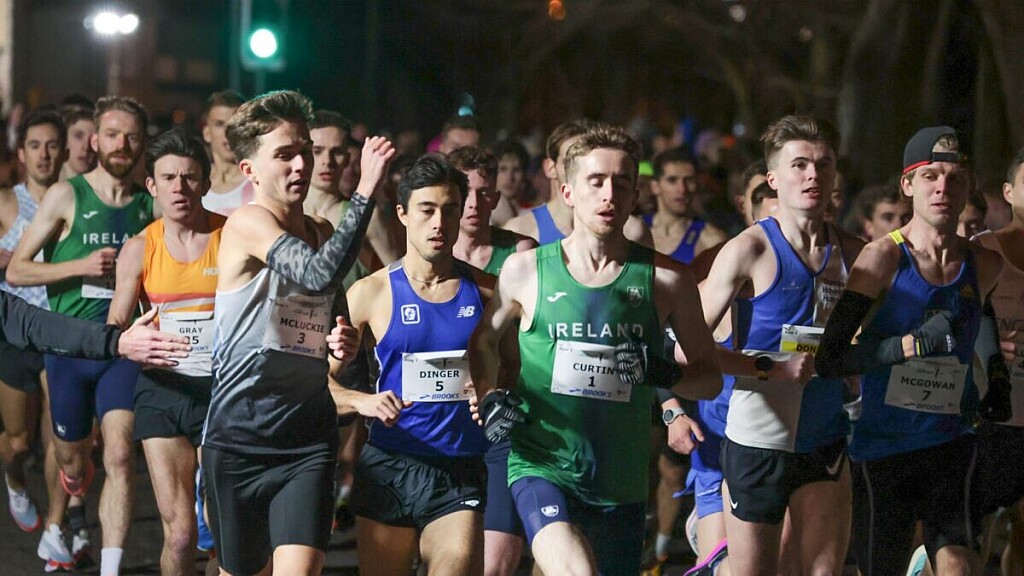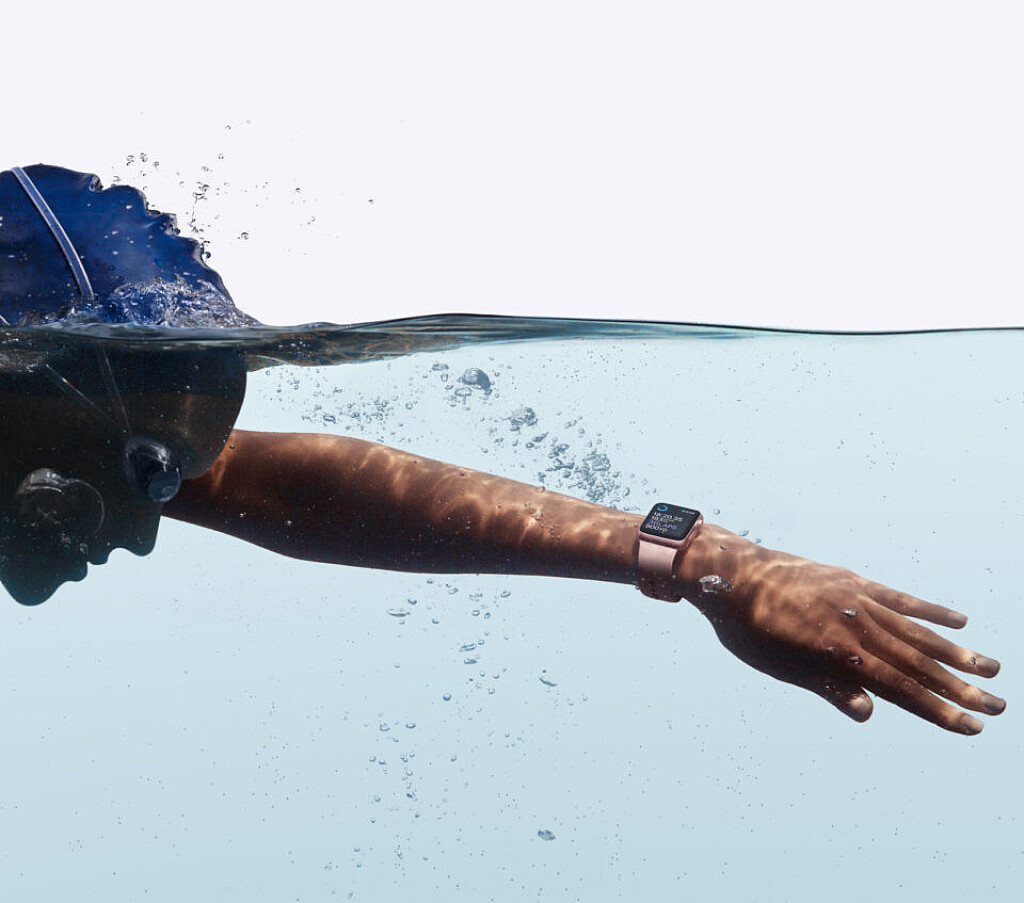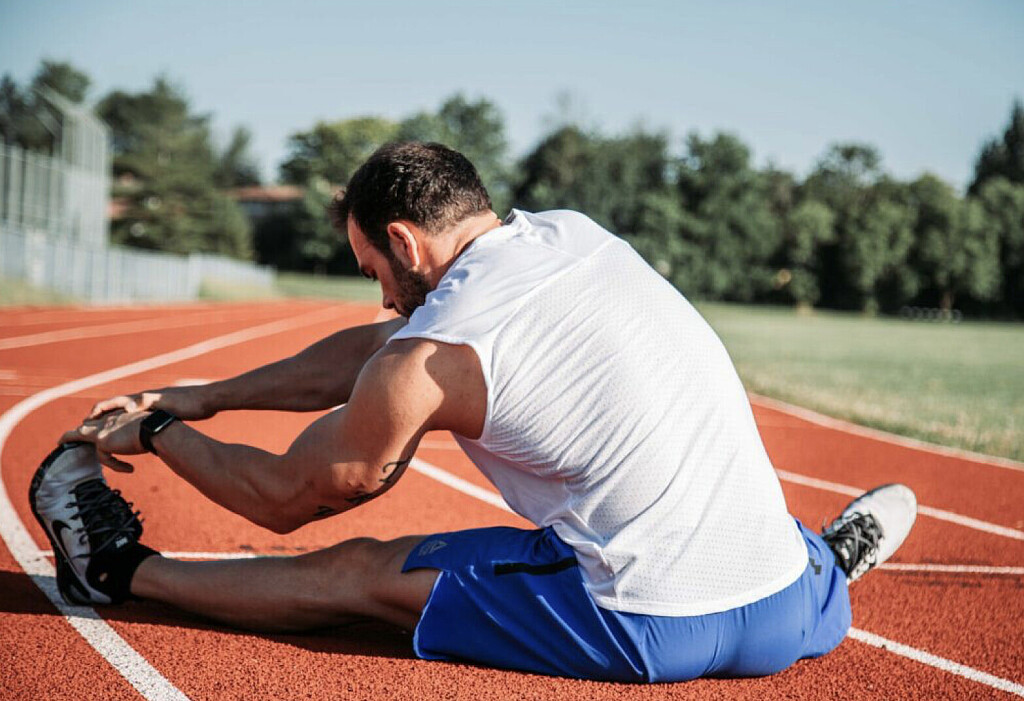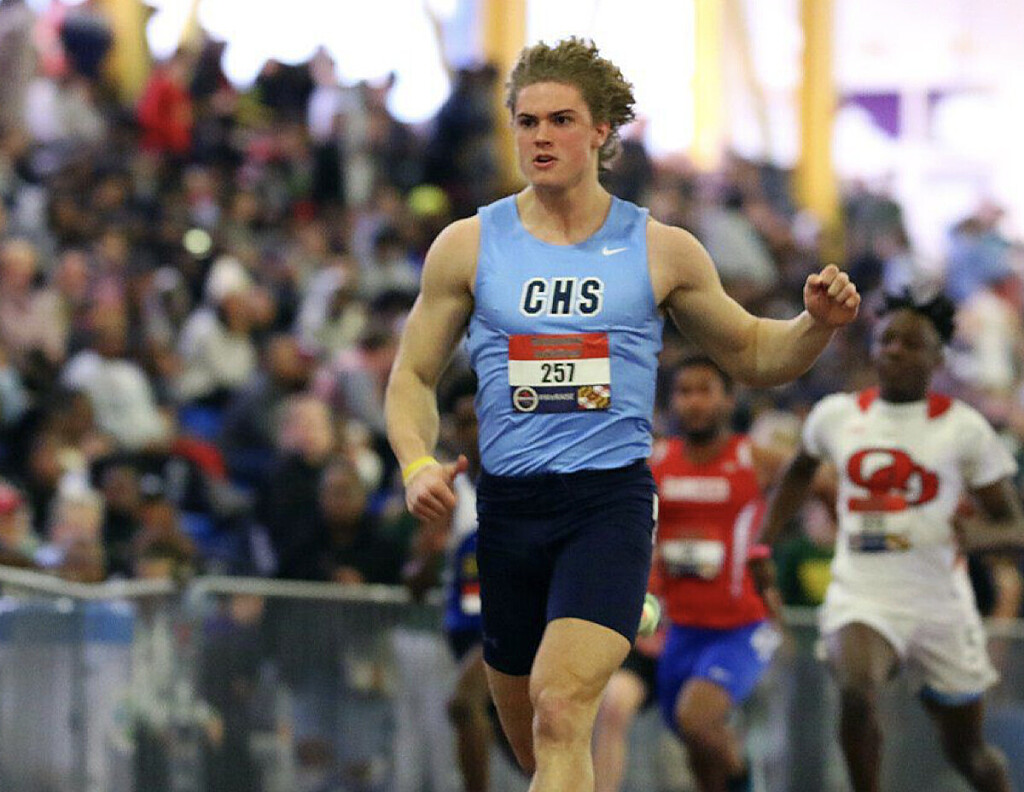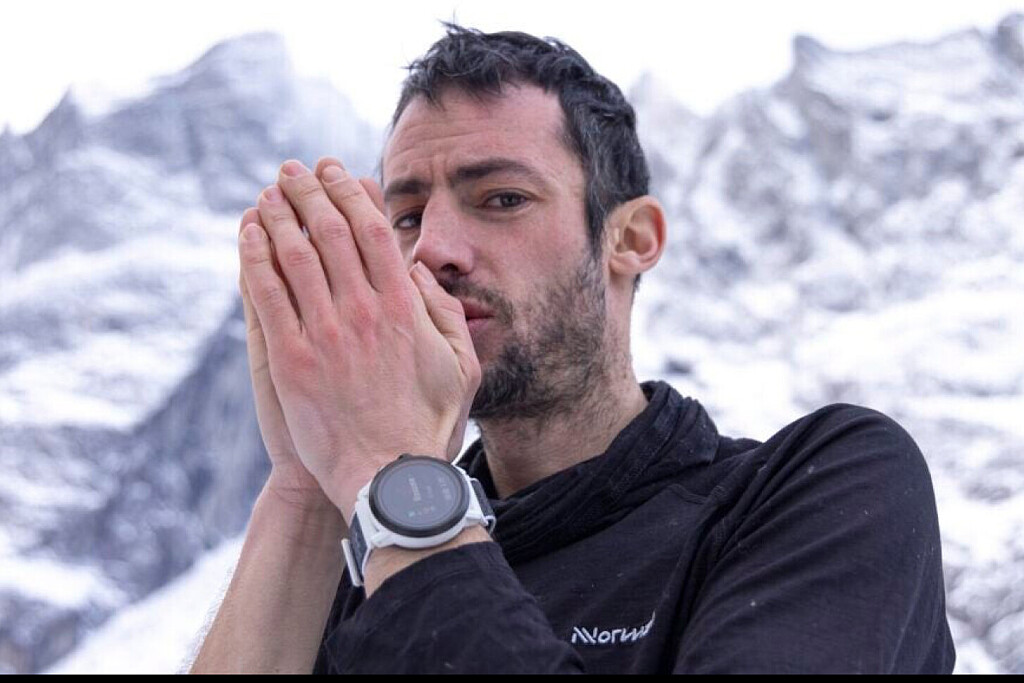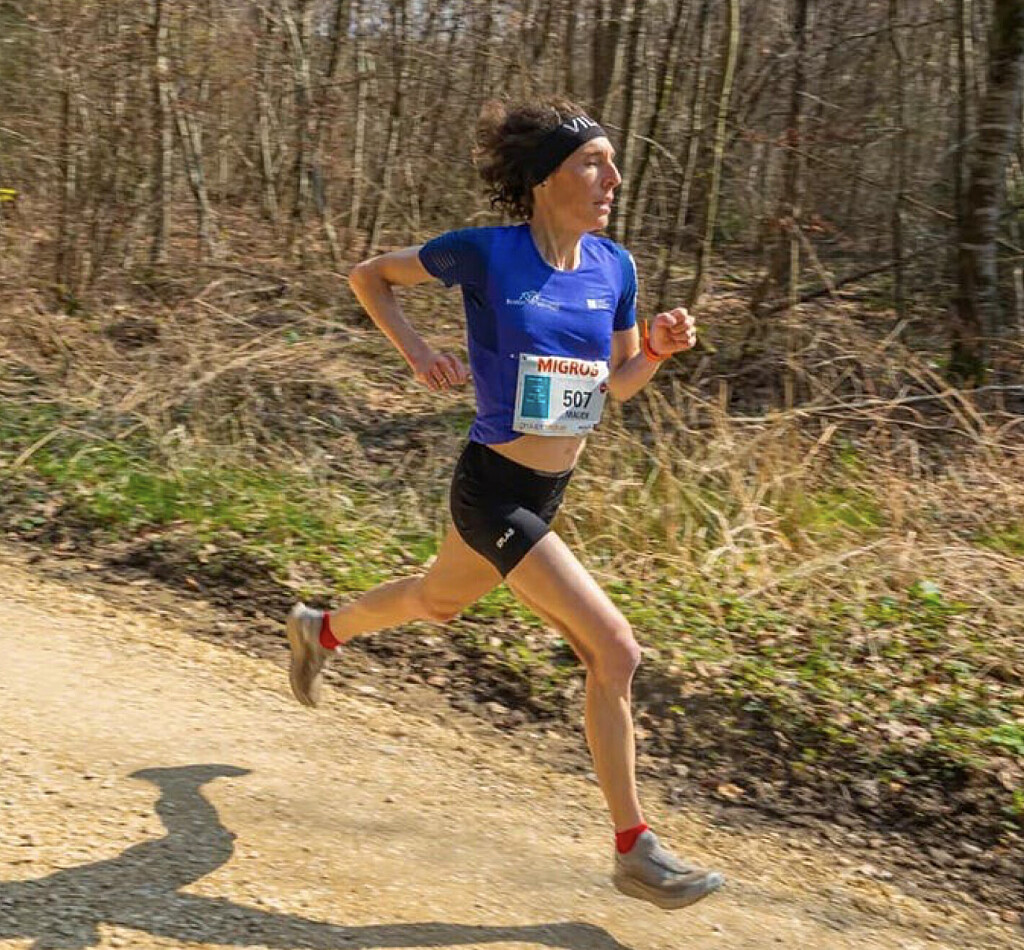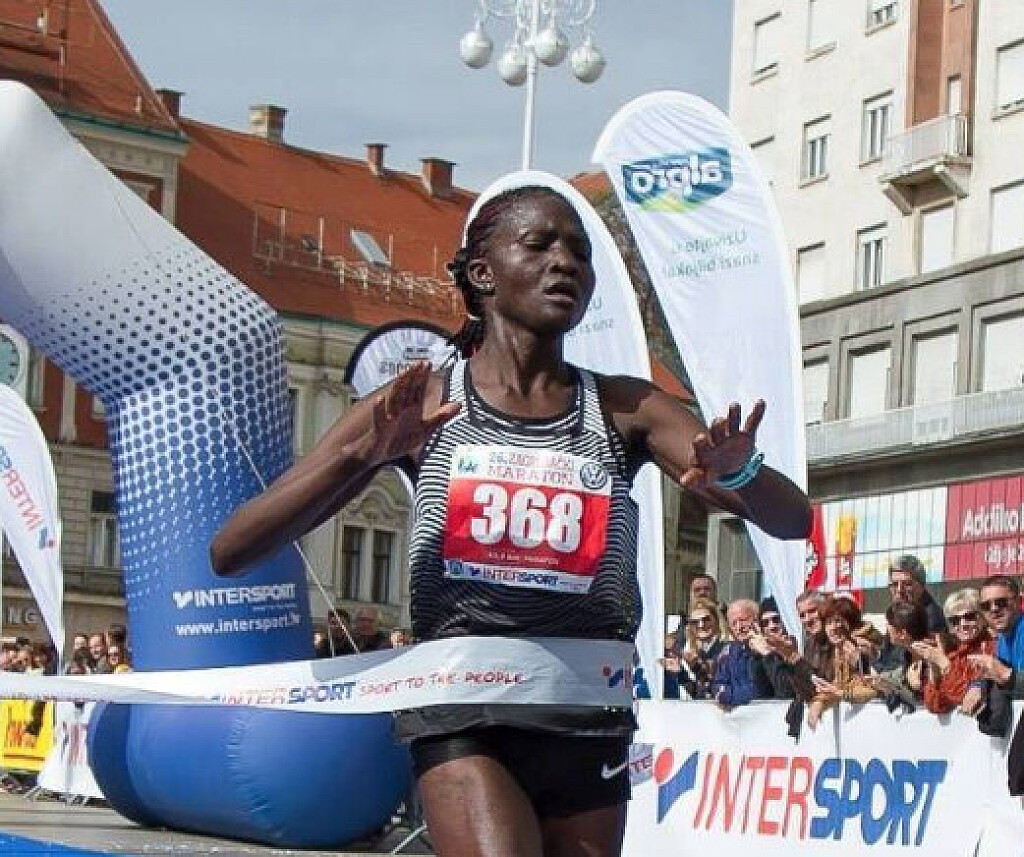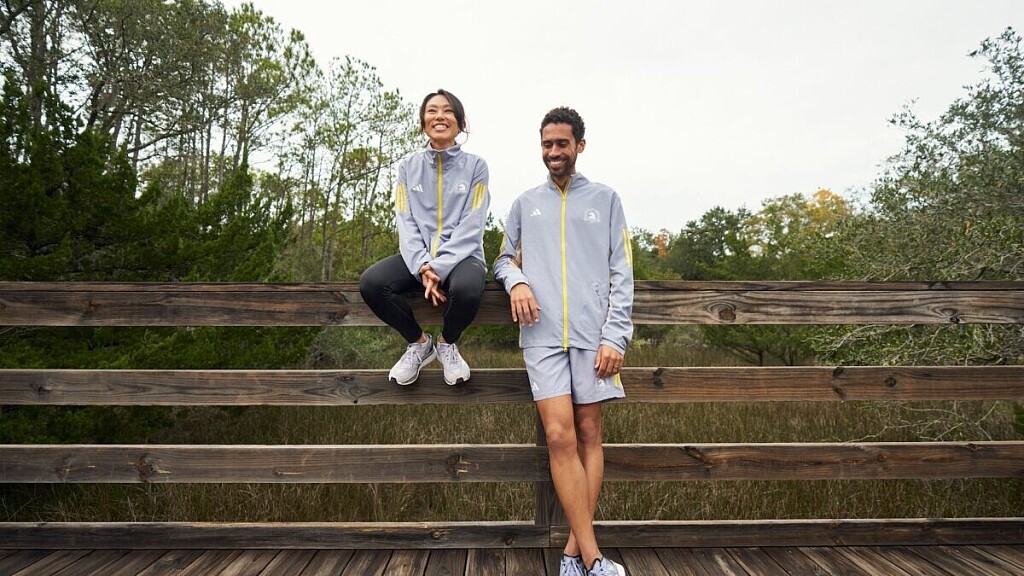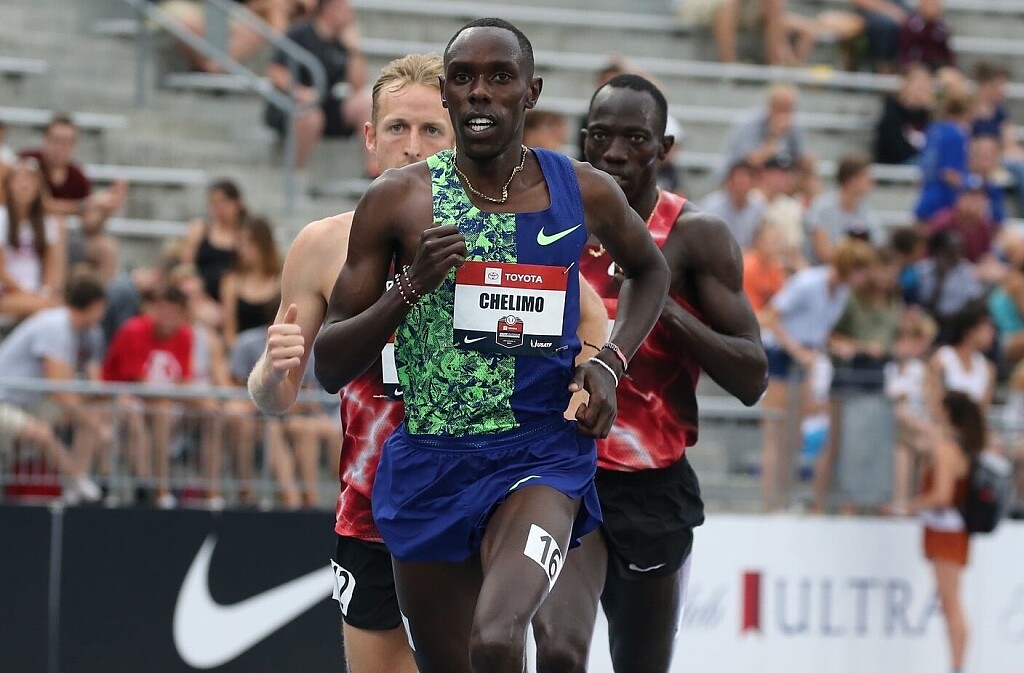Running News Daily
Running News Daily is edited by Bob Anderson in Mountain View, California USA and team in Thika Kenya, La Piedad Mexico, Bend Oregon, Chandler Arizona and Monforte da Beira Portugal. Send your news items to bob@mybestruns.com Advertising opportunities available. Over one million readers and growing. Train the Kenyan Way at KATA Running Retreat Kenya. (Kenyan Athletics Training Academy) in Thika Kenya. Opening in june 2024 KATA Running retreat Portugal. Learn more about Bob Anderson, MBR publisher and KATA director/owner, take a look at A Long Run the movie covering Bob's 50 race challenge.
Index to Daily Posts · Sign Up For Updates · Run The World Feed
Kimais, Jepkosgei and Langat were brilliant in Barcelona
Irine Jepchumba Kimais and Joyciline Jepkosgei both dipped under 65 minutes with two of the fastest women’s half marathon performances of all time, while Charles Kipkurui Langat completed a Kenyan double at the Edreams Mitja Zurich Marato Barcelona, a World Athletics Gold Label road race, on Sunday (19).
Both relatively unheralded victors set course records, Langat winning the men’s race in 58:53 and Kimais beating Jepkosgei, 1:04:37 to 1:04:46.
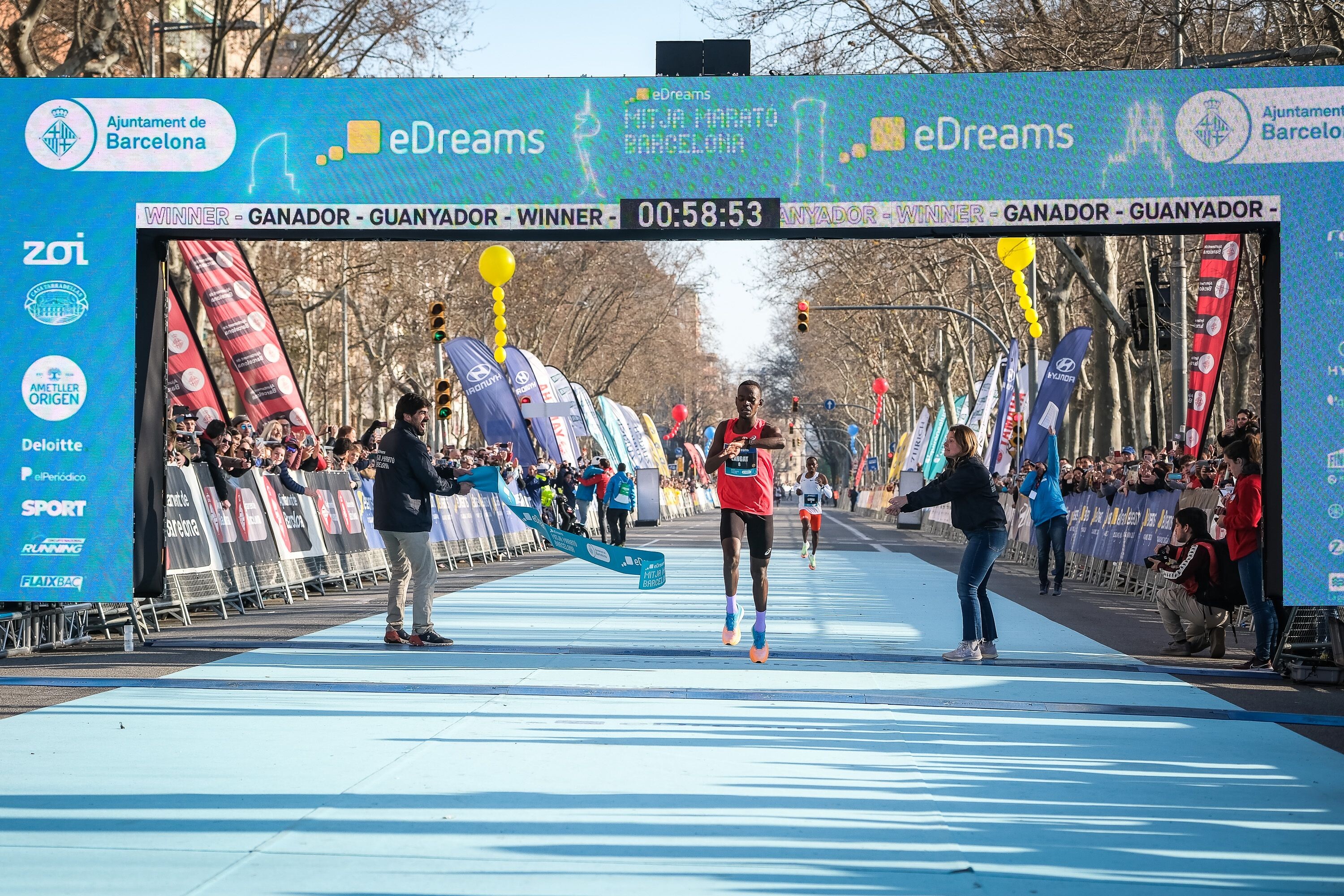
The women’s event was billed as a thrilling encounter between Kenya’s former world record-holder Jepkosgei and Ethiopia’s world 1500m record-holder Genzebe Dibaba, with the common goal of breaking Florence Kiplagat’s course record of 1:05:09, which was a world record when it was set in 2015, in their preparations for their next marathons in Boston and London, respectively.
The pacemaker set a steady 3:04/km tempo to lead a quintet featuring Kimais and Jepkosgei together with their Kenyan compatriots Catherine Relin and Gladys Chepkurui plus Dibaba, passing 5km in 15:19.
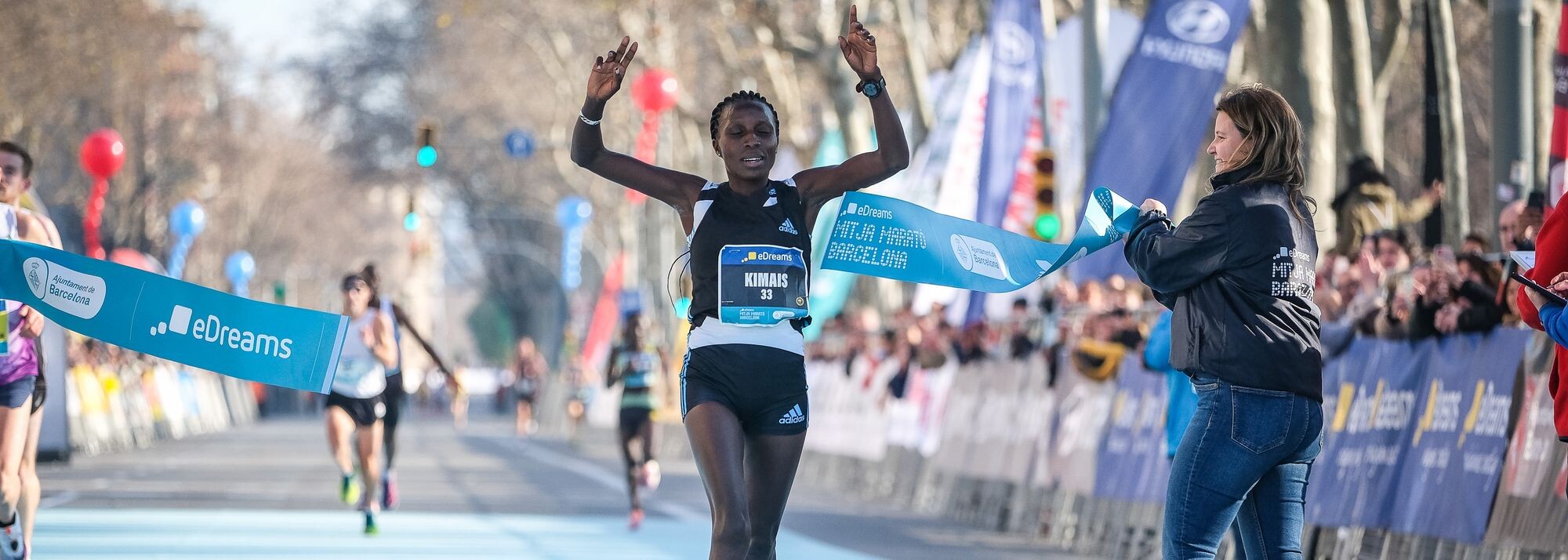
The rhythm remained brisk over the second 5km section and the leading group went through the 10km mark in 30:37, although Dibaba seemed to be in trouble and traveled some meters behind. Once the pacemaker stepped off, it was Kimais, a 1:06:03 specialist, who took charge of the race to leave Chepkurui and Dibaba behind by the 15km point. The trio reached that point in 45:58, but Relin also lost ground over the following kilometre and the race became a two-horse battle between Kimais and Jepkosgei.
Finally, Kimais’ relentless pace paid off and she dropped Jepkosgei just before the 20km point. By then, Kimais had built a three-second margin on Jepkosgei and she extended her lead over the final kilometer to romp home in a massive career best and course record of 1:04:37. Jepkosgei was second in 1:04:46, a PB that improves her previous best of 1:04:51 that was a world record when she achieved it in Valencia in 2017. Those performances put Kimais and Jepkosgei eighth and ninth respectively on the world all-time list.
Relin and Chepkurui completed a Kenyan top four, clocking 1:05:39 and 1:05:46, respectively. Dibaba had to settle for fifth place, recording the same time as Chepkurui.
“When I was given the chance to compete in Barcelona I didn’t hesitate, as I knew it was a very quick circuit,” said Kimais. “For me, it’s incredible to beat my compatriot Florence Kiplagat’s course record, which has stood unbeaten for many years.”
The men’s event kicked off at a frantic rhythm as the opening kilometer was covered in 2:43. The pacemaker slowed his speed over the following kilometers and the still large 15-strong leading group reached the 5km checkpoint in 14:03 with all the main favorites in close attendance, Ethiopia’s 2:02:48 marathon runner Birhanu Legese, his compatriot and defending champion Haftu Teklu and Olympic marathon silver medalist Abdi Nageeye of the Netherlands among them.
Surprisingly, Nageeye and then Teklu began to lose ground a short while later and the lead group had whittled down to five by the 10km point. Langat was joined by his Kenyan compatriots Solomon Kirwa Yego and Josphat Boit plus the Ethiopian pair of Legese and Gebrie Erikhun. That quartet timed 27:53 at that stage, right on schedule to break Teklu’s course record of 59:06 set last year.
Once the pacemaker dropped out of the race around the 12th kilometer, the athletes at the helm took turns at pacing duty to keep the speed alive. That pace proved to be too fast for Boit and Erikhun, who began to falter some 37 minutes into the race before the lead trio went through the 15km mark in 41:51.
Another thrilling Kenya versus Ethiopia battle was on the cards, with Langat and Legese pushing hard and Yego tucked in behind. The latter lost contact before reaching 20km and the race became a fascinating clash between Langat and Legese.
Once inside the closing kilometer, the 26-year-old Langat unleashed a powerful change of speed to break away from his more illustrious rival. At the tape, the Kenyan clocked a course record of 58:53, bettering his lifetime best by almost two minutes, while Legese also dipped under the 59-minute barrier for the first time thanks to a 58:59 clocking.
Yego completed the podium in 59:29 and finishing behind Boit and Erikhun was Germany’s European marathon champion Richard Ringer who ran 1:01:09 for sixth, one second ahead of Nageeye.
“It’s my first time here,” said Langat. “Honestly, I didn’t expect to break my PB by that much and dipping under 59 minutes has been a nice surprise for me.”
(02/20/2023) Views: 532 ⚡AMPby World Athletics
Course records fall at chilly Black Canyon 100K in Arizona
Temperatures were cooler than usual at Saturday’s Black Canyon 100K near Phoenix, Ariz., a Golden Ticket race for Western States Endurance Run. The race started just a degree or two above freezing, and gradually got warmer as the day wore on, resulting in some record-breaking finish times.
Anthony Costales of Salt Lake City, Utah, took the overall win in a new course record of 7:32:50 (20 minutes faster than Sage Canaday’s CR from 2016), improving on his fifth-place finish last year. Keely Henninger of Portland, Ore., won the women’s race in 8:45:30, three minutes ahead of Brittany Petersen’s CR from 2021, and 15th overall.
Tom Evans of the U.K. finished second, five minutes behind Costales, with Germany’s Janosh Kowalczyk third, in 7:40:00. All three were ahead of the previous course record. American pro triathlete Heather Jackson, who is relatively new to the trail running world, took second in the women’s race, in 7:47:59 (also under the previous CR), with Meghan Morgan third, in 8:53:52.
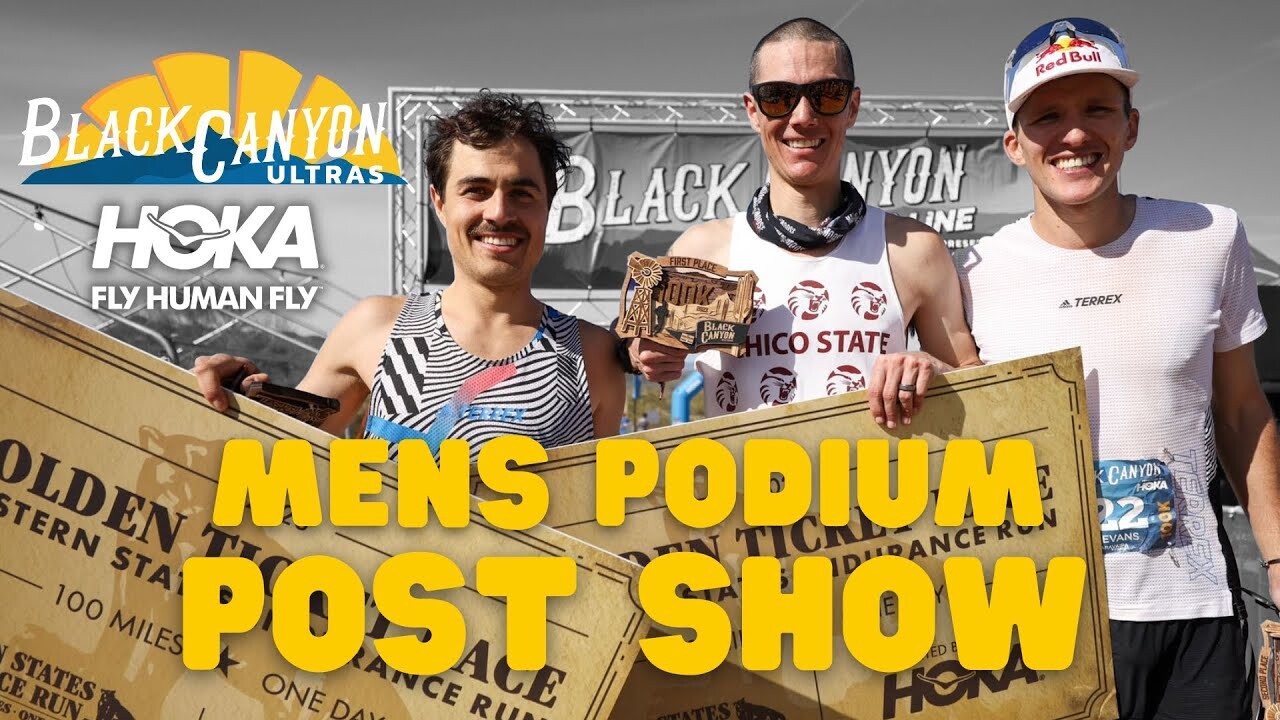
The first and second women and men receive automatic entry to the Western States Endurance Run, to be held June 23 in Olympic Valley, Calif.
Top Canadians

Elliot Cardin of Bromont, Que., was the fastest Canadian in the 100K race, snagging an eighth-place finish in 8:10:22, after finishing 14th in 2022. Mercedes Vince, another relative newcomer to the trail scene, was the top Canadian woman, finishing 14th, in 10:04:20.
The 60K race, which took place Sunday, was won by Joshua Park (4:37:10) and Mimmi Kotka of Sweden (4:55:46, for sixth overall).
(02/20/2023) Views: 652 ⚡AMPby Anne Francis
Black Canyon Ultras
The Black Canyon 100K trail race takes place on the world class Black Canyon Trail near Phoenix, Arizona. This 80 mile long trail features incredible single track trails on an old stagecoach route, this course traverses across high desert grasslands and crosses through several arroyos and deep canyons on a classic journey in the desert Southwest. This historic trail is...
more...How to Make Friends in Your Running Group, According to Experts
Social connections are essential for your health. Follow these tips to form more meaningful bonds.
Putting yourself out there and meeting people doesn’t get any easier the older you get (in fact, it can be harder the further you get into adulthood), but continuing to make new friends and maintain personal relationships is crucial to your overall health and well-being. And luckily, your local running group is an excellent resource for growing your social circle.
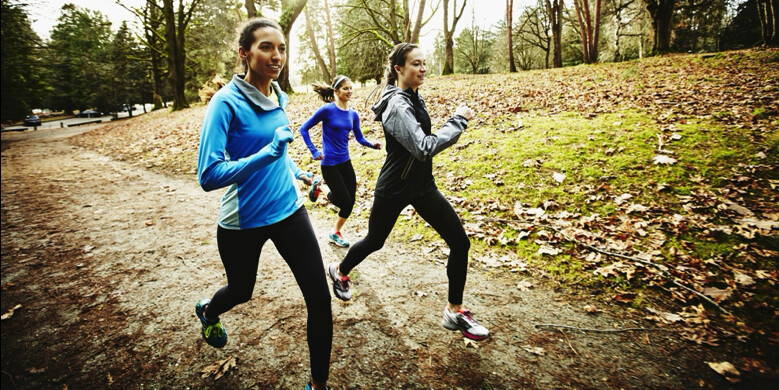
We asked experts—a sports psychologist and running group leaders—to weigh in on breaking the ice, making connections, and going from “running friends” to “real friends.” Whether you’ve yet to make your running group debut or have been attending a meet-up regularly and still feel like an outsider, read on for practical advice on how to make friends as an adult and learn why it’s so beneficial to do so.
The Benefits of Making Friend as an Adult
Research shows that starting around age 25, most peoples’ friendships begin to thin out as they move away from student life and toward adulthood and all of its responsibilities. There’s no longer a revolving door of young people who are eager to connect with their peers, folks move away for jobs and new opportunities, and those hours of previously unstructured time between classes, parties, and casual get-togethers get gobbled up by work, intimate relationships, and family obligations.
Simply put, we’re all busy, and plans with friends are often the first to get canceled when schedules are tight. But, studies show we may not have our priorities straight.
According to a recent research summary published in Annual Review of Public Health, evidence shows an association between lack of social connections and poorer health. “This evidence spans a range of physical and mental health outcomes, has been replicated across different populations and contexts, is independent of a range of potentially confounding factors, and demonstrates that the magnitude of effect rivals other risk factors for health and mortality,” the study reads. In other words, loneliness and isolation can make us sick and shorten our lives.
“The really fundamental feature of what keeps people happy and healthy and creates longevity is relationships,” says Jonathan Fader, Ph.D., a clinical and performance psychologist. But the reality is that some relationships last and others don’t, he says, which is why it’s a good idea to seek out new friendships while continuing to nurture existing ones. “If you think about your relationships as farmland, it just makes sense to keep planting,” he says.
Fader notes that most adults make friends through work and school because, in both environments, you engage in repeated activities with the same people. “So when you think about applying that to something like a running group, it really makes sense that you could make long-term friends that would not only have an impact on the activity of running but on the overall general wellbeing of your life,” he says.
The Advantages of Having Runners as Friends
While we wouldn’t say runners necessarily make better friends than anyone else, there are some unique, running-specific benefits to adding a few runners to your inner circle.
Crystal Cun, president of Prospect Park Track Club in Brooklyn, New York, puts accountability at the top of the list. “It’s having other people to motivate you to get out the door,” she says. “It’s knowing that when it is cold and dark in the winter, you have people waiting in the park for you to go running.” Even if you may be willing to let your training slide, you’re probably less inclined to disappoint a friend. The result is more consistent, year-round training.
The support only runners can provide to other runners is also a huge boon, says Roberto Mandje, head of training at New York Road Runners in New York City. Anyone who’s been training for a while knows first-hand that, in between PRs and moments of triumph, there are plenty of crappy workouts, races that suck, and injuries.
“If you’re training alone, you’re just one of one,” Mandje says. “But if you’re struggling in your training, you hit a rough patch or rough week, the fact that you have some of your running friends in the group that are going to be able to put their proverbial arm around you, or maybe even their literal arm, and say, ‘Hey, come on, we can do this,’ can make you realize that you’re not out there alone.”
If you want guidance and practical running advice, there’s no better source than a trusted running friend. “There’s the knowledge base and the support of having all these runners around you who can share tips on training and cross-training and injury prevention. And you can talk about shoes and gear with them, and they can give you recommendations,” Cun says. “And it’s unfiltered, unbiased opinions, unlike anything you can find on the internet. And that is super, super valuable.”
Tips for Making Friends Through Your Running Group
Anyone who’s ever run with a group knows it’s easy (and perfectly acceptable) to just show up, put in the miles, and then head home. So, how do you transition from fellow runner to friendly acquaintance to friend? Our experts count the ways:
First, find the right group
Some running groups are more conducive to making friends than others. “I think it’s usually evident on a club’s website or social media feed,” Cun says.
She recommends paying attention to the tone—is it friendly, relaxed, and welcoming? Do they program social events outside of running? Do they make it easy for new members to join? If a group is more competitive, you’ll probably be able to tell. And if not, it’s worth an email to the group leader to get clarity on the group’s goal and a sense of the social interactions between members.
Cun notes that an active social media presence can also be a good sign, as members can easily use tools like Facebook groups and Discord to connect offline and between in-person meet-ups.
Share your goals
As a new member, sharing your running goals with others can be intimidating, as it demands a certain amount of vulnerability. But if there’s an opportunity to open up—perhaps during those circle introductions—Mandje encourages new runners to put it all out there.
“People are going to gravitate toward that because they want to be supportive,” Mandje says. “Obviously, if you don’t want to, you don’t have to. But the more you keep to yourself, the harder it’s going to be to have people invest in you and even open up to you because maybe they don’t want to intrude.”
Leave your ego at home
Confidence is attractive, but an inflated ego is a turn-off. Bragging about your accomplishments or redirecting every conversation back to your training will get old fast for other members. “Be aware that you’re in a group setting, and it’s not always about you; it’s about the group,” Mandje says.
Also, don’t race people during group runs. “I’ve seen people come to group workouts and look around and be like, ‘You’re my competition today.’ They won’t come out and say it that overtly, but you start to see workouts that are getting a bit more competitive than they should be,” Mandje says. “That can be one way to alienate people because people come to feel supported, get a run in, and feel good about themselves.”
Lead with curiosity
This tip applies to all kinds of social settings, not just group runs, Fader explains. “Be curious. What is something you want to learn about the other person?” he says. For example, are they training for a race? When and where do they do their long runs? How do they like their shoes? Asking these easy, low-stakes questions can help you establish an initial rapport that you can build on over time.
“After a certain number of miles, you have to stop talking about running because there’s nothing left to talk about,” Cun says. “You have to move beyond that to other topics. Like, what is your family like? What are you doing this weekend? What are your plans for the holidays?”
Plan around group runs
Once you’ve become friendly with a few fellow runners, try suggesting a postrun activity. Grabbing a coffee or a beer and chatting for an hour is a low-commitment ask, and making the outing a group activity takes off even more of the pressure. You can approach a few people the day of the run.
Or, if your group has a social media presence, you can post something like, “Anyone interested in grabbing a drink on Saturday?” a few days in advance.
If it doesn’t work out, try not to take it personally. “The reason this is hard is because people fear rejection,” Fader says. “So what if someone says no? You’re not made of sand or salt. You’re not going to melt. The bigger issue is not how you do it. It’s realizing it’s okay if someone says no.”
Volunteer at events
“If your running club has volunteer opportunities, I think that is a great way to meet people,” Cun says. Whether you’re handing out bibs, serving as a race marshal, or setting up start and finish lines, there’s bound to be some standing-around time during which you can chat with fellow volunteers. “It’s another way to get to know people, and it doesn’t necessarily have to be the people who are running the exact same pace as you,” Cun adds.
Pace yourself
For a more introverted runner, just showing up to a running group may be a big step outside of their comfort zone—and that’s okay. Not everyone is comfortable opening up to people immediately, and even if it takes a few runs to have a conversation with someone, that’s a win. “I think being authentic to who you are is part of that runner journey, and you shouldn’t pretend to be something you’re not,” Mandje says.
Keep showing up
“To get to the running friend level, you need to run together consistently,” Cun says. Rather than treating group runs like one-off events or drop-in workouts, think about how they factor into your overall training plan and commit to attending the same ones every week. As you get to know your fellow runners week after week, they’ll also see that you’re dependable, which is an important quality in any friend.
(02/19/2023) Views: 693 ⚡AMPby Runner’s World
Brown graduate, 26, named in Forbes 30 under 30, collapses and dies after completing AZ marathon
A 26-year-old Brown graduate, who was named in Forbes 30 Under 30 for his newsletter company 1440 Media, collapsed and died after completing an Arizonamarathon.
Pierre Lipton, of Providence, Rhode Island, completed the Meza Marathon in 3 hours, 10 minutes, and 5 seconds on February 4, just 15 minutes before his girlfriend and 'love of his life' Eleanor Pereboom.
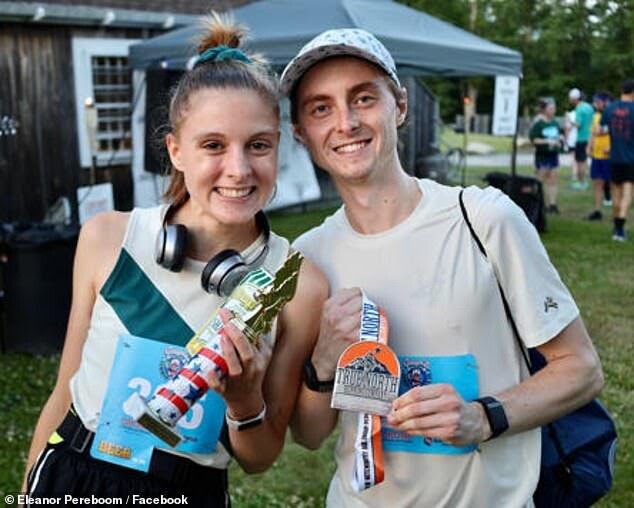
Within those 15 minutes, where she assumed her boyfriend was celebrating his newest achievement, he had actually collapsed into paramedic's arms just moments after crossing the finish line from an unknown cause, which may have been a heart condition caused by electrolyte imbalance.
After chugging a bottle of water, Pereboom had gone to find Lipton and texted him to ask where he was. When he didn't respond, she called him. When that went unanswered, she used a phone tracker to see where he was and was terrified to find his location to be at a hospital.

'That’s when I started to get worried,' she told the Boston Globe.
She raced to find an official to talk to, who informed her that he 'basically fell right into the arms of paramedics.'
'They tried to do CPR. They tried everything. We still don’t know what happened,' Pereboom said (second photo).
Lipton's father, Jordan Lipton, who is an emergency medicine specialist, theorized that his son's body had a 'sudden electrolyte imbalance that caused arrhythmia' - a medical condition that causes an irregular heartbeat.
Although his actual cause of death is currently unknown, Jordan said his son was 'healthy' and 'took such good care of himself.'
The avid runner - who had a dream of completing every major marathon - avoided alcohol and caffeine while training and made sure to 'shake out his arms, relax his shoulders, check his form, and make sure he had a smile on his face' every mile, his family and girlfriend said.
Even the running conditions were good on February 4, with temperatures ranging between 49 and 69 degrees. Lipton showed no sign of distress or illness before collapsing.
He kissed Pereboom at the starting line, and even appeared relaxed and ready to go for a few more miles when he crossed the finish line after completing 26.2 miles.
It was just moments later that the Brown graduate, who studied economics and Middle Eastern studies, would collapse and be rushed to the hospital.
Lipton wasn't always a runner, but had enjoyed sports and movement, especially soccer, his whole life. He dreamed of playing on the national Tonga team - the South Pacific country where his mother was born.
However, after he suffered an eye injury, he began running alongside Pereboom and it became their 'lifestyle' after they caught the 'bug.'
'He has always loved movement and exercise. He needed to be doing something,' Pereboom said.
They decided to run in the Providence Half Marathon in May 2022 despite thinking it 'sounded hard.'
'But we will do it together,' Pereboom said. 'We did everything together.'
They became close with the running community in Providence and would often be seen at Narragansett Beer's brewery on Wednesday nights, joining the Gansett Run Club, and took part in the night track workouts at Hope High School on Tuesdays.
Pereboom said that no matter how hard the training got, her boyfriend always had a smile on his face.
His family now remembers him for his love of traveling and his intelligence. The Brown graduate spoke three languages - English, Spanish, and Arabic - and was learning Italian for an upcoming trip in May.
He also liked to build things with Legos and also enjoyed building new business ventures.
Lipton had been named in Forbes 30 Under 30 for 1440 Media - a daily emailed newsletter of 'unbiased' news that was named after the year the printing press was invented and the number of minutes in a day, according to the Boston Globe.
The Chicago-based newsletter has more than 2million subscribers. Lipton founded it in 2018 with Venture Capitalist Tim Huelskamp and Capitol Hill Scientist Andrew Steigerwald.
"He never did anything less than 100 percent," Pereboom said.
Jordan said his son had always thought there was too much polarization happening in the media and had created the newsletter as a way to give people just the facts.
'He wanted to get rid of fake news,' Jordan told the Boston Globe. 'He thought they could provide more objective news that states the facts and allows people, who live next door to each other and might have nothing in common, to come together.'
Lipton had often spent his time in high school doing just that. He volunteered in Panama, teaching orphans English and math. In college, he created a company, VitaLives, that aimed at reducing malnutrition and vitamin deficiency, the Globe reported.
He even donated his organs after death.
His sister, Adelina Lipton, also said her brother was her go-to person for 'advice' and that he 'would be the first to call and talk everything over.' When her dog was in the hospital, she recalled her brother 'talking to me for hours.'
Throughout the pandemic, Pereboom and Lipton fostered dogs and eventually adopted one named Appa - after the Avatar: The Last Airbender character.
He was also named in Forbes 30 Under 30 for his 'unbiased' newsletter 1440 Media, which emails 2million subscribers daily with just the facts
His mother, Professor Siu Challons-Lipton, also said her son 'lived life to the fullest in every way.'
As for the 'love of his life,' Pereboom will forever remember their first date, which is called the 'weirdest first date, but also perfect.'
Lipton had asked her to go to Trader Joe's with him to buy a bunch of snacks and then eat them by the water.
'We bought every single snack with an animal theme. We went to Save the Bay and sat on the rocks for I don’t know how long. It was dark by the time we left. We kept talking, and he kept thinking of more incredible things to do together.
'He didn’t want to just be on campus like everybody else,' she recalled.
His family has started a GoFundMe for charitable contributions and said a philanthropic organization will be set up in his honor to help those facing food insecurity, and provide environmental protection and restoration, physical activity programs for the underprivileged, and help animal welfare.
(02/19/2023) Views: 781 ⚡AMPby Alyssa Guzman (UK Dailymail)
What an amazing person we lost but he was doing something he loved. Way too young. My heart goes out to his family and his girlfriend. 2/19 7:51 am |
Why B+ Workouts Are Better Than A+ Workouts
An Olympic coach describes why training harder usually doesn’t lead to racing faster.
It’s natural to think that, the harder your workouts are, the faster you’ll race. It’s also wrong to think that.
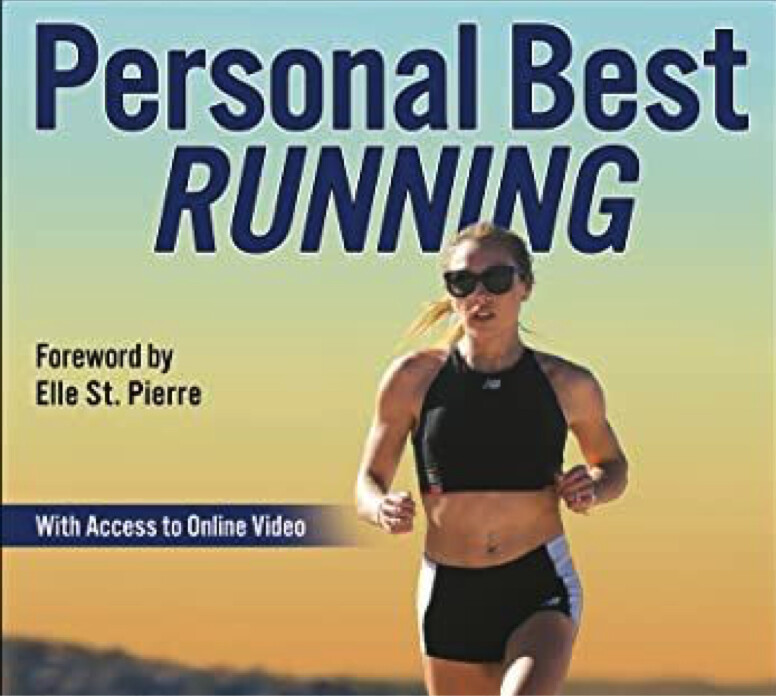
I’ll illustrate this idea with some personal history. When I ran at the University of Maryland, almost all of our workouts were super hard, nearly race-level efforts. Some guys on the team actually set personal bests in workouts. If you were grading our workouts, you’d give us an A+.
That might sound great, but we consistently underperformed in races. Then, dissatisfied with our results, we would try to run our next workout even harder. We’d arrive at our next race physically and mentally exhausted, and we’d again underperform. Then we would be back at it in practice a few days later, eager to prove to ourselves that we were better than our race results showed. And so on.
A lot of guys had multiple injuries. I managed to stay injury-free but never raced like I thought I should. I graduated from college in 1988 without having qualified for the NCAA cross-country championship.
After college I was fortunate enough to join the Nike Boston club, coached by Bob Sevene. I did most of my workouts with that group while running most other days of the week with a bunch of pros in Providence, Rhode Island. I started realizing there was another way. Bob’s workouts never had me going to the well. We might do 10 kilometers of fast running in a session, but under control. Workouts like three 2-mile repeats at around half-marathon pace, or lots of 800-meter repeats at around 10K pace, were typical. If you were grading these workouts, you’d give them a B+. I remember thinking, “This is too easy.”
A Lightbulb Moment
After about two months of this type of training in the winter of 1988/89, I ran an indoor 3,000-meter race as a tune-up before the U.S. qualifying race for the world cross-country championship. I battled Sydney Maree, an Olympian and former world-record holder, in that 3K. Although Sydney outkicked me, I ran a personal best by 10 seconds. I thought, “Wait, how did I just set this massive 3K PR after almost never running that fast in practice?”
The 12K cross-country race was even more eye-opening. I finished third, behind Olympians Pat Porter and Ed Eyestone. I still can’t believe that result—third in the country, behind two guys who were Olympians, even though less than a year earlier I hadn’t even qualified for the collegiate cross-country championship. I proved that race wasn’t a fluke a month later at the world meet, where I finished 39th and was again third American, beating people like a former 10K world-record holder. I thought, “You don’t go from not making the NCAA meet to placing high at the world championship just because of one more year of maturity. It has to be the training.”
My belief in the value of consistent B+ workouts only grew when I moved to Boulder, Colorado, in the early 1990s and started training with people like Arturo Barrios, who had set world records at 10K and the hour run. I couldn’t believe how easy some of his workouts were for how good he was! I could match him stride for stride in them, and he was more than a minute faster than me at 10K. I also saw that marathoners like Mark Plaatjes and Rob de Castella, both world champions at the distance, and Steve Jones, who once held the marathon world record, almost never did the sort of A+ workouts we did in college. They went about their business week after week, stringing together B+ workout after B+ workout, while staying healthy, mentally fresh, and able to take on the best runners in the world.
Why Be a B+ Trainer
I’m not completely opposed to A+ workouts. I prescribe them in some conditions, as you’ll soon see. In general, though, I think almost all of your sessions should be at that B+ level. A+ workouts are really hard mentally. Just anticipating having to go to the well once or twice a week in training can be exhausting. I’m a big believer in the idea that you have only so much willpower. If you’re using all your fight in training, when you get to a race you’re mentally worn out; you can’t bear down and get the job done.
The second big reason I favor regular B+ workouts is that A+ workouts take a greater physical toll. It’s a lot easier to pull a muscle or tweak a tendon or get really sore from all-out workouts. It’s rare for someone on the New Balance Boston team, the elite group I coach, to miss even one workout because they’re nursing a niggle or are otherwise too beat up from training. It doesn’t matter how big a fitness boost you get from a workout if you can’t make it to the starting line healthy.
Think of A+ and B+ workouts as the difference between what you can do and what you should do. Say you can run 40:00 for 10K. On a really good day, you could probably do a workout of 20 400-meter repeats in 90 seconds with a 200-meter jog between. But it would be a major effort. You’d almost always be better off breaking that workout into two sets of 10 repeats, running 95 seconds per repeat in the first set, taking a five-minute break, and then running 92 or 93 seconds per repeat in the second set.
The B+ version will have you walking away feeling good about yourself and eager for your next workout. The A+ version might really beat you up and lead to the beginning of an injury a couple of days later. And that assumes you finish the workout. You might wind up exhausted after 16 repeats, and then get down on yourself for slowing or cutting the workout short.
Immediately after a B+ workout, you’ll feel tired, and you’ll know you’ve worked hard, but you’ll feel like you could have done one or two more repeats at the same pace without killing yourself. I love it when my team says, “Really, that’s it? I could do more.” That tells me I have them working in that sweet spot. If they say they can’t complete the workout, or if they’re rolling around on the ground after, I asked too much of them.
On the day after a B+ workout, it’s okay to be a little tired, but you shouldn’t be super sore. You shouldn’t be dreading that day’s run because you’re physically and mentally exhausted. You should feel like saying, “I’m happy to take it easy today, but I’m also happy to run.” One of the signs that you’re doing too many A+ workouts is that you’re not looking forward to training. After all, most of us run because we love it.
You’ll see this principle of B+ workouts building on one another in the training schedules of my book, Personal Best Running. Few of the hard sessions should cause you to shudder or wonder if you can complete them. You’ll instead see a steady progression of hard-enough workouts that will advance your fitness week by week while leaving you fresh enough to absorb and enjoy your training.
An Occasional A+ Effort
The schedules within the book do contain the occasional A+ workout. For example, week 9 of the 12-week 10K schedules calls for either a tune-up race or a workout of three miles continuous at 10K pace. The latter is hard! That’s the first half of a 10K, on your own, while deep in serious training. Similarly, you’ll see this on the Tuesday workout in the penultimate week of the mile schedules found in the book. It includes two 800-meter repeats at your mile race pace. If that’s not an A+ workout, I don’t know what is.
Doing a workout that hard once in a great while steels you mentally for racing. I most often have runners do them as an important race approaches, especially if they haven’t raced for a while. For example, in January 2022, Elle St. Pierre and Heather MacLean were scheduled to race the mile at the Millrose Games. It was to be their first race since the Tokyo Olympics five months earlier. I wanted them to experience some of the stress and strain of racing before the big stage of Millrose. Eight days before the meet, I had them start a workout with a 1-kilometer time trial. They both ran 2:34, which is fast enough to win most races at the distance. The following week, Elle won her second consecutive Millrose mile title.
I think there will be some innovation in this area because of super shoes—the plated, higher-stack models with next-generation midsole cushioning. They allow you to run faster while not incurring as much muscle damage. So there might be more frequent A+ workouts in my runners’ future. But there’s still the toll of hammering all of your workouts and being flat mentally when it’s time to race.
It can be tempting to post epic workouts on Strava or elsewhere online. Just remember that they give out medals for races, not workouts.
Adapted with permission from Personal Best Running, by Mark Coogan and Scott Douglas.
(02/19/2023) Views: 705 ⚡AMPby Runner’s World
I Know My Body Needs Rest, but I'm Having Trouble Slowing Down
Welcome to Tough Love. We're answering your questions about dating, breakups, and everything in between. Our advice giver is Blair Braverman, dogsled racer and author of Small Game and Welcome to the Goddamn Ice Cube.
When you have always been an athlete, how do you truly rest and recover? I'm one of those people who has always been busy, always a perfectionist, and almost always fit via martial arts and other sports. It's a core part of my identity as a tough woman.
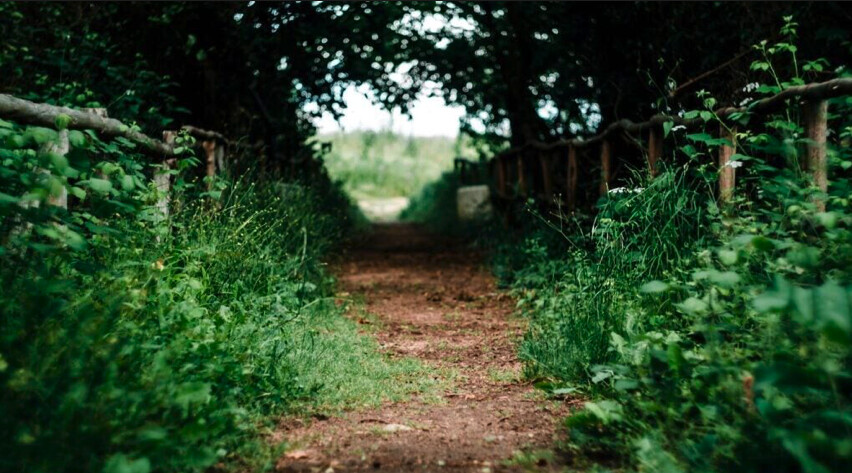
I recently got shoulder surgery for an old injury, and recovery is slower than I would prefer. But more than that, it feels like the rest of my body is finding ways to get other injuries or become sick in a snowball effect. What do you do when the mind wants to heal but the body has other ideas?
I'm a dogsledder, and people always think I have to teach my dogs how to pull. In fact, that's something they do naturally; from the moment they can toddle around, they want to explore, and as they get older, that drive only grows stronger. From the first day I put a harness on them, they pull as if they've been pulling for years; every instinct in their body is telling them to go, go, go. In fact, the hardest thing I have to teach them-and also the most important-is how to rest, especially when it's the last thing in the world they feel like doing.
Rest is boring. It feels to them like a lost opportunity, when there's so much out in the world they could see and do. Which is to say that not only do I relate to your question myself, but I've seen variations of it play out many, many times-in dogs, sure, but are dogs really so different from us?
For the dogs, rest is something they learn over time, through practice and experience. We make them straw beds when we're camping by the trail, and eventually they realize that a pile of straw means it's time to lie down and wait. In a few hours, or the next day, it will be time to run again. The cycle repeats over and over.
I don't know if the dogs realize that proper rest is the thing that allows them to feel good while they're moving, and to travel as far as they do. But I think the routine-the cycle-comforts them. They're OK with resting, they're able to tolerate it, because they know that the running will come again. As long as the running will come, it's all good.
Remind yourself, as often as you need to, that the running-that is, returning to the sports you love-will come. It might look different in the future than it has in the past, depending on if you need to adapt to changes in your body, but you're not going to be in this particular recovery phase forever. And the running won't come in spite of your rest time, but because of it.
The running won't come in spite of your rest time, but because of it.
Of course, you have to get through the frustration of resting in the meantime. If you haven't already, talk to your doctor about what you can do, and also your concerns about new problems that are cropping up. Then take full advantage of whatever activities are doctor-approved, and that are comfortable for you at the moment.
For instance, if you can't do martial arts because of your shoulder, are you able to do activities that put less stress on it? Could you go hiking? Cycling? Try something new, like dance (with modifications to account for your injury)? You may not love these activities as much as your normal sports, but if you remember that this is temporary, and set new goals for yourself, it can still feed that part of your brain-and your body-that you love challenging as an athlete. And even if you're not working the same muscles as usual, you'll still be moving your body in ways that feel good.
Another aspect of dogsledding that's relevant here is that it's seasonal: we mush in the winter, and not in the summer, which means we spend half the year waiting for snow to come back. One of my favorite summer activities is working on projects that I can use the next winter, like sewing fur mittens or repairing equipment. Is there anything that you can work on now that will help you once you're more recovered?
Anything you've been wanting to try, but never have, and that you could physically handle at the moment? Could you stay involved and give back to your sports in other ways, like by mentoring less experienced athletes? These things will help pass the time, sure, but they'll also help you be in a better place once you're more recovered.
If you're the kind of person who doesn't let obstacles get in your way, it can be a huge challenge to put that same willpower toward letting an obstacle stop you-or at least, letting it slow you down for a while, even though slowing down goes against all your instincts. But toughness doesn't just mean challenging yourself in sports, or having big adventures; it also means having the courage to make changes, and to take care of yourself, even when it's really hard. Toughness can take the form of patience, or acceptance, or hope. That means your toughness isn't on hold while you're resting; it's more important than ever right now. It's gotten you through everything else, and it's going to get you through this, too.
(02/19/2023) Views: 472 ⚡AMPby Trail Runner Magazine
Should sub-four be no more?
Over the weekend at Boston University’s David Hemery Valentine Invitational, 52 runners went sub-four in the men’s mile, including five Canadians: Cameron Proceviat, Matthew Beaudet, Charlie Dannatt, Alec Purnell and Foster Malleck. With the advancement of super shoes and the responsiveness of the Boston indoor track, the sub-four-minute mile is still impressive, but is it as remarkable as it used to be?
Last week, Track and Field News, a database that has kept track of sub-four miles since Roger Bannister became the first man to break the barrier in 1954, announced it would no longer update its chronological list of runners who break the barrier. The site released a statement: “The advent of super-shoes has bombarded the 4:00 barrier into something no longer relevant for tracking, although many new members would have made it even without high-tech footwear.”According to an article in Outside, the original decision to scrap the list was based on the (non-scientific) belief that the sub-four stat had lost popularity.
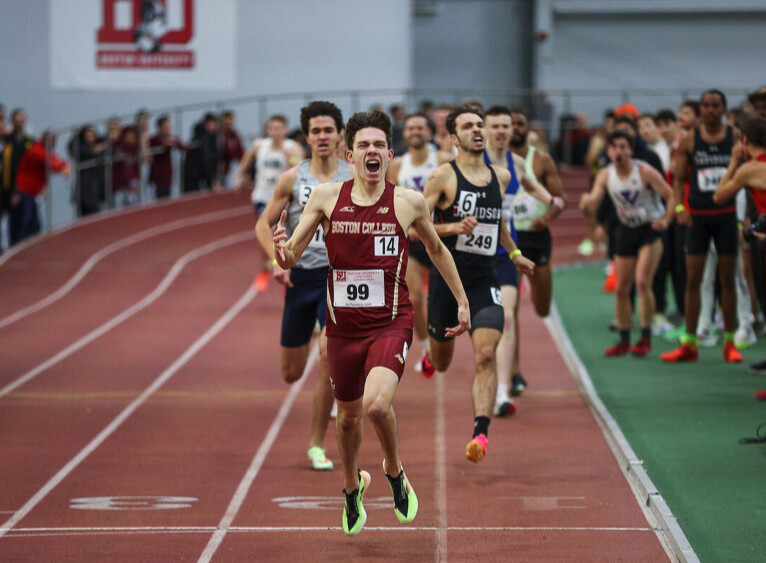
In a later article, Track and Field News editor Garry Hill told Outside: “In retrospect, I now think the opposite might be true, as modern shoes/tracks/training have combined to make a shot at a sub-4:00 now a reasonable goal for a lot more people.”
At the 2023 Millrose Games in NYC, U.S. Olympian Yared Nuguse ran the second-fastest mile in history, clocking 3:47.38, a new North American record, and only milliseconds off the indoor mile world record of 3:47.01. The American track and field community celebrated the mark, but faster times also bring quicker standards and higher expectations.In the past five years, shoe technology and track surfaces have changed, and running must adapt with it.
The Boston University track, which was built in 2002, is unusual in that it was built to the maximum allowable specifications (in terms of the surface, the 18.5 degree steepness of the banked turns); it is considered one of the best tracks in the world for middle distance runners chasing fast times.And while these super spikes bring faster times, what are the athletes supposed to do? Buy old shoes to simulate Bannister’s iconic 1954 race with leather spikes on a cinder track?
As mile times for elite middle-distance runners now stray into the high-3:40s and low-3:50s, the sub-four mile matters less and less; but, like breaking three hours for a marathon or 20-minutes for a 5K, any competitive distance runners will always want their mile time to start with a three. That will never change.
After an online uproar, Track and Field News relented, and said they would continue to keep track of sub-four-milers in their database. To this day, it is still a feat only 75 Canadian men have accomplished (indoor and outdoor)—enough to fill a school bus. No matter how many runners break four, it will always be a barrier many will chase.
(02/19/2023) Views: 522 ⚡AMPby Running Magazine
A sub four minute mile is still an amazing feat and should always be just that! 2/19 7:52 am |
Beatrice Chebet wins World XC gold after Letesenbet Gidey collapses at finish
Kenya's Beatrice Chebet overhauled favorite Letesenbet Gidey with a stunning late burst over the last 100 metres to clinch the women's cross country world title on Saturday.
Jacob Kiplimo later won the men's title for Uganda but only the approach of a thunder storm about to sweep over the Mount Panorama race track was able to offer drama comparable to the women's race.
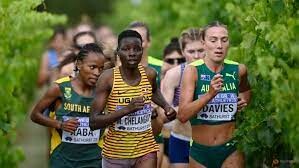
World 10,000m champion Gidey had broken for the front on the final climb out of the swampy "Billabong" section of the course and looked to be coasting to the line when Chebet put on a late burst and appeared on her shoulder.
Ethiopian Gidey tried to react but her legs gave way and she fell to the ground as world 5,000m silver medalist Chebet swept past her and crossed the line in 33 minutes 48 seconds.
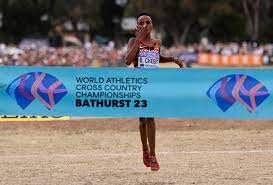
"I did not expect to win but I hung in," said Chebet, who won the under-20 title at the last championships in Aarhus in 2019.
"I saw that towards the finish Gidey was a bit slower and I ran hard and I won. When we were running, I thought that she was not running fast anymore and I thought I have the potential to go and win."
Tsigie Gebreselama of Ethiopia took the silver in 33.56 and Agnes Jebet Ngetich took bronze for Kenya in 34 minutes dead. Gidey had to be helped over the line and was disqualified.
A late burst earned Ethiopian Senayet Getachew the women's under-20 crown in 20.53, while Ishmael Kipkurui gave Kenya more success with a run of 24.29 to win the men's age-group race.
Kenya earlier dominated the mixed team relay ahead of Ethiopia in 23.14 with Australia giving the locals something to cheer about with a bronze medal.
(02/18/2023) Views: 681 ⚡AMPWorld Athletics Cross Country
Athletes from across the globe will descend on Australia for the World Athletics Cross Country Championships Bathurst 2021. Mount Panorama is better known as the home of Australia’s premier endurance motor race, but in one year from now, it will welcome the world’s best endurance runners for what will be Australia’s first World Athletics Series event in...
more...Uganda's Jacob Kiplimo wins World Cross Country title as Kenyans wilt
Kenya, for the first time in 14 years, failed to claim a medal in men’s 10 kilometres at the World Cross Country Championships as Uganda claimed back-to-back victories in Bathurst, Australia on Saturday.
Two times World Cross Country champion Geoffrey Kamworor was the best Kenyan finisher at fourth place in 29 minutes and 37 seconds as Commonwealth 10,000m champion Jacob Kiplimo won in 29:17.
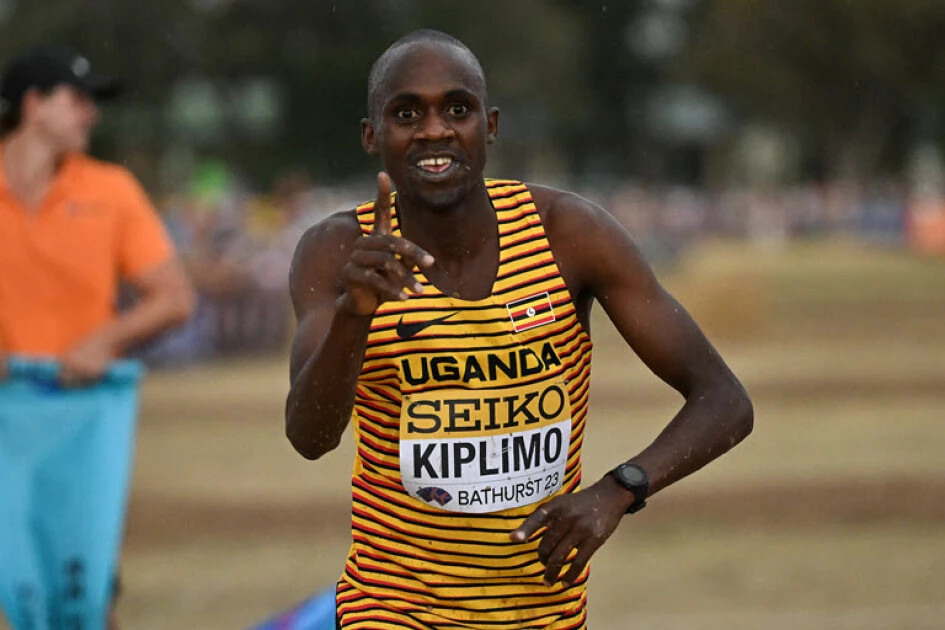
Kiplimo, who claimed silver in 2019 in Aarhus, Denmark, was in splendid form, beating Ethiopia’s Berihu Aregawi to silver position in 29:25 as defending champion Joshua Cheptegei from Uganda settled for bronze in 29:37.
Kamworor, the 2015 and 2017 champion, who settled for bronze in Aarhus, ran out of gas to let Aregawi overtake him to fall out of the medal bracket.
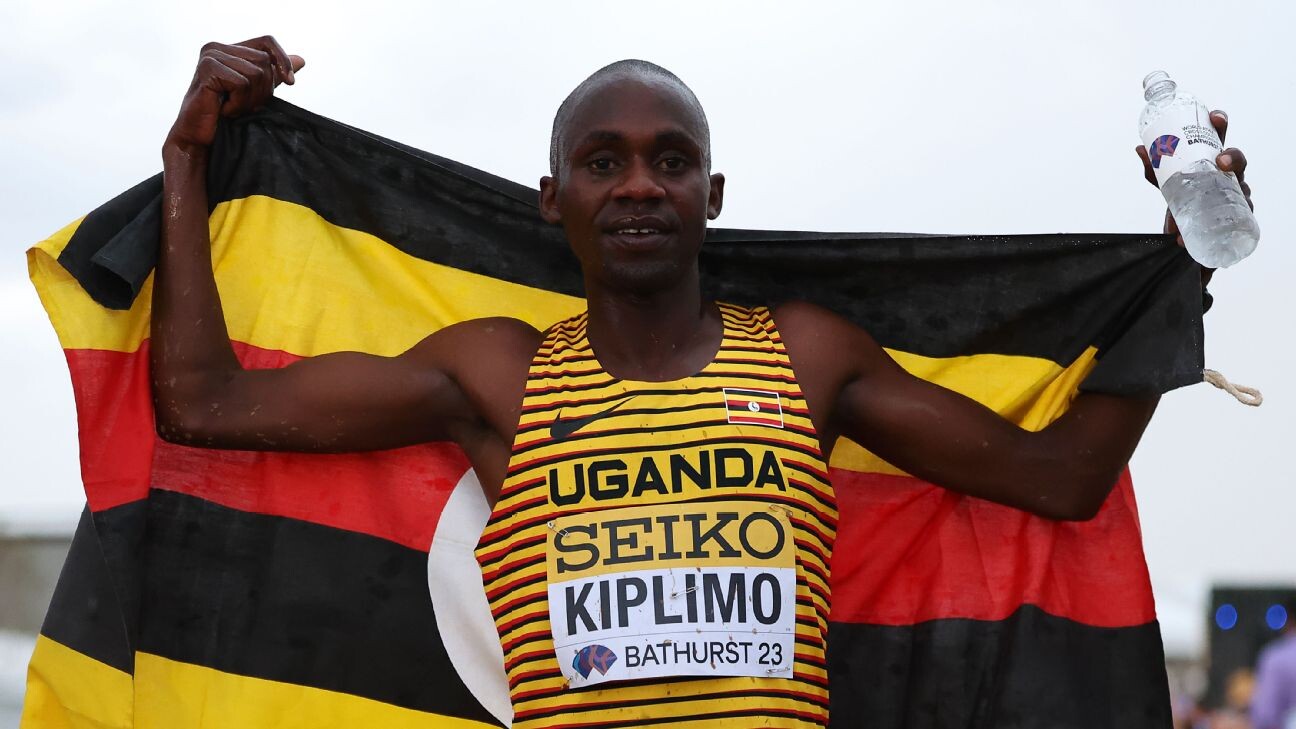
The last two laps were simply the three East African countries’ affair with Kamworor, World Half Marathon silver medallist KIbiwott Kandie and Daniel Simiu taking on the Ugandan duo and Aregawi.
It’s Cheptegei who led Kamworor, Kiplimo and Aregawi into the last lap as the rest wilted in the hills challenge.
Kandie, Simiu and Sabastian Sawe finished fifth, sixth and seventh respectively.
(02/18/2023) Views: 716 ⚡AMP
by Ayumba Ayodi and Peter Njenga
World Athletics Cross Country
Athletes from across the globe will descend on Australia for the World Athletics Cross Country Championships Bathurst 2021. Mount Panorama is better known as the home of Australia’s premier endurance motor race, but in one year from now, it will welcome the world’s best endurance runners for what will be Australia’s first World Athletics Series event in...
more...Obiri and Kibet win Ras Al Khaimah Half Marathon
Hellen Obiri and Benard Kibet Koech achieved a Kenyan double at the Ras Al Khaimah Half Marathon, a World Athletics Gold Label road race, on Saturday (18).
Two-time world 5000m champion Obiri went one better than her runner-up spot in Ras Al Khaimah last year, clocking 1:05:05 to triumph by 44 seconds in the women’s race ahead of Ethiopia’s world marathon champion Gotytom Gebreslase.
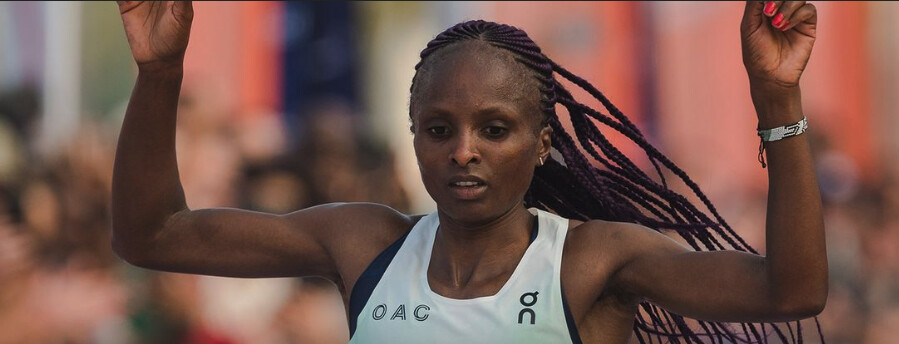
The men’s race was closer, but Kibet still claimed a clear win as he kicked away to beat his Kenyan compatriot Daniel Mateiko by four seconds - 58:45 to 58:49.
Obiri and Gebreslase were part of a pack that passed through 5km in 15:10. By 10km they had broken away from their competition, clocking 30:28 at that point, just ahead of Kenya’s Olympic marathon silver medallist Brigid Kosgei (30:31).
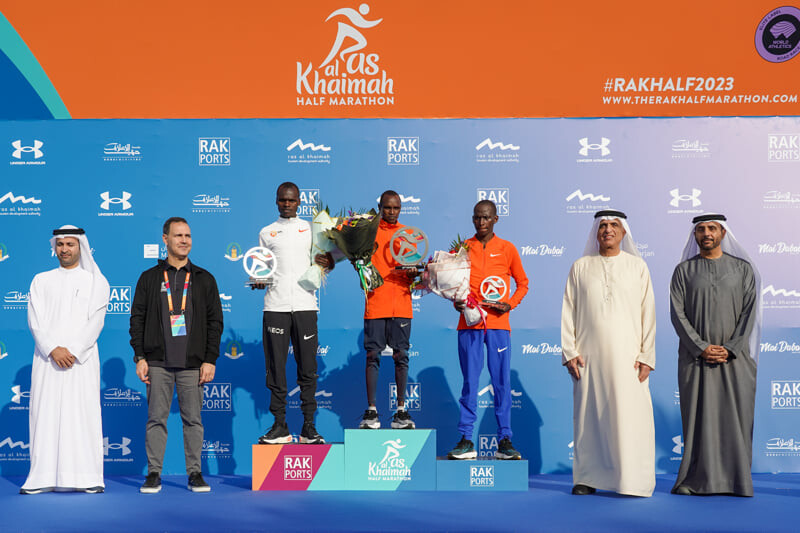
Obiri started to make a move and was 25 seconds ahead at 15km, following her pacemaker through that mark in 45:39. Her lead only grew and she eventually crossed the finish line 44 seconds clear, Gebreslase claiming the runner-up spot in 1:05:51.
Running a well-judged race, Ethiopia’s Ftaw Zeray finished third in a PB of 1:06:04, half a minute ahead of Kosgei.
In the men’s race, Kibet and Mateiko featured in the lead group that passed the 10km mark in 27:33. Breaking away along with their compatriot Richard Yator, the trio were together through 15km in 41:30 before Yator was dropped.
Kibet kicked and Mateiko couldn’t match his rival’s finishing strength, as Kibet took more than a minute off his PB with his winning performance.
Yator followed them over the finish line in 59:37, while Ethiopia’s Gemechu Dida finished fourth in 59:53.
A record number of more than 5500 participants took part in the programme of events in Ras Al Khaimah, which also included a half marathon relay, 5km race and 1 mile events.
(02/18/2023) Views: 524 ⚡AMPRak Half Marathon
The Ras Al Khaimah Half Marathon is the 'world's fastest half marathon' because if you take the top 10 fastest times recorded in RAK for men (and the same for women) and find the average (for each) and then do the same with the top ten fastest recorded times across all races (you can reference the IAAF for this), the...
more...Under Armour launches SlipSpeed, the versatile slip-on training shoe
Sometimes putting on shoes is an effort–there’s a reason why Crocs are so popular! Many young athletes and runners will crush the back of their training shoes instead of taking 10 seconds to tie them up. But you need an alternative to Crocs for the gym.
Looking to satisfy young athletes who can’t be bothered to tie their shoes, Under Armour has created the revolutionary UA SlipSpeed–a training shoe versatile enough to go from performance training to recovery mode in seconds with a convertible heel.


When an athlete crushes the heel of a traditional shoe, it deteriorates the shoe’s performance. The UA SlipSpeed features heel-folding technology that gives athletes a comfy underfoot experience without compromising performance. The shoe also features a BOA-fit lacing system that delivers an adjustable, personalized fit to secure your feet for squat reps or mobility exercises.
The SlipSpeed is a true one-day shoe: if you’re rocking the SlipSpeed, you won’t need to bring another pair of shoes with you, so no matter whether you have a high-impact activity or casual wear planned, it’s comfortable and flexible enough for both, thanks to the crushable heel and BOA lacing system.
Level up your training and get a shoe engineered for maximum comfort, style and performance with options for all-day wear. Do not look past the UA SlipSpeed, which you can get online at underarmour.ca for CAD $190.
(02/18/2023) Views: 635 ⚡AMPby Running magazine
Ultrarunner Camille Herron announces new sponsor: Lululemon
Hundred-mile and 12-hour world record holder Camille Herron of Oklahoma City, Okla. ended speculation about her new sponsor with Wednesday’s announcement that she has joined forces with the running and yoga brand Lululemon. The runner recently announced that she would be sponsored by a company that is new to the ultratrail space in 2023. “It feels like a dream come true,” Herron told us after a week spent at the brand’s Portland, Ore. facilities.
Herron is the first and only woman to achieve sub-13 hours for 100 miles, 150 km for 12 hours and 270 km over 24 hours, and she won the 90-km Comrades Marathon in South Africa in 2017. She reached 100,000 lifetime miles in 2022. She was formerly sponsored by Hoka.
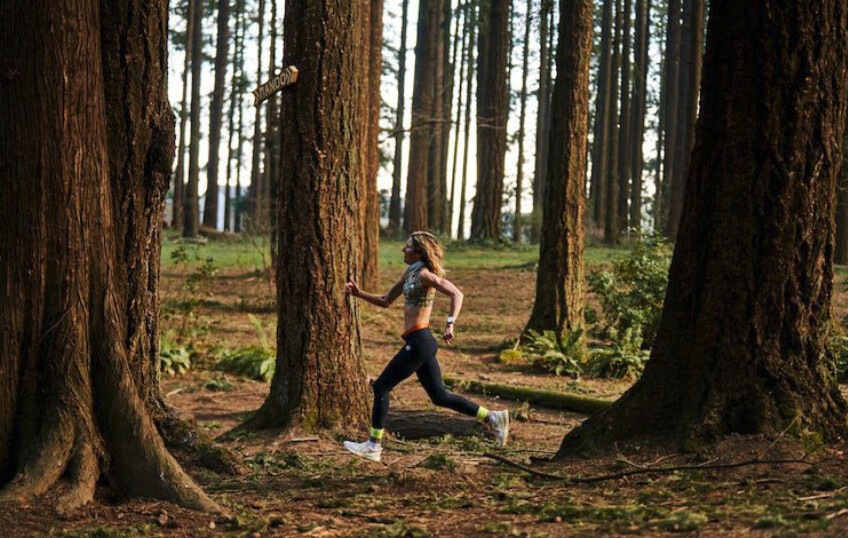
Herron says she’s most excited for the support she’s received beyond her athletic ability: “It means a lot to me that they appreciate my human qualities beyond my athletic talents,” she says. “My professional background is in science and research, and they recognized how I can help the brand with my scientific knowledge. I’m a cerebral person–I’m more than an ultrarunner. It spoke to my heart that Lululemon recognized this. They seemed to know more about me than I knew about myself! I was blown away.”
The philosophy
Herron is excited to be partnering with Lululemon because of their track record as a brand that has women front and centre, and she joins a long list of other female Lululemon-sponsored runners, including Colleen Quigley, Mirna Valerio and Tara Davis, and others. “I feel a sense of women’s empowerment joining with them,” Herron says. “They believe in me and support me, and they care about the whole human. They’ve been asking me about my mental health and wellbeing, and I thought that was really cool–I’ve never been asked about that. I’ve connected with someone to help me with my mental and emotional health, and how I manage stress.”
“Last year at Western States, I started my period after the Forest Hill aid station, and I shared that, and it resonated with a lot of women. Sharing my journey, my athletic career in my 40s–that’s pretty much unheard of. It’s really cool for me to have Lululmeon’s support. I’m very grateful.”
The gear
Herron’s excited about Lululemon’s running clothing: “We’ve been having fun mixing and matching that top [the Invigorate Training Tank] with shorts. I really like old-school split shorts, and Lululemon has that. I imagine myself being a unicorn or a superhero, mixing and matching Wonder-Woman-type colours. We’re bringing back colour to the sport!”
She is also impressed with their socks, and their run bras: “Being an ultrarunner, I spend a lot of time on my feet,” says Herron. “To be able to take off my socks after a run, and my feet are dry and my toes are in good shape, is huge. “I also love how they put pockets in everything.”
She’s also impressed with the brand’s efforts to produce high-quality running shoes, even if shoes appropriate for very long days on the road, track or trail remain a work in progress. “Me being a science person, I can offer a lot of feedback on developing their shoes,” Herron says. “It’s such a great opportunity to collaborate. We’ve had lots of meetings–I’ve been to the company headquarters in Vancouver and met the shoe people; all the products are incredible, and I’m excited to bring them to the ultratrail community.”
Goals for 2023
Herron is excited for the future: “I feel so blessed to be 41 and still getting faster,” she says, adding that she’s grateful for the brand’s support. “This is a long-term commitment, not only for my athletic career but also helping them with product development. I’m going to be continuing my focus on world records, try to improve some of them, and also go further; I want to go for the 48-hour and 6-day records; I’m hoping I have the opportunity this year to go beyond 24 hours.”
This summer, however, she’ll be focused on trails, with Western States in June and Leadville (another 100-mile trail race) in August. “Every time I show up at Western States, I get a bit better,” she says.
On Feb. 18, Herron plans to challenge her own world records for 100 miles and 12 hours at The Raven in Mount Pleasant, S.C. She will also plan to qualify for the 24-hour world championship in Taiwan, which takes place in December 2023.
(02/18/2023) Views: 1,363 ⚡AMPby Running Magazine
DIRK HELLER WINS 300 MILE RACE
Dirk Heller from Germany is our overall winner for the MYAU 300 mile race. Second came Josh Tebeau (USA) and Elise Zender (Germany). Those two are also a couple and a race like this is a very serious stress test for any relationship.
They did it in style! Josh and Elise also entered in the team category placed 1st team. They connected their entry with a fundraiser effort for We Can Run Project which is looking to contribute to the higher education of female students in Sierra Leone. Last and certainly not least came Dirk Groth from Australia who said it was incredibly hard, especially the road from Pelly Farm to Pelly Crossing – due to a lot of fresh and unpacked snow. But he made it before the cut-off of 8 days and I think he liked it ?
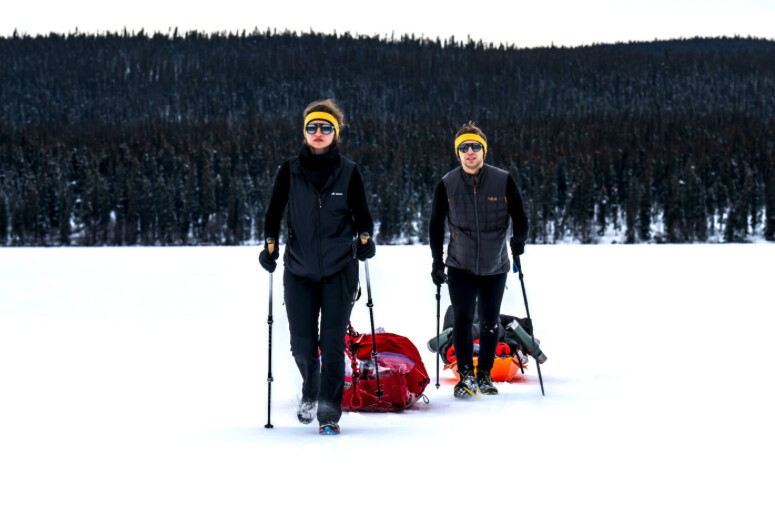
Yukon Artic ultra 300 miler
The Yukon Arctic Ultra is the world's coldest and toughest ultra! Quite simply the world's coldest and toughest ultra. 430 miles of snow, ice, temperatures as low as -40°C and relentless wilderness, the YUA is an incredible undertaking. The Montane® Yukon Arctic Ultra (MYAU) follows the Yukon Quest trail, the trail of the world's toughest Sled Dog Race. Where dog...
more...Kiplimo succeeds compatriot Cheptegei as world cross-country champion in Bathurst
The senior men’s title at the World Athletics Cross Country Championships Bathurst 23 remained with Uganda, but this time a different athlete wore the crown as Jacob Kiplimo claimed gold.
The 22-year-old finished second in the senior men’s race in Aarhus four years ago, despite still only being 18 years old at the time. But he earned his first senior global title 18 months later when winning at the World Half Marathon Championships in Gdynia.
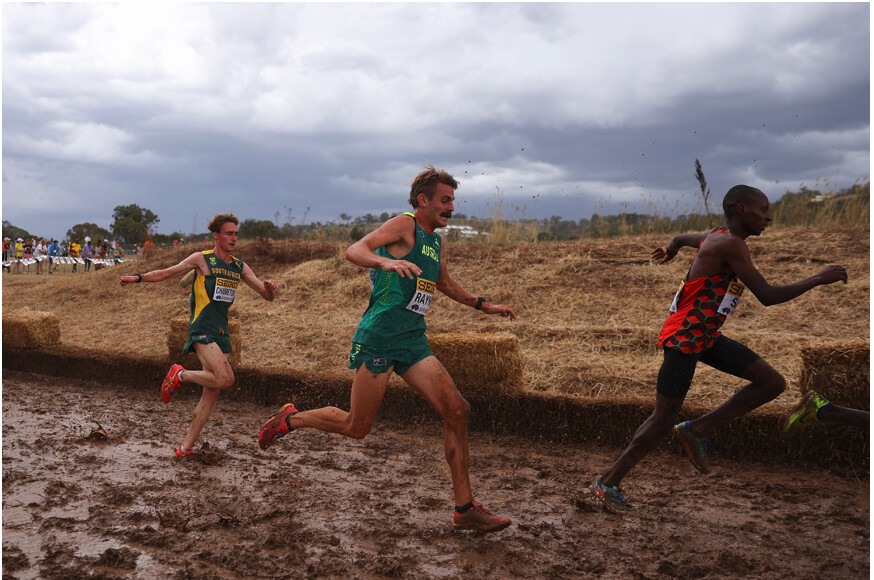
In the years that followed, though, he was beaten into bronze over 10,000m at the Olympic Games in 2021 and at the World Championships in 2022.
But today in Bathurst Kiplimo’s brilliance shone through, conquering an incredibly strong field and defying the stormy conditions that broke out just a few minutes into the race.Kiplimo and compatriot Joshua Cheptegei, the defending champion, held back on the first lap, while their Ugandan teammates Isaac Kibet, Samuel Kibet and Martin Kiprotich ran at the front of the pack. Kenya’s Geoffrey Kamworor, two-time winner of the senior men’s title, was tucked behind the leading trio with the first lap covered in 6:09.
The pace increased slightly on the second lap, whittling the lead pack down to 15 men with most of the big contenders in it. Kiprotich still led with Kamworor close behind while Kiplimo and Cheptegei ran towards the back of the pack. Ethiopian cross-country champion Berihu Aregawi was just a stride ahead of Kiplimo, and Burundi’s Rodrigue Kwizera – current leader on the World Athletics Cross Country Tour – was right at the rear of the group.About half way into the race, Cheptegei took close order and moved to the front of the pack, running level with Kamworor. Kenya’s Daniel Simiu Ebenyo was also close by, along with Kiplimo and Aregawi. Kwizera, meanwhile, was starting to lose contact with the lead group, and Olympic 10,000m champion Selemon Barega of Ethiopia was beginning to show signs of discomfort.
But as the temperatures started to drop, the race started to heat up. The two former winners, Kamworor and Cheptegei, still looked good out in front. They, along with Kiplimo and Aregawi, eventually formed a breakaway quartet. Former world half marathon record-holder Kbiwott Kandie led the chase pack, which was five seconds adrift of the leaders by the end of the fourth lap.
But Kiplimo, who has considerable mountain-running experience, was clearly still full of running, despite the challenging course and he made a break on the final lap. By the time he reached the ‘billabong’ – the muddy section of the course just before one of the most challenging climbs – he had a two-second lead over Cheptegei, with Aregawi and Kamworor just one second behind the Ugandan duo.Kiplimo maintained that lead as he emerged from the vineyard and had extended it to seven seconds by the time he reached the ‘mountain straight’ part of the course. By this time, Aregawi had moved past Cheptegei into second place, while Kamworor was five seconds adrift of the defending champion.
As he charged down the penultimate downhill stretch, double Commonwealth champion Kiplimo could sense that victory was his. He turned and ran through the tyre section still with a comfortable lead, then eased round the final bend, took one last glance behind him to ensure his lead was safe, and then started celebrating some 50 metres out from the finish.
He crossed the line in 29:17 – a remarkably quick time for 10km given the difficulty of the course – with Aregawi, a World Cross debutant, taking silver in 29:26. Cheptegei just about held on for bronze ahead of a fast-finishing Kamworor, both men timed at 29:37. Kandie remained in fifth, some 20 seconds adrift of the leading quartet.
Despite missing out on an individual medal, Kamworor found some consolation in the fact he led Kenya to gold – his first senior men’s team title in five World Cross appearances. Ethiopia took silver and Uganda earned bronze.
The same three nations have now filled the podium in the senior men’s team competition for the three most recent editions of the World Cross, albeit in a different order each time.
“The course was really good,” said Kiplimo. “Even with lots of wind, it was really intense. I think for me it was really good because there are lots of hills where we train in Uganda. It was not easy but I did my best.”
Aregawi, meanwhile, was delighted to earn his first senior global medal. Back in 2018 he won the African U18 title over 3000m, and then earned two silver medals at the Youth Olympic Games later that year. In 2021 he won the Diamond League 5000m title and set a world 5km record on the roads, but missed out on a 10,000m at the Olympic Games.
He improved his PBs at 3000m, 5000m and 10,000m in 2022 but was once again shy of a medal at the World Championships in Oregon. But he will be leaving Bathurst with individual and team silver medals.
“The conditions were tough,” he said. “It was hot on the first lap, and then it changed to windy. This championship was very difficult and tough, but I am really pleased.”
Cheptegei was also pleased, given the circumstances.“I think it was a good race, especially coming back from injury,” said the world 5000m and 10,000m record-holder. “I didn’t have the best preparation, but I’m grateful to come here and finish on the podium. Now I can be reassured I can go focus on the track soon, and especially the coming World Championships.”
(02/18/2023) Views: 625 ⚡AMPby Jon Mulkeen for World Athletics
World Athletics Cross Country
Athletes from across the globe will descend on Australia for the World Athletics Cross Country Championships Bathurst 2021. Mount Panorama is better known as the home of Australia’s premier endurance motor race, but in one year from now, it will welcome the world’s best endurance runners for what will be Australia’s first World Athletics Series event in...
more...Bathurst ready to welcome the world on ‘toughest ever’ championship course
Absence, they say, makes the heart grow fonder. But in the case of World Athletics Cross Country Championships, it also seemingly makes the courses tougher.
Four years have passed since the memorable 2019 edition in the Danish city of Aarhus, where athletes had to run up a museum roof, trudge through a mud pit, and dash through a Viking zone. It was widely regarded as one of the most unique and challenging courses ever at a World Cross.
Now, on the eve of the World Athletics Cross Country Championships Bathurst 23, many people are convinced that the course for this year’s edition is even tougher.
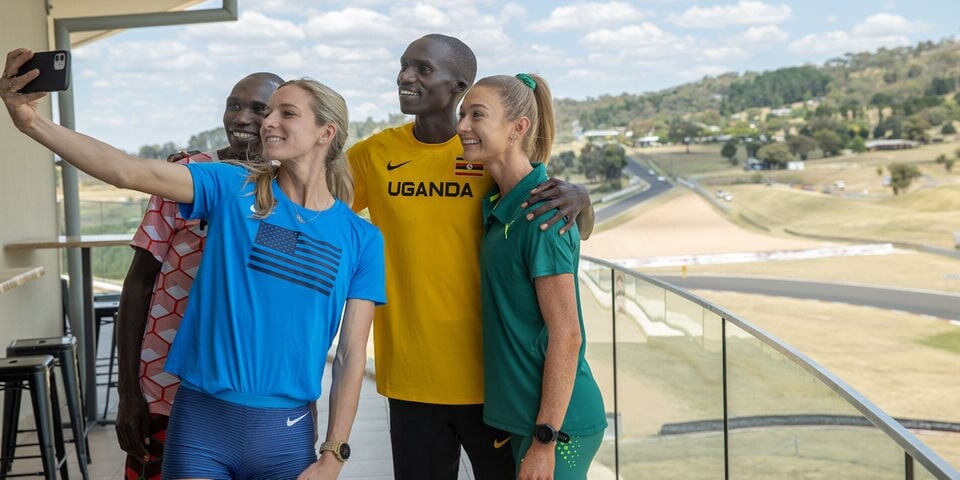
“In recent years we’ve talked about reinvigorating cross country, and we adjusted the course in Aarhus to create a more challenging one,” said World Athletics President Sebastian Coe. “I’m delighted that the team here in Bathurst have picked up that torch and done an outstanding job. I’d say this is certainly one of the toughest courses ever for a World Cross.
“We are really pleased to be here,” he added. “In the 50-year history of the World Cross, this is just the second time it has been held in Oceania, and it’s the first time it has been held in Australia.
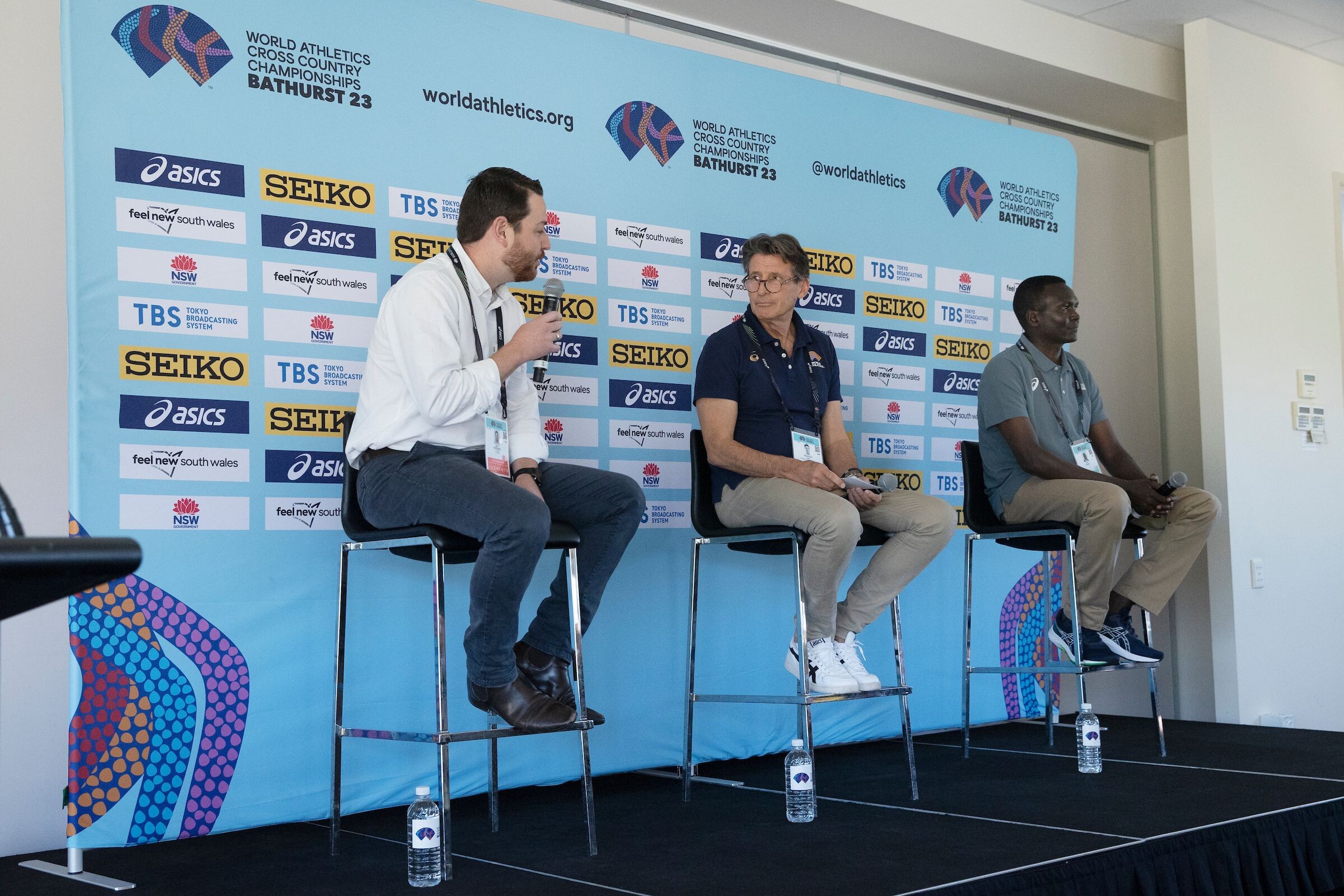
“Bathurst has one of the most iconic motor racing tracks in the world, but now, in the same breath, people will think of Bathurst staging the World Cross Country Championships.”
Local Organizing Committee Co-Chair Matt Whitbread expressed his pleasure at welcoming the world to Australia for a global athletics event.
“We’re delighted to have everyone here in Bathurst,” he said. “After the last edition in Denmark, there was plenty of inspiration. We got the brief that the course needed to be hard, and hopefully we’ve achieved that.
“We were originally scheduled for 2021, then 2022, and we’re finally here now,” he said. “We’re thrilled to be here and we welcome you all.”
Coe also used the opportunity to underline the importance of cross country.
“World Athletics takes cross country very seriously, and the importance of cross country goes beyond a great World Championships like this,” he said.
Championships ambassador Paul Tergat is living proof of someone who benefitted from cross-country running. A five-time world champion at cross country, the Kenyan legend also set world records on the track and roads during his long career.
“Cross country is part of my DNA,” said Tergat. “This is where my career started. Being here, especially in Australia where I have such fond memories, makes it more special.
“With cross country, not only do you have to think about the athletes you’re racing against, you also have to think about the terrain and the course,” he added. “I believe that makes you tougher. Each course is different, which makes cross country unique.”
Cheptegei and Kamworor ready for rematch
Uganda’s Joshua Cheptegei and Kenya’s Geoffrey Kamworor – who, between them, have won the past three senior men’s titles – will once again go head to head on Saturday.
Cheptegei’s compatriot Jacob Kiplimo, who took silver in 2019, is also in Bathurst, meaning the full podium will be reunited.
“It’s exciting that the people who shared the podium in 2019 are all back here,” said Cheptegei, the 5000m and 10,000m world record-holder. “I know it’s going to be mind-blowing and will be something that will stay in our hearts and minds for a long time.”
Memories of the 2017 World Cross Country Championships have certainly stayed with Cheptegei over the past six years. On that occasion, with the World Cross taking place on home soil, Cheptegei had built up a huge lead but fatigue eventually got the better of him and he faded to 30th, as Kamworor successfully defended his title.
“Sometimes you have to accept what life throws at you and then learn from it,” said Cheptegei. “I can proudly say that I am a better athlete because of the incident in 2017. It taught me a lot of lessons about my life and my career. When you want something in life, it’s important to chase your goals, but you also have to be patient and make certain judgements.”
For Kamworor, it was the 2011 edition of the World Cross that holds most significance.
“The first major title I won was the U20 title at the 2011 World Cross Country Championships,” he said. “That motivated me so much, and ever since then I have loved cross country.”
Despite winning two individual senior titles and one U20 title, Kamworor is yet to win a senior team gold at the World Cross. He hopes that will change on Saturday, though.
“We had great training with the team and we hope to do our best tomorrow and hopefully win the team title,” he said.
Hull and Coburn take different routes to Bathurst relay
Dramatically contrasting paths have led accidental contender Emma Coburn and child prodigy Jessica Hull to the World Cross Country Championships in Bathurst where they are both in contention for medals.
Colorado-based Coburn, 32, is looking forward to leading USA in the mixed relay, despite being an athlete who spurned cross country at school and college in favour of volleyball and track.
Coburn instead went on to become a steeplechase specialist, winning the 2017 world title at that discipline, as well as the 2019 world silver and 2016 Olympic bronze.
Coburn said the longer cross country courses were the reasons she never got into the discipline.
“I was never that mentally into it (cross country) because I played volleyball during the same season in high school,” Coburn said. “In college I tried it, but I wasn’t that great. I always loved the steeplechase and the track.”
Being able to compete in a mixed relay – the ninth time Coburn has represented the USA at a global championship – where each runner completes a 2km loop has changed her attitude about cross country.
“This 2km distance I think is really fun,” she said. “The muscular strength in my legs will be beneficial on some of the technically challenging parts of the race, like the mud pit.
“As a steeplechaser, I like the challenge of this course. We’ll be going for it, trying our hardest to conquer the course and come out with some hardware.
“This is a fun opportunity and something different for me. I’m eager to try new things and mix it up and this is an opportunity to challenge my mind and body.”
Coburn will be supported in the mixed relay by US teammates Heather MacLean, a 2021 Tokyo Olympic 1500m semi-finalist, steeplechase expert Alec Basten, and 2019 mixed relay runner Jordan Mann.
The USA will be vying for the medals alongside Australia, whose team boasts a cross country child enthusiast in Hull.
Twenty years ago Hull kicked off her athletics career doing 2km primary school cross country carnivals across the road from her home in New South Wales, Australia.
“It’s kind of scary,” Hull said. “It was part of my school sports days and it was 2km. Now I’ll do a 2km hot lap of the Bathurst course. So it’s kind of a full circle moment.
“If we were to get the win out there, it would be pretty special,” she added. “It is incredible that we can talk about the Aussie team even having a win. It would be quite a remarkable day if we got to hear the national anthem while we are out there.”
Athletics has taken Hull, 26, from school cross country carnivals to the world stage where she’s been a 1500m finalist at three majors – the 2021 Tokyo Olympics (11th), the 2022 World Championships in Oregon (7th) and the 2022 Commonwealth Games in Birmingham (8th).
Hull will be joined on the tough Bathurst course by three other Australian 1500m specialists: Commonwealth champion Oliver Hoare, Commonwealth bronze medallist Abbey Caldwell, and Olympic finalist Stewart McSweyn.
The mixed relay is the first medal event on the championship programme on Saturday (18). 15 teams will compete for the medals, running in a 4x2km man-woman-man-woman format with each athlete having a wristband which they transfer to their teammate in the takeover zone.
“Cross country is an absolutely essential part of the development of young athletes. Any athlete who can master cross country and can do so from a young age is going to be well placed to pursue an endurance career on the track.”
(02/17/2023) Views: 644 ⚡AMPby World Athletics
World Athletics Cross Country
Athletes from across the globe will descend on Australia for the World Athletics Cross Country Championships Bathurst 2021. Mount Panorama is better known as the home of Australia’s premier endurance motor race, but in one year from now, it will welcome the world’s best endurance runners for what will be Australia’s first World Athletics Series event in...
more...Canadian sprinting legend Donovan Bailey to coach on Canada’s Ultimate Challenge
The fastest man in Canadian history, Donovan Bailey, is taking his talents to a coaching role on Canada’s Ultimate Challenge, which premieres tonight on CBC Television and CBC Gem.. Bailey is a two-time Olympic champion and three-time world champion, but managing people on the big stage is something he’s used to.
Bailey shared his wealth of coaching and relay experience with Team Red on the new reality show, in which six coaches mentor teams at site-specific physical challenges.
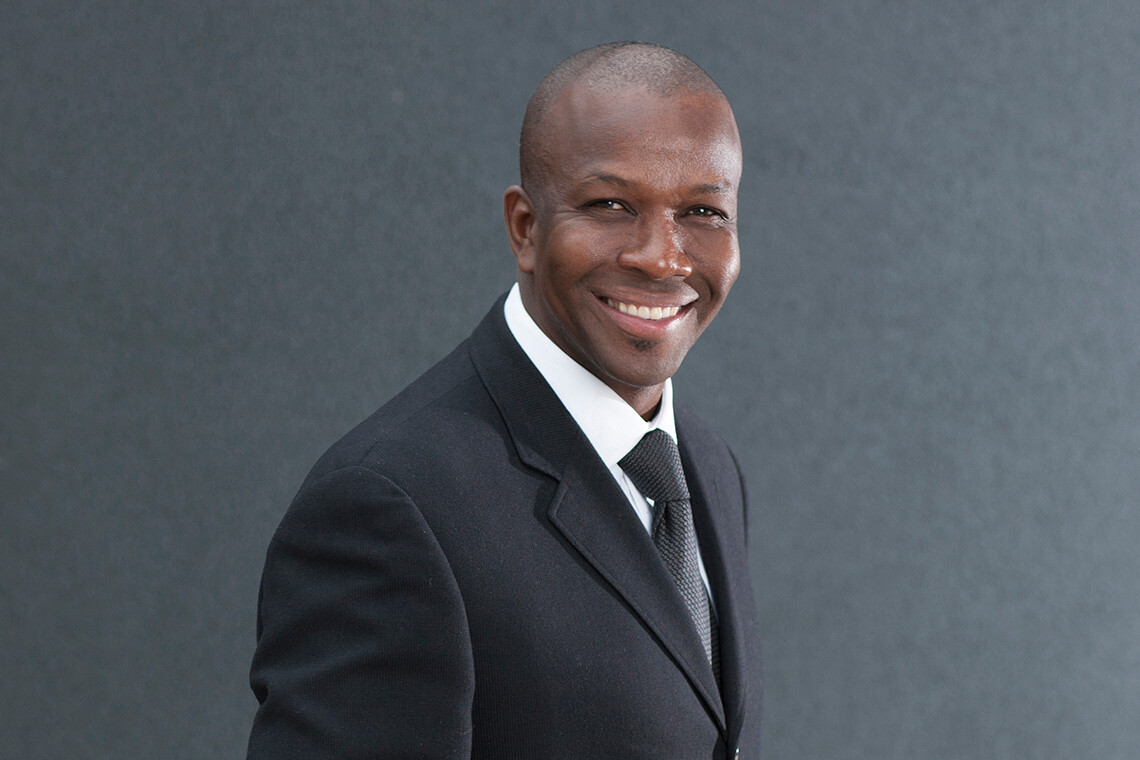
“Managing athletes is absolutely not new to me,” laughs Bailey. “Being the leader for one of the greatest teams in Canadian history (the anchor of Canada’s 4x100m relay team from 1994 to 1997) helped me to be able to deal with different personalities.”
When Bailey was invited to be a captain on the show, he wanted to be clear he was interested in coaching, but not competing. The premise of Canada’s Ultimate Challenge has a lot of similarities to the way Bailey used to help his teammates prepare for the bright lights on the track.
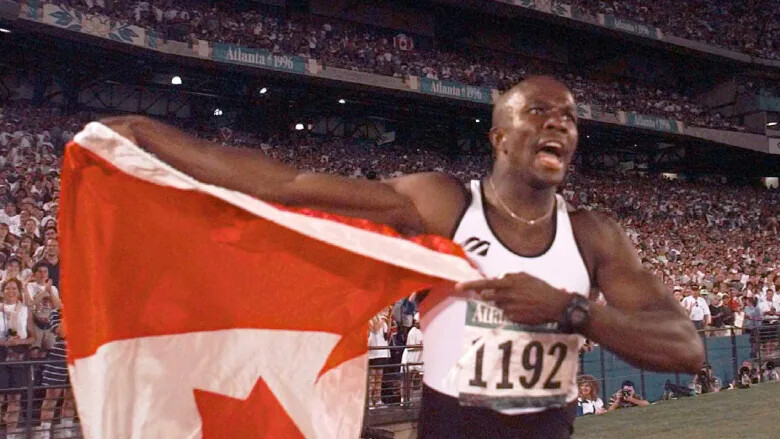
Whatever task Bailey’s Team Red was assigned, it was his responsibility to help guide them.
“From my professional life, I enjoyed the lights and showing up when it mattered,” says Bailey. “The Ultimate Challenge is different–competitors are in their own heads, and it’s useful to understand the nuisances that come with managing all different skill sets.
“I was able to develop an incredible bond with my team, and at the end of the day, no one quit or wanted to give up,” he adds.
Although Bailey has been away from sprinting for more than 20 years, he says he’s envious of the new generation. “Nowadays, athletes get to see content captured from every moment during competition and behind the scenes. In my era, you only got a photo if you won.”
Bailey’s 100m best of 9.84 seconds from the 1996 Olympics still stands as the Canadian record, but he says his long-time coach, Dan Pfaff, believes that, if he’d had the benefit of today’s shoe tech, he could have run 9.4 to 9.5 seconds.
The 55-year-old has been a regular Olympic sprint analyst with CBC Sports since the 2008 summer Games. One of his highlights as an analyst was watching the Canadian men’s 4x100m relay team win gold at the 2022 World Athletics Championships in Eugene, Ore.
“Knowing how hard it was for us to do in the 90s, I felt like a proud dad watching the boys win,” Bailey says. “It was amazing to see Canadian sprinting come full circle. I had full confidence in this team, with Andre De Grasse as their great leader. He is a competitor, and if you give him the baton, he will never disappoint.”
(02/17/2023) Views: 660 ⚡AMPby Running Magazine
Runners Will Chase Historic Times at 2023 Publix Atlanta Half Marathon
A run for records will take place at the Publix Atlanta Half Marathon next week where some of the world’s best runners will attempt to complete the fastest half marathon ever run in the state of Georgia. This year’s elite field features eight men who have run faster than the current men’s record of 1:00:36 and four women who have run faster than the women’s record of 1:08:22. Both times were set at this event in 2022.
Nicholas Kosimbei will return to Atlanta to defend his title and his record. The 26-year-old from Kenya dominated last year’s race which was held in the driving rain, winning by more than two minutes. Fellow Kenyans Raymond Magut and Goeffrey Koech who placed second and third respectively last year are also returning. Magut boasts a personal best of 1:00:00 while Koech has broken the one-hour mark with a career best of 59:36. Koech won his most recent half marathon, the B.A.A.Half Marathon in Boston last November.
“I love the course in Atlanta,” said Kosimbei. “I am looking forward to returning and my goal is to break my own course record.”
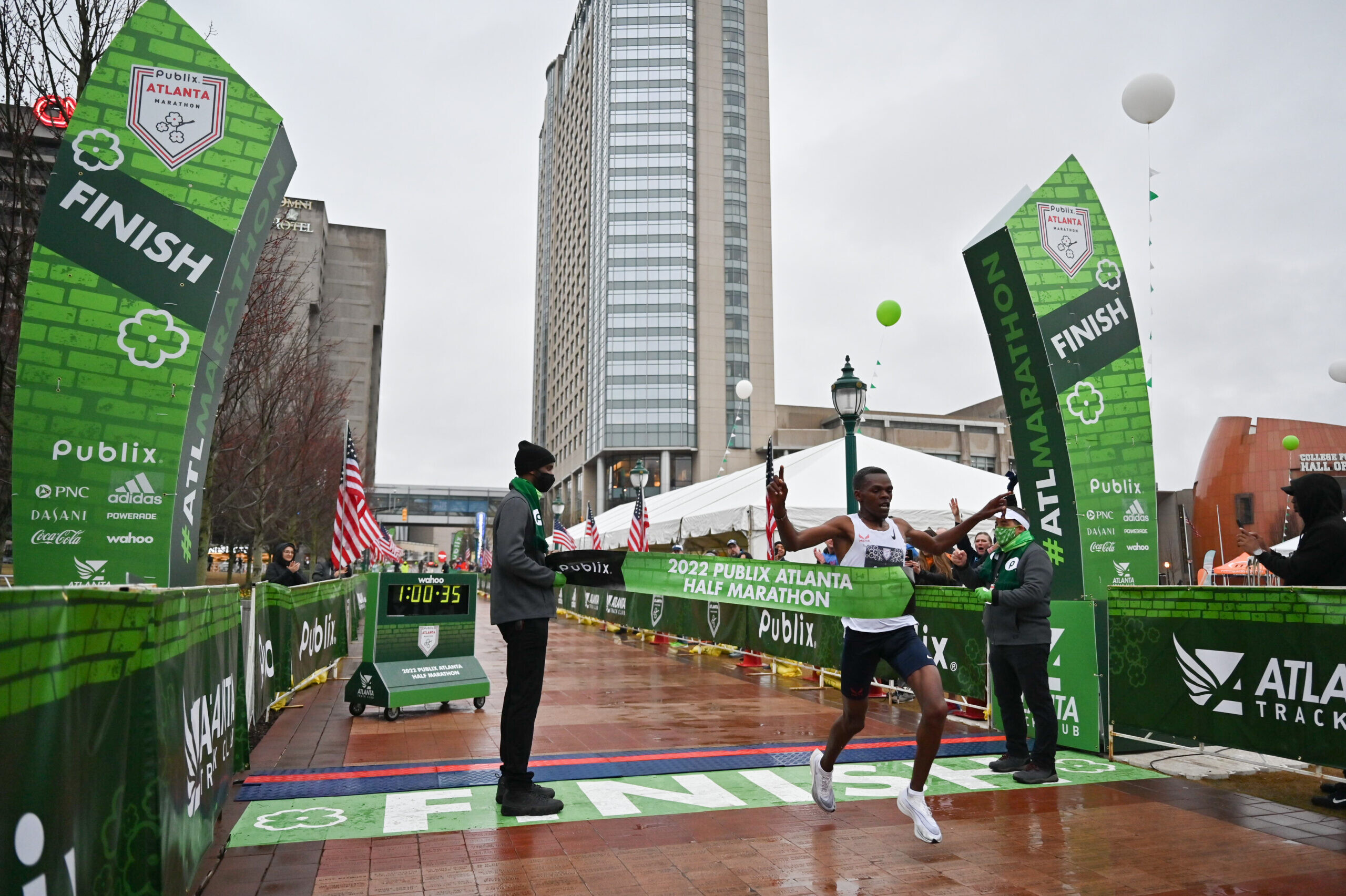
Other top contenders include Tsegay Kidanu (Ethiopia, 59:39), Josphat Tanui (Kenya, 59:40), Phenus Kipleting (Kenya, 1:00:08) and Bethwell Yegon (Kenya, 1:00:57), the runner-up at the 2021 BMW Berlin Marathon.
With last year’s winner Dorcas Tuitoek not returning in 2023, a new face will break the tape to win the women’s title. The fastest woman in the field is Kenya’s Cynthia Jerotich. Jerotich was a dominant force on the roads from 2013 to 2016, setting a half marathon personal best of 1:06:04 and winning a silver medal at the World Half Marathon Championships in 2016. Jerotich stepped away from racing in 2017 and gave birth to three children before returning to competition last year. At 33, she will be looking to return to the form that saw her winning road races around the world including some of the most prestigious events in the United States.
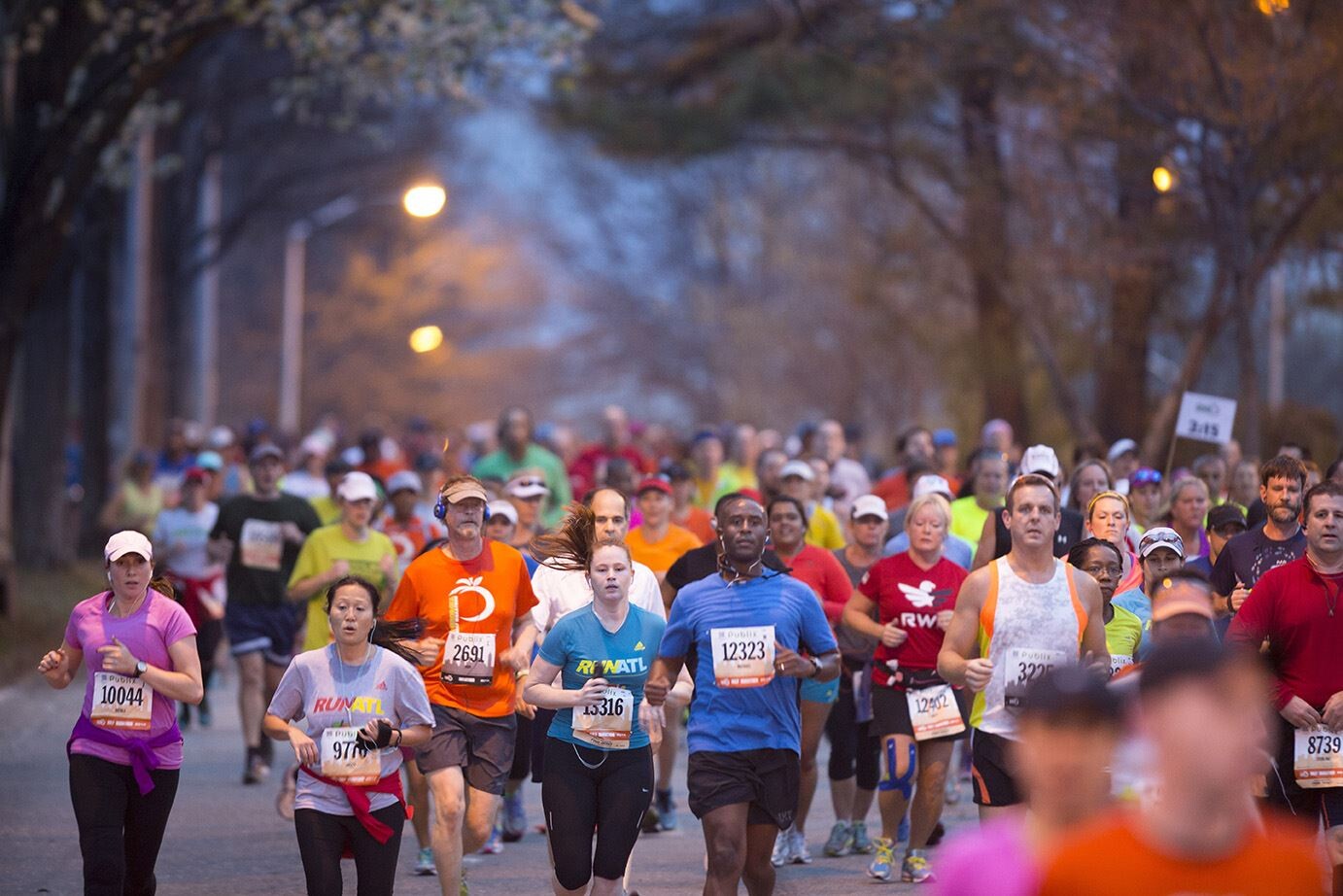
Jerotich will face Helah Kiprop, the winner of last year’s Copenhagen Marathon and the runner-up at the Frankfort Marathon. Kirprop, a 2016 Olympian from Kenya, has a half marathon personal best of 1:07:39. Also among the fastest in the field are 2017 Houston Half Marathon winner Veronica Wanjiru (Kenya, 1:07:58) and Vibian Chepkirui (1:08:02). Chepkirui won the Vienna Marathon last year in a course record time of 2:20:59.
Athletes in the 2023 Publix Atlanta Half Marathon will be competing for a $22,000 prize purse including a first place prize of $4,000. There is an additional $2,500 bonus for the male or female winner who sets the course and Georgia all-time record. Full elite fields can be found below. The race will be streamed live on Atlanta Track Club’s YouTube page with commentary from Chris Chavez, Carrie Tollefson and Ali Feller.
About Atlanta Track Club
Atlanta Track Club is a nonprofit committed to creating an active and healthy Atlanta. Through running and walking, Atlanta Track Club motivates, inspires and engages the community to enjoy a healthier lifestyle.
With more than 30,000 members, Atlanta Track Club is the second largest running organization in the United States. In addition to the AJC Peachtree Road Race (peachtreeroadrace.org) – the largest 10K running event in the world, the Publix Atlanta Marathon, PNC Atlanta 10 Miler and Invesco QQQ Thanksgiving Day Half Marathon, Atlanta Track Club directs more than 30 events per year. Through the support of its members and volunteers, Atlanta Track Club also maintains a number of community initiatives including organizing and promoting the Kilometer Kids youth running program to metro Atlanta youth, honoring high school cross country and track and field athletes through Atlanta Track Club’s All-Metro Banquets and supporting the Grady Bicycle EMT program. For more information on Atlanta Track Club, visit atlantatrackclub.org.
(02/17/2023) Views: 891 ⚡AMPby Running USA
Publix Georgia Marathon
The Publix Georgia Marathon & Half Marathon is the perfect opportunity to visit the city of Atlanta. Atlanta's ONLY marathon, the event is a must do for adventure marathoners looking to cover all 50 states. A true Southeast tradition, you'll experience the spirit of the city as you travel through four college campuses, ten welcoming neighborhoods and dozens of iconic...
more...Five reasons to find a running buddy, running with a friend or a group could be the key to hitting your next PB
Running can be a solitary pursuit, but just because you’re going to be running solo on race day doesn’t mean you have to train all by yourself. A great way to make running more enjoyable is to find yourself a running buddy or a running group. There are plenty of ways that a training buddy or group can help you improve as a runner. So lace up, convince your best friend to become a runner and check out these five reasons to get a running buddy.
1.- Accountability
A huge bonus of having training partners is the accountability they’ll give you. It’s far too easy to skip workouts when you’re running on your own, and even the most committed of runners are occasionally guilty of turning off the morning alarm and rolling over for more sleep. If you know that your friend or a group of friends are expecting you for a long run or workout, you’ll feel obligated to get out of bed, regardless of how tired you may feel (and you’ll be glad you did!). It may be a tad annoying on mornings when all you want to do is hit the snooze button and skip your workout, it will ultimately add up to you becoming a better runner.

2.- Motivation
You can talk to yourself all you want, but there’s really nothing like someone else by your side encouraging you to keep going. On days when you’re not feeling the strongest or you’re running slower than you know you can, your training partner will be there to cheer you and inspire you to dig just a little deeper. Plus, they’ll be going through pretty much the same pain that you are, and if you see them being able to put up with it, you’ll know you can, too.
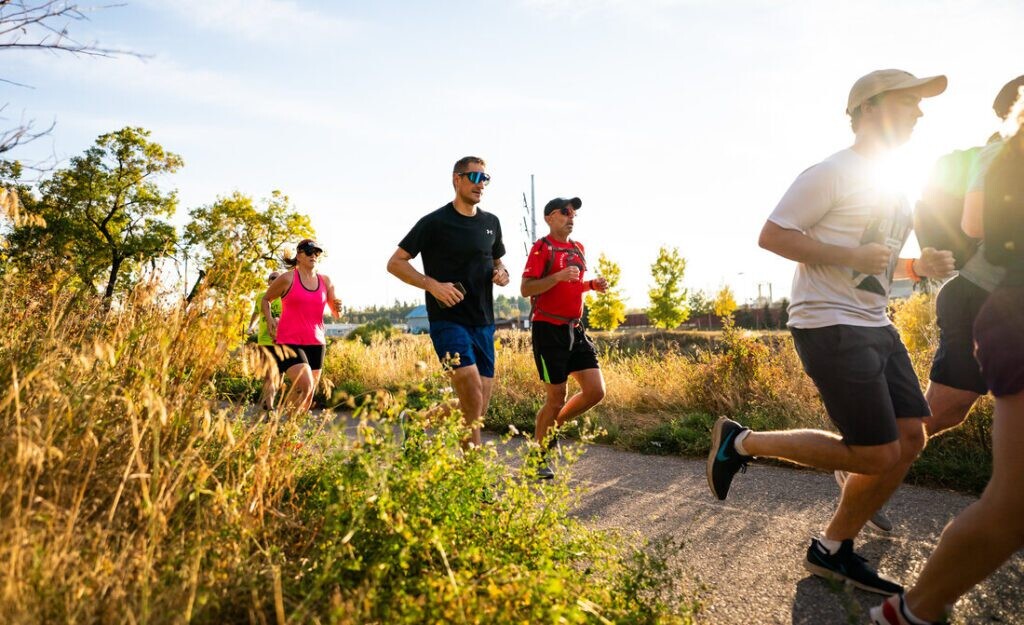
3.- Competition
We’re not going to recommend that you turn every training session into a race, but every now and then that’s going to happen, whether you intend it or not. As a runner, you’re probably competitive by nature, and even if you don’t actively decide to race, every now and then you’ll find yourself pushing a little harder to match or surpass your running buddy’s pace (and odds are they’re going to do the same with you). Why not turn this into a fun competition? On speed days, see who’s got the most in the tank. It won’t make the workouts easy, but it certainly will make the time go by quicker.
4.- Distraction
Speaking of the time flying by, running with other people is a great way to make an hour feel like 30 minutes or less. You and your running buddy are going to be chatting about all aspects of life, and before you know it, you’ll be done for the day. This definitely beats running on your own and watching the minutes drag by.
5.- Racing buddy
We know that you won’t necessarily run right by your training partner’s side on race day, but you can enter the same events. Sometimes it’s easy to hem and haw about which races you should sign up for, but with a running buddy who’s also looking to compete, you’ll have someone to help you pick. Not only that, but you’ll also have someone to drive with to the race and (perhaps most importantly) someone to celebrate with after you both cross the finish line.
(02/17/2023) Views: 584 ⚡AMPby Ben Snider-McGrath
Predict your 10K finish with this 5K workout
After a few months of cold weather and wintry conditions, it can be difficult to predict your fitness for a spring race. If you’ve never run that distance, there are a few methods for predicting pace. One of the most important methods is to do workouts that will get you closer to your training goal.
If you have a 10K on the horizon, here is an ideal workout to figure out where you are in your training.

Workout:
Five reps of one kilometre with 90 seconds rest

Let’s say your goal is to break 45 minutes for 10K. Each rep should be run at a 4:30/km pace or faster. If you can comfortably hold the goal pace over all five reps, breaking 45 minutes (or your goal time) shouldn’t be a problem.
If you found the workout too easy, you can make it harder by doing the five reps on only 60 seconds of rest.
Another way to calculate your 10K finishing time: Do the workout at your 5K race pace. Then use the average pace of the five 1K reps to calculate your 5K pace. Then determine your 10K pace by doubling your 5K time and adding a minute or two.
According to Jack Daniels VDOT calculator (a measure of your current running ability based on a recent race result or current training paces), most runners have a variance of one or two minutes between their 5K time doubled and their 10K time. Therefore, the calculation of doubling your recent 5K time and adding a minute or two should give you a window to work toward.
(02/16/2023) Views: 637 ⚡AMPby Running Magazine
The key to pacing your marathon
The key to a good marathon isn’t just about the fuelling, the training and the shoes, pacing matters too. Fast Running gives you the low-down on how to get to the finish as quickly as you can.
If you’re training for a marathon, chances are you’re well aware of the importance of pacing yourself during the race. After all, there’s nothing worse than hitting “the wall” halfway through and having to drag yourself to the finish line. But figuring out the right pace for you can be tricky, especially if you’re a beginner or if you’re not sure what to expect.
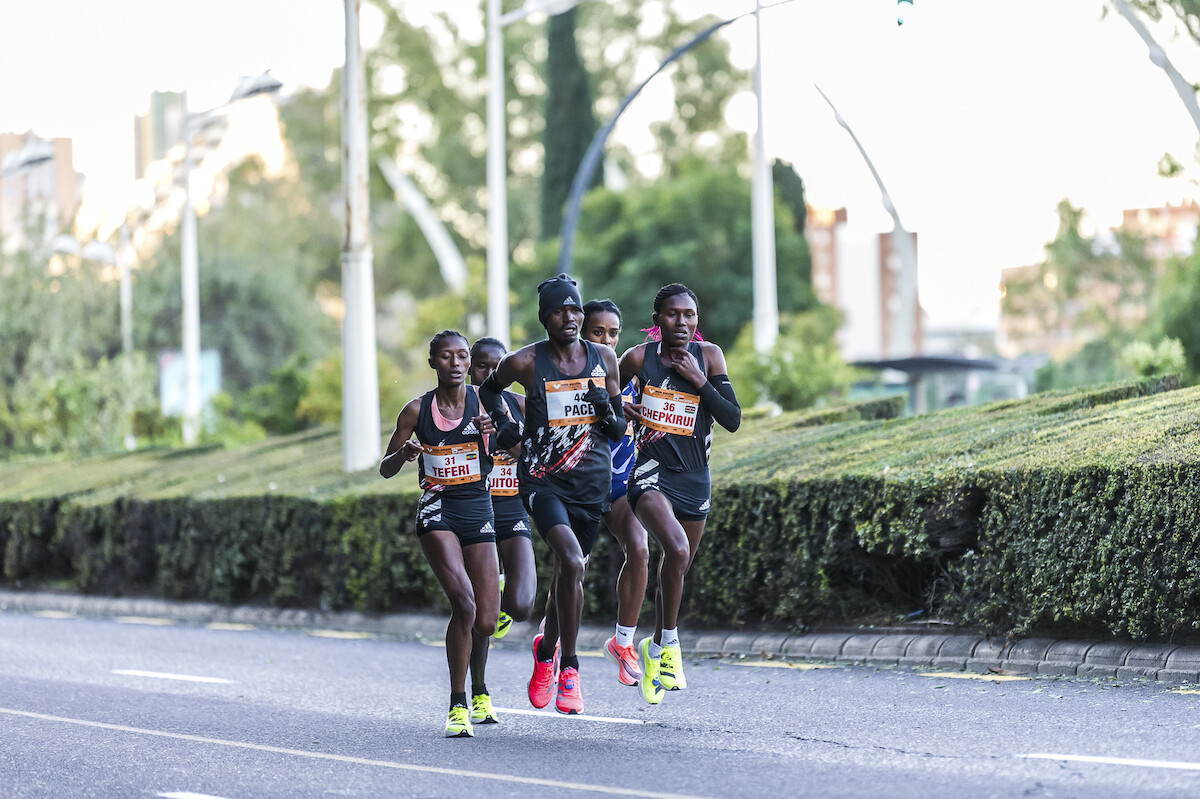
So how do you find your perfect rhythm on race day?
First things first: let’s define what we mean by pacing. In running terms, pacing refers to the speed at which you run during a race or training run.
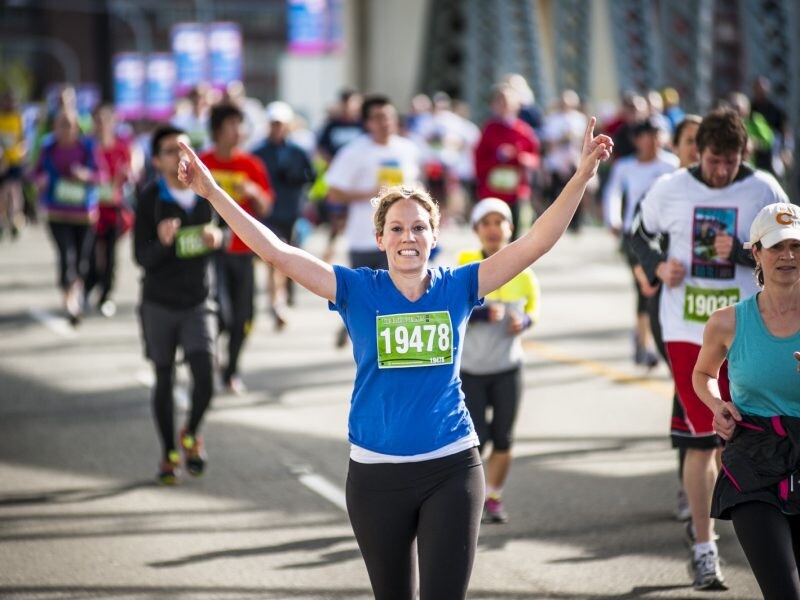
It’s important to have a consistent pace throughout the marathon, rather than starting out too fast and burning out later on. This is where many runners go wrong – they get caught up in the excitement of the race and push themselves too hard at the beginning, only to pay for it later on.
So how do you find your ideal pace?
One way is to use a pacing chart or calculator, which can give you a rough estimate of how fast you should be running based on your recent training times. These tools can be helpful, but keep in mind that they’re just estimates and may not take into account factors like terrain, weather, and your current fitness level if you’ve had a great training block since your last race.
Another way to determine your pace is to use sessions like Yasso 800s or a marathon pace tempo, but looking at cardiac drift during the run. If you can run your goal marathon pace for a decent distance, say 8-10 miles, without seeing much drift in the heart rate or effort required tor sustain this pace then it is a good sign you’re in the right ball park.
If you’re seeing a lot of drift, even 5-6 miles into that marathon pace run, then it’s worth considered if the pace is a bit too spicy, or even looking at what is causing the rise in heart rate or effort, as this could also be other factors like heat, dehydration, fuelling etc (which can also be factors on race day too).
Lastly, consider the other factors beyond just fitness and legs. What pace can you continue to eat gels and drink sports drink at? If you’re fitness and training say you should run X minutes per mile, but you can only keep fuelling 10-15 seconds a mile slower, then think about what will be limiting factor over the course of your race.
But what about runners of different abilities and speeds?
How do you determine the right pace for you? It can all depend on experience and where you at in your running journey but here are some guidelines for different athletes.
Beginner runners: If you’re new to running or are training for your first marathon, it’s important to start out slow and build up your endurance. Aim for a pace that feels comfortable and sustainable, and don’t be afraid to walk if you need to. Remember, the goal is to finish the race, not to set a personal best time.
Experienced runners: If you’ve been running for a while and have completed a few marathons, you probably have a good idea of what pace works for you. Still, it’s important to pay attention to your body and make adjustments as needed. If you’re feeling strong, you might be able to push yourself a little harder. But if you’re feeling tired or sluggish, it’s okay to ease up and take it a bit easier.
Fast runners: If you’re a seasoned runner with a lot of speed and endurance, you might be tempted to push it from the start. But beware of the temptation to go too fast too soon – even the most experienced runners can hit “the wall” if they push themselves too hard. It’s better to start out at a slightly slower pace and then pick it up as the race goes on. This way, you’ll have more energy left in the tank for the final stretch.
Keeping the game plan in place when the gun goes
Now that you have an idea of how to find your ideal pace, let’s talk about some strategies for staying on track during the marathon. We all know from Mike Tyson that “everyone has a plan until they get punched in the face” but what is less clear is why the vast majority of distance runners treat the starting gun like someone has punched them straight on the nose.
These are some techniques that might help you stay on track in the early stages and keep it going strong in the final stages.
Check your watch
It can be tempting to ignore your watch during the race and just go by feel, but checking your pace every mile or so can help you stay on track. If you’re running slower or faster than you should be, you’ll know to adjust your pace accordingly.
But also remember that GPS can be inaccurate, especially in big cities. If the marathon has mile or kilometre markers than you can have some landmark times to check to make sure everything is in-sync. Knowing what time you should pass through 5,10,15k and halfway will mean you can quickly check the time at that set distance marker and you know it’s accurate… hopefully.
Run even splits
This means running the same pace for each mile of the race, but keep in mind that it’s not always possible (or advisable) to run even splits, especially if the course is hilly or there are other factors that might affect your pace. We know the chump who runs the horrendous negative split and still gets a PB is given some kind of hero status, but it’s not necessarily the best PB they could have achieved on the day.
We’re not saying you have to get there holy grail of a negative split, but aiming for even splits and then limiting how much you fade in the second half can be a great race tactic. You just need to look at how the race is often won at major city marathons, with the winner usually being the one who either picks up the pace after 35km, or just slows the least of the front bunch.
Use distractions and use the crowds
If you’re struggling to maintain your pace, try distracting yourself with music, conversation, or other distractions. This can help take your mind off the fatigue and help you focus on something else. Just be careful not to get too distracted and lose track of your pace altogether. This isn’t just a jog in the park, you want a PB.
If you’re running in a crowded race, use the energy of the spectators to your advantage. Let their cheers and encouragement carry you through the tough parts of the race. Just be sure to thank them with a smile or a wave as you pass by. Or maybe just a grimace and an effort to not spray them with a snot-rocket as you pass.
Reflection is key
After all is said and done, with 26.2 miles run (tight rhymes), it’s important to sit down and reflect on how things went. Be honest wit yourself about your pacing and ask the tough questions. Could I have started more sensibly? Did I hit the wall or have a massive drop off in the second half?
It might be easier to blame outside factors, things you can’t control, but it doesn’t help you progress. Look at everything you can control, your pacing, training, fuelling etc and write down three things you did well, and three things you might improve for next time.
(02/16/2023) Views: 571 ⚡AMPby Fast Running
Two-time Canadian Olympian Lucas Bruchet hangs up his track spikes
On Feb. 14, two-time Canadian Olympian and multi-time national champion Lucas Bruchet announced on Instagram that his journey in track and field is over. The 31-year-old schoolteacher and third-fastest Canadian over 5,000m will retire from competitive racing–but he has plans to stay in the sport.
Bruchet posted on Instagram:
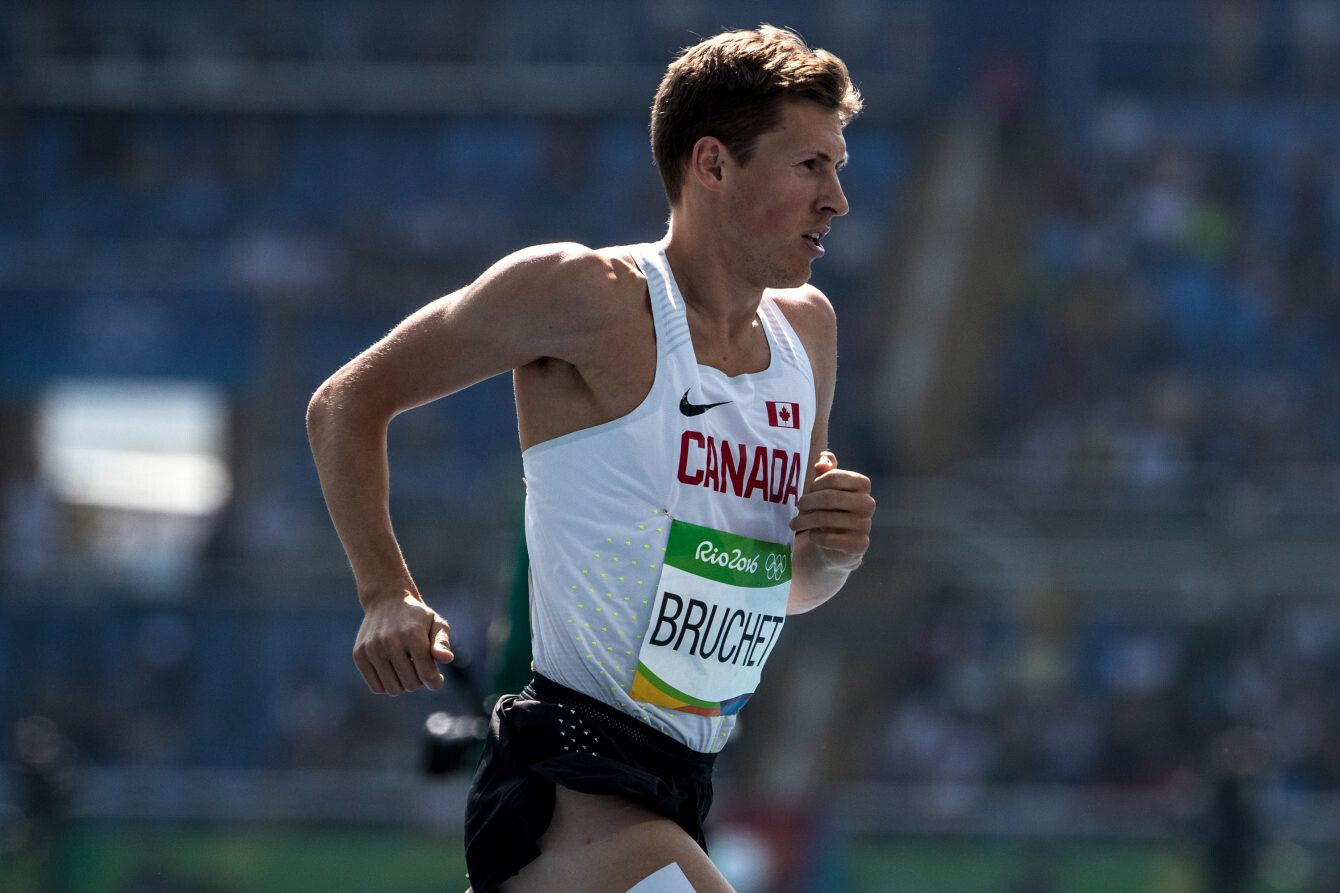
“It’s been no secret to many, but to everybody else that’s followed my journey in athletics it’s time I tell you it’s over. I mean it’s not totally over, I’ll always run, but it’s no longer the thing that drives my life.
The goals will be different and I hope to continue to inspire the Canadian running community and explore ways to continue growing this awesome sport. I am looking forward to connecting everything I’ve learned to teaching and coaching.

Much love and thank you to my team of people who guided me and helped me achieve every goal I ever set. To all those who have supported me over the years, I appreciate y’all, these were some damn good times.”
Bruchet represented Team Canada in the men’s 5,000m at the 2016 Rio Olympics, where he finished 19th in his heat. At the 2021 Harry Jerome Classic in Vancouver, Bruchet ran a 12-second PB to become the third-fastest Canadian of all time, which earned him a spot on the Tokyo Olympic team alongside Moh Ahmed and Justyn Knight.
Bruchet ended up placing 12th in his 5,000m heat in 13:44.08. He also collected several national championship titles over the 5,000m, 10,000m and cross-country. Until 2022, Bruchet never finished lower than fourth at the Canadian XC Championships (ACXC), and he is the only male athlete in the last decade with more than one ACXC win.
He finished his career with personal bests of 3:58.60 (mile), 7:46.89 (3,000m), 13:12.56 (5,000m), 27:56.12 (10,000m) and 63:12 for the half-marathon.
Many icons in the Canadian running community paid homage to Bruchet in the comment section:
“Congrats on a great career Luc. Had a lot of fun races lining up next to you and was inspired by all the times you stepped up with big performances when you needed them. All the best moving forward!” – Cam Levins (Canadian marathon record holder and Olympian)
“You’re an inspiration man… congrats on an exceptional career. Good luck on your next chapter!” – Ben Flanagan (Canadian 10K record holder)
“Mudtruck, we love ya! what a career. Now let’s go coach some athletes and ride some bikes.” – Rob Watson (Mile2Marathon Coach and Olympian)
Bruchet plans on continuing to coach with Mile2Marathon’s Vancouver group, which offers services and training communities to runners and endurance athletes of all abilities.
(02/16/2023) Views: 618 ⚡AMPby Marley Dickinson
Ethiopia’s Lamecha Girma breaks indoor 3,000m world record
Girma averaged 2:28 per kilometer over 3,000m to break Daniel Komen's world record, which has stood for 25 years.
All eyes at the World Athletics Indoor Tour meeting Hauts-de-France Pas-de-Calais in Lievin, France, were on Norway’s Jakob Ingebrigtsen in the men’s 1,500m, but Lamecha Girma of Ethiopia stole the show in the men’s 3,000m, setting a new world record of 7:23.81.
Girma smashed the 25-year-old indoor 3,000m record of Kenya’s Daniel Komen (7:24.90), which has stood since 1998. Girma’s time was so fast that even his pacemakers couldn’t keep up, dropping out of the race one mile in. World 1,500m bronze medalist Mohamed Katir of Spain held to Girma’s heels until the final lap, falling off for second in a European record of 7:24.68 (now the second fastest time in history).
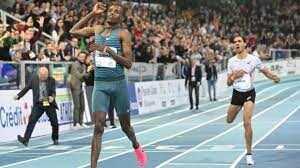
To put Girma’s time in perspective, his pace over the 3,000m was two minutes and 28 seconds per kilometer and 3:58 per mile. Girma went through 1,500m in 3:42 and through 2,000m in a mind-boggling four minutes and 55 seconds.
The U.S. 5,000m and 10,000m record holder Grant Fisher finished fifth with a new indoor 3,000m personal best of 7:35.82.
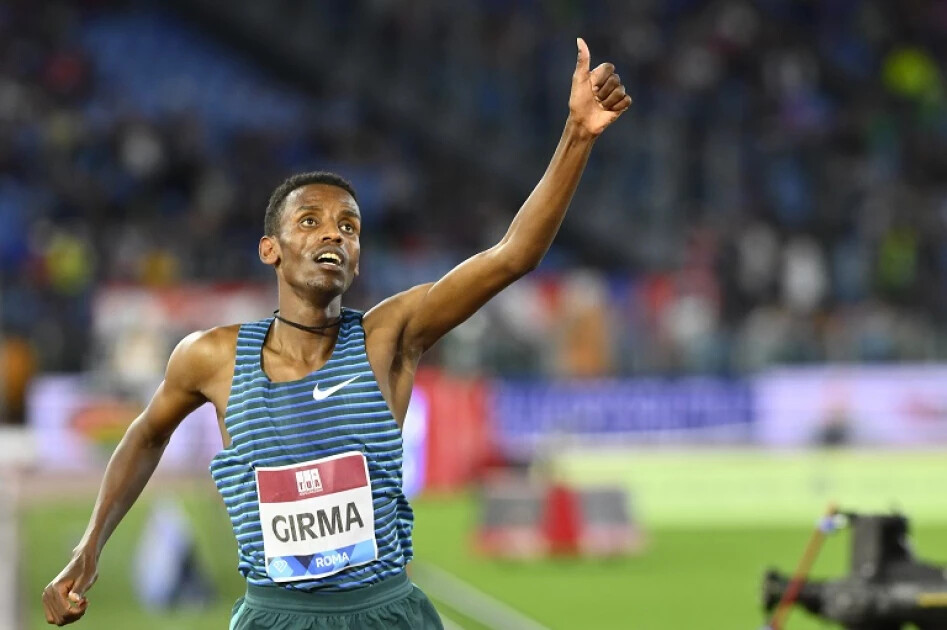
At the 2020 Olympics, Gimra won the silver medal in the 3,000m steeplechase with an 8:10.38 clocking, only behind Morocco’s Soufiane El Bakkali in 8:08.90. He followed his Olympic performance with a 2022 World Indoor Championship silver medal in the 3,000m in Belgrade, Serbia, and another silver medal at the World Athletics Championships in his signature event, the 3,000m steeplechase.
Ingebrigtsen ended up setting a world lead and meeting record of 3:32.38 in the men’s 1,500m but ultimately missed his indoor world record of 3:30.60 that he aimed for.
Girma is also the Ethiopian national record holder in the 3,000m steeplechase and is listed as the 12th fastest of all time.
(02/16/2023) Views: 674 ⚡AMPby Marley Dickinson
WXC Bathurst 23 U20 men's preview: Cheruiyot looks to regain crown for Kenya
More than a decade has passed since a Kenyan athlete won the U20 men’s title, but there’s a good chance that drought could end at the World Athletics Cross Country Championships Bathurst 23.
The 2019 edition was the first World Cross since 1984 in which a Kenyan athlete didn’t make it on to the U20 men’s podium, and Kenya didn’t achieve a top-two finish in the team standings, so this year’s squad – led by Ishmael Kirui and Reynold Kipkorir Cheruiyot – will want to ensure the same doesn’t happen again.
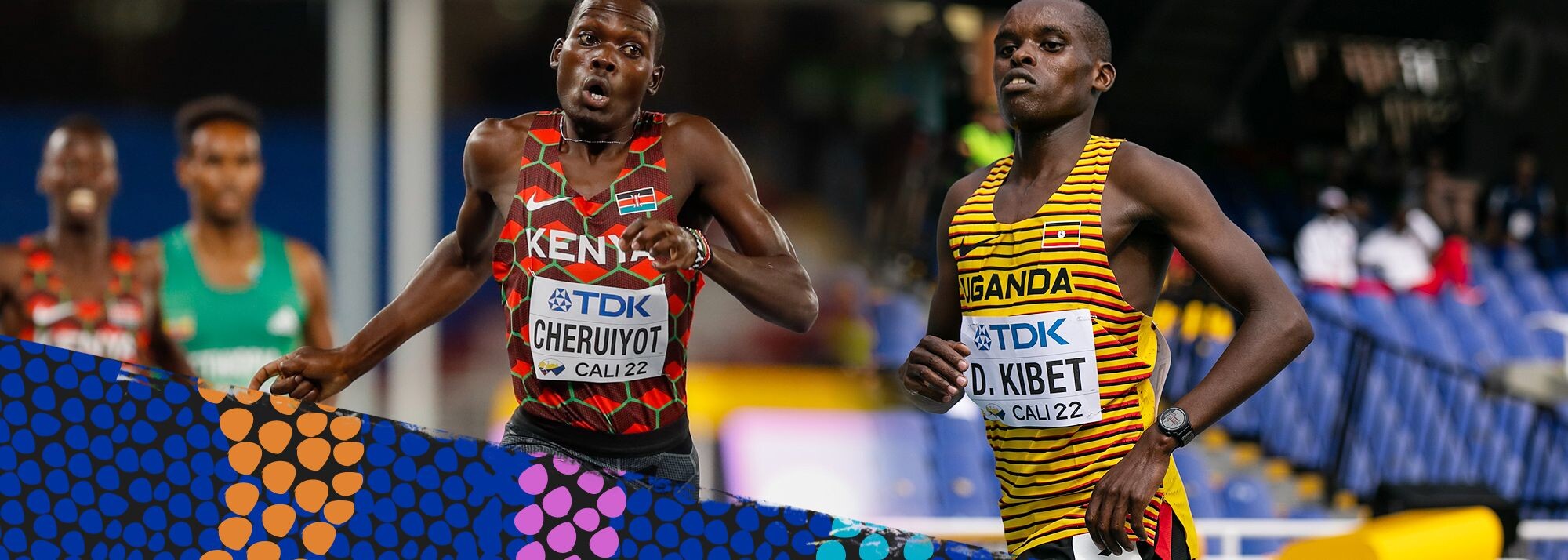
Kirui was a convincing winner of Kenya’s trial race in December last year. Although he turned 18 just earlier this month, he has already represented Kenya on the senior stage, placing sixth over 5000m at the African Championships last year. He set PBs of 7:52.74 for 3000m and 13:26.98 for 5000m last year, both at altitude in Nairobi.
This will be his first race outside of his home continent, and possibly his first cross-country race at sea level, but he will be somewhat accustomed to running in the kind of heat that is forecast for race day.
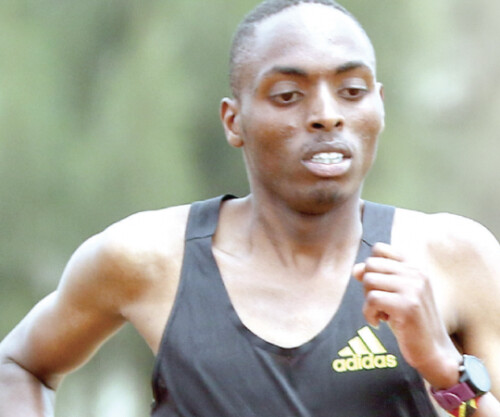
Cheruiyot, who finished four seconds behind Kirui in Kenya’s trial race, has already displayed remarkable range – a trait which often goes hand-in-hand with being a good cross-country runner. Last year he won the world U20 1500m title in Cali, having set a PB of 3:34.02 over the distance one month prior, the fastest time in the world last year by an U20 athlete. He also clocked PBs of 7:38.83 for 3000m and 28:36 for 10km on the roads, showing he has remarkable endurance as well as great foot speed.
The Kenyan team also includes Dennis Kipkirui and Daniel Kinyanjui, both of whom have international racing experience.
Ethiopia – winners of the past two team titles, and three of the past four U20 men’s titles – will be tough to beat.
Bereket Zeleke won the U20 men’s race at the prestigious Jan Meda Cross Country last month, which doubled as Ethiopia’s trial event for Bathurst. Boki Diriba finished a close second on that occasion, as Zeleke avenged his defeat from the Ethiopian U20 Championships on the track in 2022. Diribi has already produced some impressive performances at home and abroad; he clocked 28:32.8 for 10,000m at altitude in Hawassa, Ethiopia, and later in 2022 he finished third at the New Delhi Half Marathon in 1:00:34.
The unheralded Abel Bekele was only two seconds behind Diriba at the Jan Meda Cross Country. Bereket Nega was further back in sixth, but he has proven his form in a range of overseas races.
Uganda is the only nation to have consistently broken up the Kenya-Ethiopia hegemony in recent editions of the World Cross, and in Kenneth Kiprop they have a genuine medal contender.
Kiprop was an impressive winner of Uganda’s trial race, which was meant to have been held over 8km, but due to the athletes’ speed in the race, officials were confused over how much distance had been covered and so instructed the athletes to complete an extra lap. They ended up covering 10km and Kiprop won by almost a minute in 29:29 – faster than the winning time in the senior men’s race.
Silas Rotich finished one place short of the podium at last year’s World Mountain Running Championships, so he will be determined to return to Uganda with a medal of some form. Dan Kibet, a world U20 finalist over 3000m in 2021 and 2022, is another one to watch.
The US team is led by national U20 cross-country champion Emilio (aka ‘Leo’) Young, who in 2022 ran the fastest mile by an U18 athlete, 4:00.77. Sam Mills and Luke Birdseye, who finished fourth and fifth respectively at the European Cross and formed part of Britain’s gold-medal-winning team, are also in the field. Australia’s Logan Janetski and Archie Noakes, meanwhile, will be flying the flag for the host nation.
(02/15/2023) Views: 592 ⚡AMPby World Athletics
World Athletics Cross Country
Athletes from across the globe will descend on Australia for the World Athletics Cross Country Championships Bathurst 2021. Mount Panorama is better known as the home of Australia’s premier endurance motor race, but in one year from now, it will welcome the world’s best endurance runners for what will be Australia’s first World Athletics Series event in...
more...London, Ont. runner breaks Moh Ahmed’s U23 5,000m record
At the Windy City Invite in Chicago on the weekend, Evan Burke of London, Ont., put himself in elite company by breaking Moh Ahmed’s Canadian U23 indoor record in the 5,000m, running 13:38.46.
Burke, who attends Stanford University in Palo Alto, Ca., finished sixth in the race behind the 2022 NCAA cross-country champion Charles Hicks, clocking the sixth-fastest 5,000m time in his school’s history.
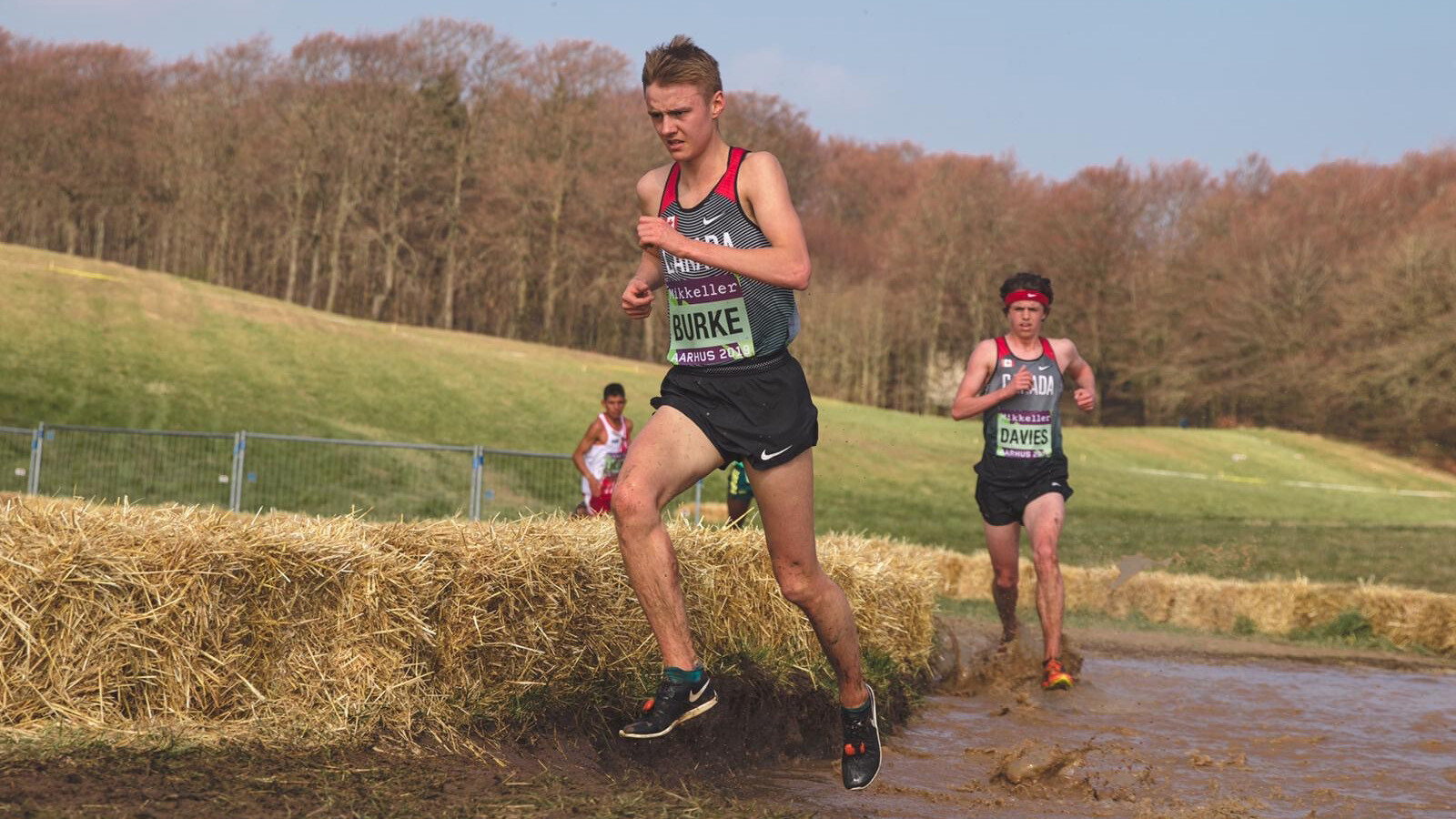
Burke’s previous accomplishments include winning the 2018 Ontario XC Championships and finishing fourth in the 3,000m at the 2018 Youth Olympic Games in Buenos Aires, where he set a Canadian U18 record of 8:14.99.
His achievements eventually led him to a scholarship at Stanford University in Palo Alto, Calif., where he is currently in his fourth year and competes with the school’s cross-country and track program, specializing in the 3,000 and 5,000m.
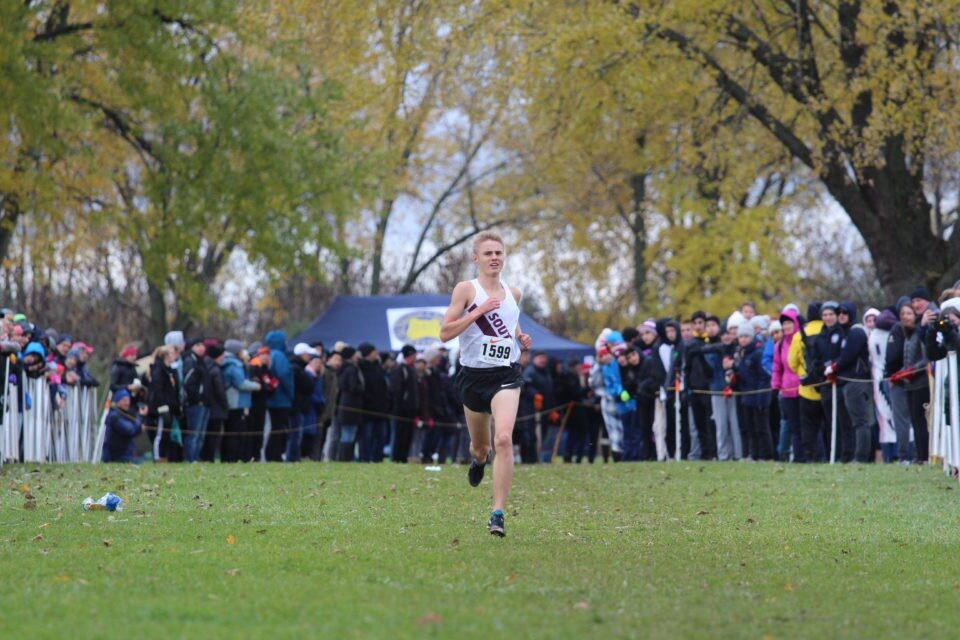
The previous record, held by Ahmed, was set in 2011, when he ran 13:41.74 at the Texas A&M Invite. Burke bested Ahmed’s time by three seconds.
Burke’s record is the third Canadian U23 record to be broken in this 2022-2023 indoor season, joining Quebec’s Olivier Desmeules of Penn State University, who broke the 600m record, and Vancouver’s Ceili McCabe of West Virginia University, who broke her own women’s 3,000m record in December.
(02/15/2023) Views: 584 ⚡AMPby Running Magazine
Bernard Wambua wins the monthly KATA 10K Time Trial clocking 29:14
Bernard Wambua and Zachariah Kirika emerged as the winners of the 18th edition of KATA (Kenyan Athletics Training Academy) 10k and 5K Time-Trial that took place on Wednesday Feb 15 in Thika, Kenya.
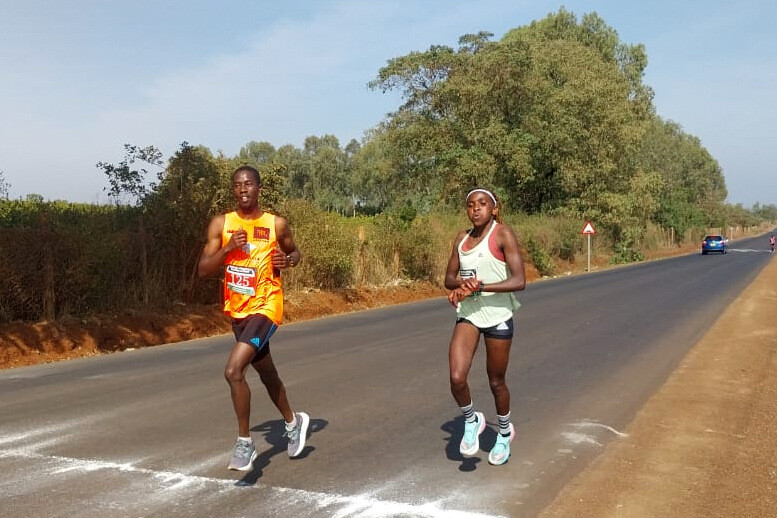

The duo clocked 29:14.8 and 15:14.1 in the trials held on a 5Km- loop that has become the standard distance for the Training Academy.
Peter Mwaniki and Peter Wanyoike finished second and third in the 10Km while Evans Kiguru and Anthony Mukundi occupied similar positions in the 5km.
In women, Lucy Mawia led the class, cloccking 33:19.8 for the 10k ahead of Lilian Lelei who clocked 33:35.5.
The March Trial is schedule March 15 at the Stadium in Thika Kenya. This will be the 18th monthly event.
10Km
1. Bernard Wambua 25 119 29:14.8
2. Peter Mwaniki 24 112 29:42.6
3. Peter Wanyoike 26 114 30:03.6
4. Raphael Gacheru 23 106 30:25.5
5. Peter Mburu 27 110 31:25.3
6. Simon Ngumbao 27 84 32:46.2
7. Eston Mugo 30 125 33:19.4
8. Lucy Mawia 24 121 33:19.8
9. Lilian Lelei 26 122 33:35.5
10.Chris Kamande 35 107 36:11.6
11. Catherine Njihia 24 90 36:22.9
12. Paul Ng’ang’a 42 120 36:38.3
13. Kellen Waithera 36 124 36:38.7
14. Naomi Wambui 39 123 37:08.2
5Km
1. Zachariah Kirika 22 89 15:14.1
2. Evans Kiguru 27 111 15:52.5
3. Anthoney Kamande 35 117 16:07.3
4. John Mutiso 19 109 16:27.1
5. Alfred Kamande 25 115 16:51.6
6. Amos Chirchir 23 108 17:36.4
7. Peter Mukundi 25 113 17:57.8
8. Lawrence Maina 27 118 18:17.9
9. Lilian Musenya 22 97 22:03.9
(02/15/2023) Views: 656 ⚡AMPKATA Time Trial Series
The Kenyan Athletics Training Academy (KATA) in Thika Kenya stages a monthly time trial. Starting Sept 2021 this monthly event is open to anyone who would like to get an official time on a acurant course. Results will be published at My Best Runs so race directors and other interested people can see what kind of shape our participants are...
more...Kimeu, Wasike eyes slot in Team Kenya for Budapest global show
The former World Under-20 400m finalist Kennedy Kimeu and sprinter Moses Wasike are seeking to qualify for the 2023 World Athletics Championships in Budapest Hungary and the 2024 Paris Olympic Games.
The two set their targets to feature in major events after recording victories at the Athletics Kenya (AK) track and field weekend meeting at the Moi Stadium, Kisumu.
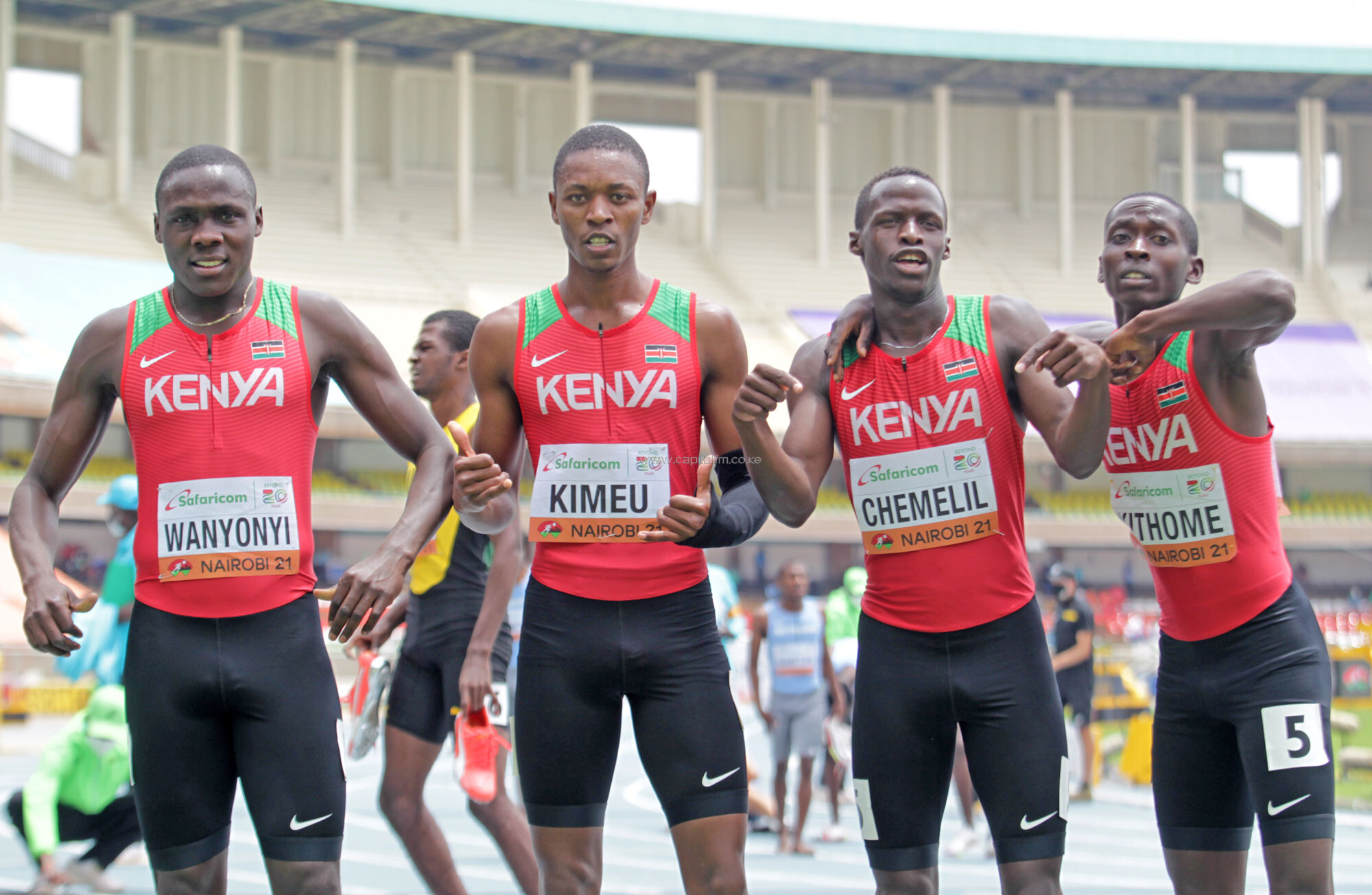
Kimeu, who was the team captain for Team Kenya during the 2021 World Under -20 Championships, said he wants to run well and secure a slot for Budapest in August.
“I know nothing will come easy and I am aware I will need to really focus on my training to achieve my goal,” he said.
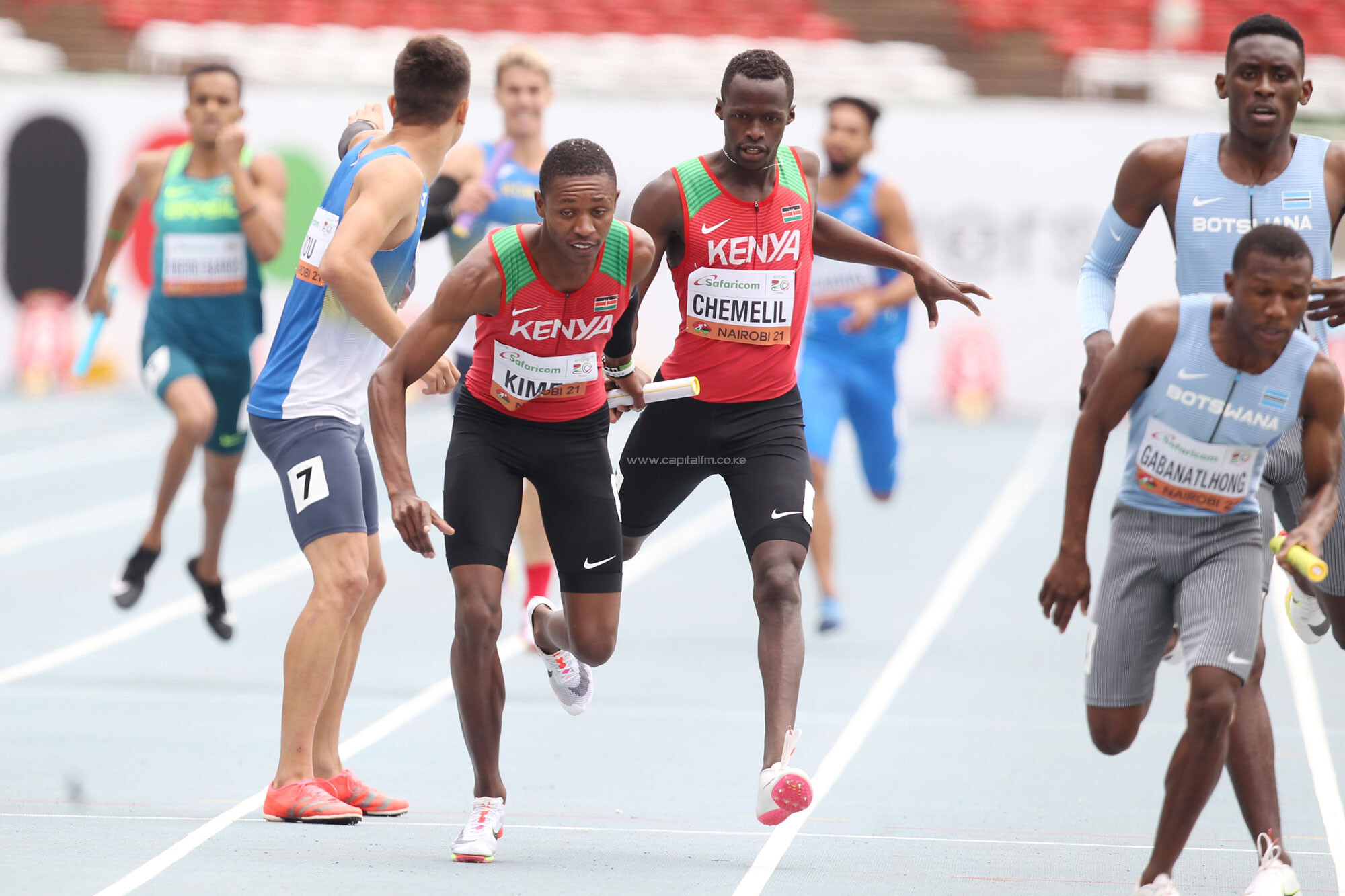
To achieve his goal, Kimeu said his focus is to lower his time and ensure he qualifies for the World Championships.
“Mine is not a race against opponents but against time. I want to meet the qualifying standards because I want to compete at the World Championships and if possible at the Olympic Games,” he said.
He said he believes this is the time to stay focused if he is to realize his dream. “I also want to appreciate my coach and family who have been very supportive during my training,” he said.
Kimeu won the one-lap race after timing 46.8 ahead of Allan Kipyego (47.3) and Gilbert Nyamau (47.5), who completed the podium during the AK Kisumu meeting over the weekend.
Wasike on his part said his focus is to run sub-10 seconds this season to give him a chance.
“Right now, my body has been responding well and I hope I will soon realize my dream,” said Wasike. Like Kimeu, Wasike said his main target is to qualify for a major championship.
(02/15/2023) Views: 509 ⚡AMP
by Emmanuel Sabuni
World Athletics Championships Budapest 23
From August 19-27, 2023, Budapest will host the world's third largest sporting event, the World Athletics Championships. It is the largest sporting event in the history of Hungary, attended by athletes from more than 200 countries, whose news will reach more than one billion people. Athletics is the foundation of all sports. It represents strength, speed, dexterity and endurance, the...
more...WXC Bathurst 23 senior men's preview: Cheptegei to defends in loaded field
The defending champion, a two-time winner, the world half marathon champion, Olympic and world gold medalists. The senior men’s 10km at the World Athletics Cross Country Championships Bathurst 23 on Saturday (18) looks set to offer a clash for the ages.
The top three from the last edition in Aarhus in 2019 all return as Joshua Cheptegei races to retain his crown against a field featuring his fellow Ugandan Jacob Kiplimo, runner-up four years ago, and Kenya’s two-time champion Geoffrey Kamworor.
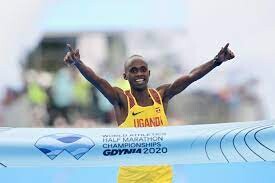
Kamworor will be joined on the Kenyan team by world half marathon silver medalist KibiwottKandie and Diamond League champion Nicholas Kipkorir, while Ethiopia’s greatest strength comes in the form of Olympic 10,000m champion Selemon Barega and world 5km record-holder Berihu Aregawi.
Then there’s Burundi’s RodrigueKwizera – 11th at the 2019 World Cross but winner of last season’s World Cross Country Tour and joint leader on this season’s tour – along with many other athletes ready to make their mark.
For Cheptegei, Bathurst offers an opportunity for the 26-year-old to follow in the footsteps of stars such as Kamworor, Ethiopian great KenenisaBekele and official event ambassador Paul Tergat – the latter pair having achieved the feat multiple times – in becoming a back-to-back winner of the senior men’s title.
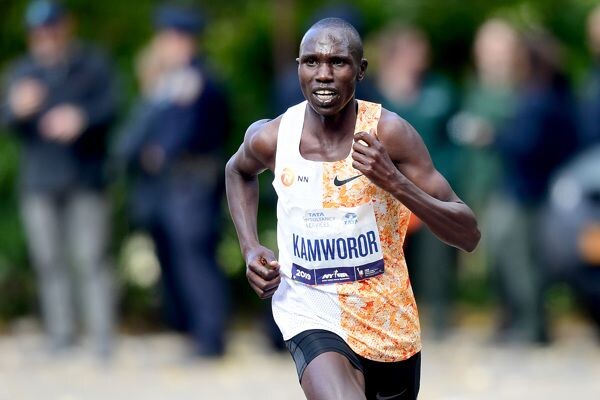
After disappointment at his home edition of the championships in Kampala in 2017, when he struggled while leading on the last lap and eventually finished 30th, Cheptegei was triumphant in Aarhus two years later as he won a first world cross country title to go with his world 10,000m silver from 2017 and two Commonwealth Games titles from 2018. Since then, he has become an Olympic and world champion, winning the 5000m in Tokyo and the 10,000m in Doha and Oregon, while he has also set world records in both disciplines.
Affected by injury in 2022, Cheptegei ended his year with a 10km win in Madrid in 27:09 and has been working towards the World Cross Country Championships since then.
In 2019 he led Uganda to the senior men’s team title and in 2017 his 30th-place finish clinched team bronze for the nation. Joined by Kiplimo, who has individual gold medal ambitions of his own, plus 2019 U20 ninth-place finisher Samuel Kibet and 19-year-old Rogers Kibet, who placed in the top three at four World Cross Country Tour Gold meetings last year, another team medal will be the aim.
Two years on from becoming Uganda’s first ever World Cross Country Championships gold medalist thanks to his U20 win on home soil, Kiplimo missed the senior title by just four seconds in Aarhus, but like Cheptegei, his star has continued to rise ever since. The 22-year-old won the world half marathon title in 2020 and then claimed Olympic and world bronze in the 10,000m, before completing a 5000m and 10,000m double at the Commonwealth Games. Now he targets another global gold.
But Kamworor has the same aim. With his own injury struggles behind him, the 30-year-old – winner of the U20 world cross country title in Punta Umbria in 2011 before his senior wins in Guiyang in 2015 and Kampala in 2017 – will look to regain the crown. In January the three-time world half marathon champion won at the National Police Service Cross Country Championships ahead of Commonwealth 10,000m silver medalist Daniel SimiuEbenyo, and he has proven time and time again that he thrives on the major stage.
With former world half marathon record-holder Kandie, SabastianKimaruSawe and Olympic and world 5000m finalist Kipkorir joining them in the Kenyan squad, the nation has a strong opportunity to claim the senior men’s team title for the first time since 2011.
But Ethiopia will also be looking to regain a team title claimed in 2013, 2015 and 2017. Leading the way is Barega, who made world finals in the 5000m and 10,000m in Oregon and then finished second in the Great North Run half marathon in September before starting his year with a win at the Elgoibar Juan Muguerza Cross Country. So far his World Cross career features two fifth-place finishes – one in the senior race in 2019 and another in the U20 event in 2017.
Aregawi is another athlete to watch. The 21-year-old, who finished fourth in the Olympic 10,000m final in Tokyo, won the Jan Meda Cross Country in Sululta – Ethiopia’s trial race for Bathurst – at the start of the year and makes his World Cross Country Championships debut.
GetanehMolla was third, MogosTuemay fourth and HailemariyamAmare sixth in that trial race and they all join Aregawi and Barega on the Ethiopian team.
So far, Thierry Ndikumwenayo’s ninth-place finish in the senior men’s race at the 2019 event is Burundi’s best men’s result at the World Cross Country Championships but given his pedigree in the discipline, Kwizera should be capable of building on that as he switches the Cross Country Tour for a global field. The Spain-based 23-year-old – winner in San Giorgio su Legnano and Venta de Banos recently – also finished fourth in the Valencia 10km in 27:04 last month and will hope to progress from 11th in 2019 and 39th in 2017.
Spain’s NassimHassaous and AbdessamadOukhelfen, who have also been busy on the World Cross Country Tour Gold circuit in their home country, compete at the World Cross Country Championships for the first time.
The US team is led by national cross country champion Emmanuel Bor, who has experience from competing at the 2019 edition in Aarhus, and he’s joined by 2017 11th-place finisher Sam Chelanga.
While the mixed team relay is considered the best medal chance of the host nation, Australia will be looking to make an impact on the team standings in the senior men’s race, too. The team's main contenders have the benefit of having checked out the venue early, and will have had more time to adjust to the conditions in Bathurst.
Oceanian 10,000m record-holder Jack Rayner won the trial race ahead of Matt Ramsden and Oceanian marathon record-holder Brett Robinson and the trio return to World Cross action after respective 62nd, 38th and 30th-place finishes in 2019. Robinson was 28th in 2015 and 29th a decade ago in Bydgoszcz, while Rayner was 40th in Kampala.
Prior to Bathurst, 50 World Athletics member federations have yet to compete at the World Cross Country Championships but in the senior men’s race on Saturday, six of those nations are set to field athletes – Cook Islands (Andrew John Logan), Marshall Islands (Bildad Bildad), Northern Mariana Islands (Sildrey Job Noceja Veloria), Pakistan (Sohail Amir), French Polynesia (Damien Troquenet) and Solomon Islands (Martin Faeni, Gregory Foasilafu, Rosefelo Siosi).
(02/15/2023) Views: 680 ⚡AMPby World Athletics
World Athletics Cross Country
Athletes from across the globe will descend on Australia for the World Athletics Cross Country Championships Bathurst 2021. Mount Panorama is better known as the home of Australia’s premier endurance motor race, but in one year from now, it will welcome the world’s best endurance runners for what will be Australia’s first World Athletics Series event in...
more...Peter Bol’s doping suspension lifted after B-sample does not match
The 800m Olympic finalist has been exonerated after results show an atypical finding between the two samples.
On Monday evening, Commonwealth Games 800m medallist Peter Bol’s provisional suspension for doping was lifted after his B-sample did not match his A-sample, meaning he can return to competition immediately.
Last month, the Australian 800m Olympic finalist made headlines as he returned a positive result for the banned substance erythropoietin (EPO) from a urine sample taken in October.
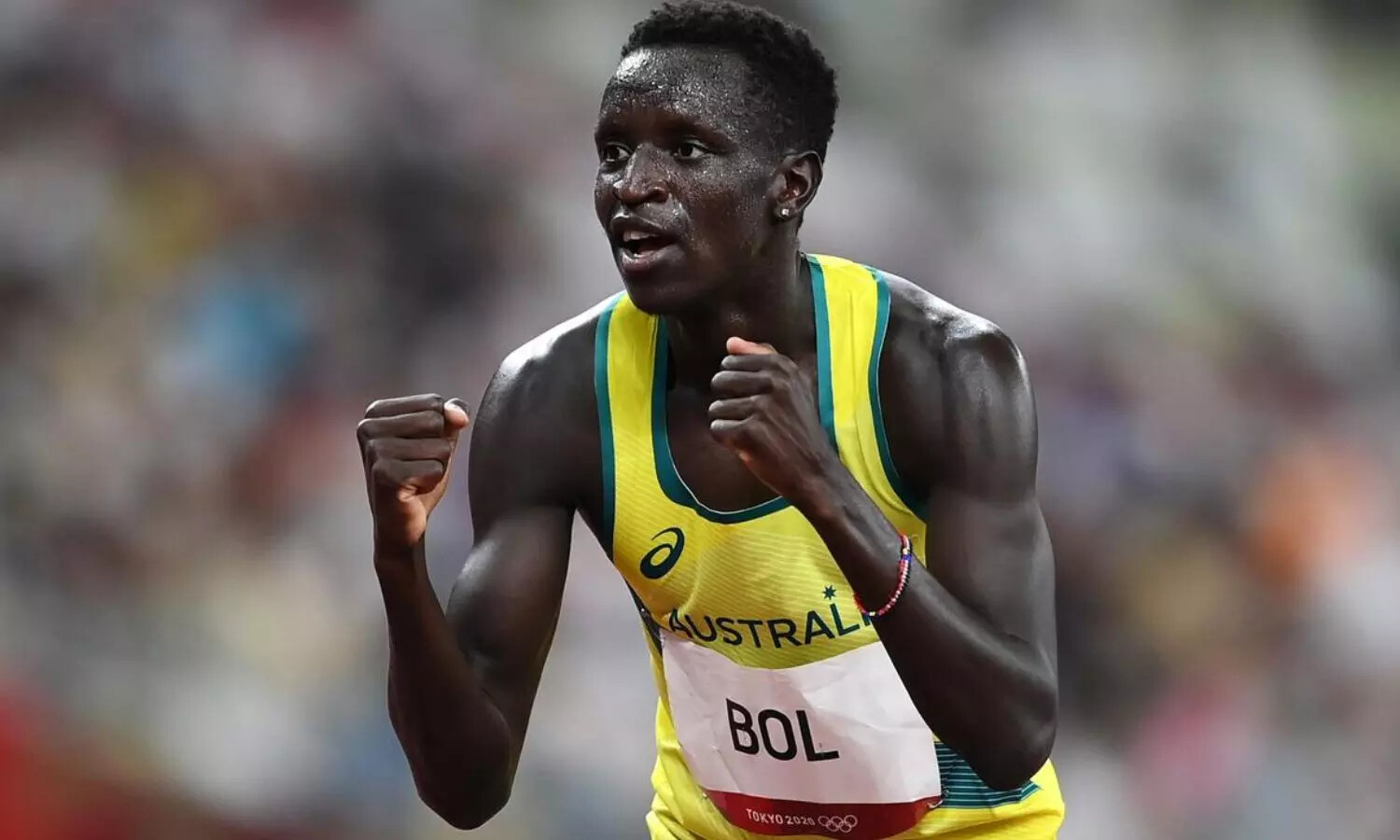
Throughout the process, Bol stressed his innocence and said he would do whatever was necessary to clear his name. “I told everyone that I was innocent and asked everyone in Australia to believe me and let the process play out,” Bol wrote on Twitter, as he faced the possibility of a four-year ban.
Bol voluntarily handed over his laptop, iPad and phone to Sport Integrity Australia to help prove his innocence and paid $1,200 just to have his B-sample tested.
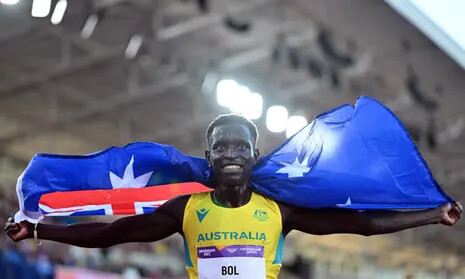
During the process, a group of Norwegian scientists raised their doubts about Peter Bol’s positive A-sample, saying the testing for EPO by the World Anti-Doping Agency remains subjective, especially in cases such as Bol’s, which delivered a “borderline” positive result.
“I was hopeful that the process would exonerate me,” Bol wrote. “I am relieved to report that it did.”
Sport Integrity Australia (SIA) said the suspension was lifted after Bol’s B-sample produced an “atypical finding,” which is not the same as a negative test result; it’s a report from a WADA-accredited laboratory that requires further investigation.
Despite Bol being allowed to return to training, Sports Integrity Australia (SIA) released a statement saying that Bol’s case remains open, and the SIA will now seek for a World Anti-Doping Agency (WADA) accredited laboratory to obtain a second opinion from an expert on the WADA EPO Working Group, which provides expert advice and analysis concerning the overall application of EPO testing.
(02/14/2023) Views: 616 ⚡AMPby Running Magazine
Running together on Valentine’s Day
We runners are fortunate to have a very large and supportive community that routinely come together to celebrate our shared passion for all things running. And yet, for those who do, there is something particularly special about spending time and sharing that experience with your significant other.
Whether it’s training for the same race, travelling to run in a new and exotic place or simply soaking up the aura and atmosphere of where you live, running together with your partner can be an opportunity to strengthen your relationship and share in something that means a lot to you both.
While some running couples do not run together, many others do, and whether you and yours already enjoy the benefits of running together or you’re just thinking of asking that special someone to join you for a run, here are a few tips, rules and advice to make the experience more enjoyable and likely to last.

Run at a comfortable pace
It wouldn’t be fair to ask your partner to pick up their pace and run faster than they normally would. Now is also not the time to attempt a workout and expect your partner to comply. Rather, slow down and enjoy a more relaxed pace that both parties are happy with. Every running speed offers benefits so worry less about your pace and just enjoy the run.
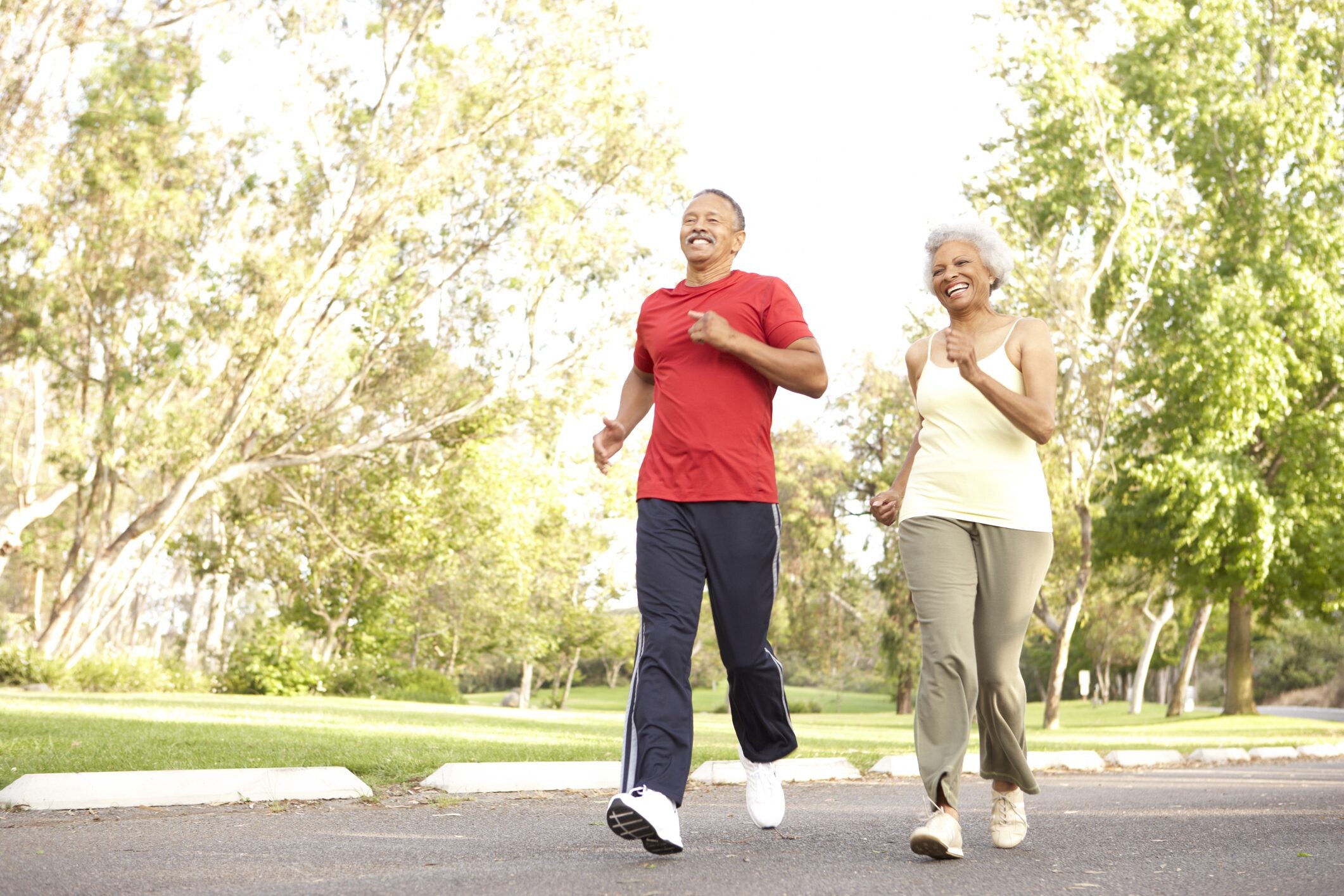
Decide the route and distance together
Rather than find yourself fighting over how far you plan to go, or whether it’s left or right at the lights, decide upon a mutually agreed course before you depart. That way, you can enjoy the run and each other’s company without the stress of making decisions while on the run.
Don’t complain
While you’re at it, try not to use this time to stress over financial or work-related problems, relationship issues or negative aspects of life. Rather, focus on the positive aspects of the day, the run and being together. Don’t expect to carry on a constant conversation. Enjoy and embrace silence and the tranquility of the run.
Leave the headphones and devices at home
Unless you both agree and enjoy using them while running together, leave your music and media at home. Try not to obsess over your GPS or heartrate data either. Again, make this time about the experience and enjoying one another’s company.
Don’t criticize or correct your partner’s form
Unless you’re being constructive and the advice is welcome and appreciated, don’t judge or analyze aspects of form or running technique.
Stick to two
Unless your best friend is the shared family dog, it’s probably not a good idea to invite all your training partners and running buddies. There’s a time and place to run with a group but this is not one of them.
Don’t stop at the door
After your run, take the time to refuel and recover together. Make a protein shake or smoothie and share it. Offer to foam roll or massage your partner’s sore spots. Most importantly, plan your next run together.
Do you run with your significant other? What other tips or advice would you offer for running together?
(02/14/2023) Views: 595 ⚡AMPby Dan Way
WXC Bathurst 23 senior women's preview: Gidey goes for gold against tough opposition
Had the World Athletics Cross Country Championships Bathurst 23 gone ahead in 2021 as originally planned, there’s a strong chance that Letesenbet Gidey would already be a world champion at the discipline.
The Ethiopian was in sensational form in 2020 and 2021, setting world records of 14:06.62 for 5000m and 29:01.03 for 10,000m. She had to settle for bronze at the Olympic Games at the longer event, but she prioritized global honors over records in 2022 and was rewarded with her first world title on the track, winning the 10,000m in Oregon in a nail-biting race.
The 24-year-old is now focused on winning her first individual senior world cross-country title. She won back-to-back U20 crowns in 2015 and 2017, joining an elite club of athletes to achieve the feat, alongside Faith Kipyegon and Genzebe Dibaba.
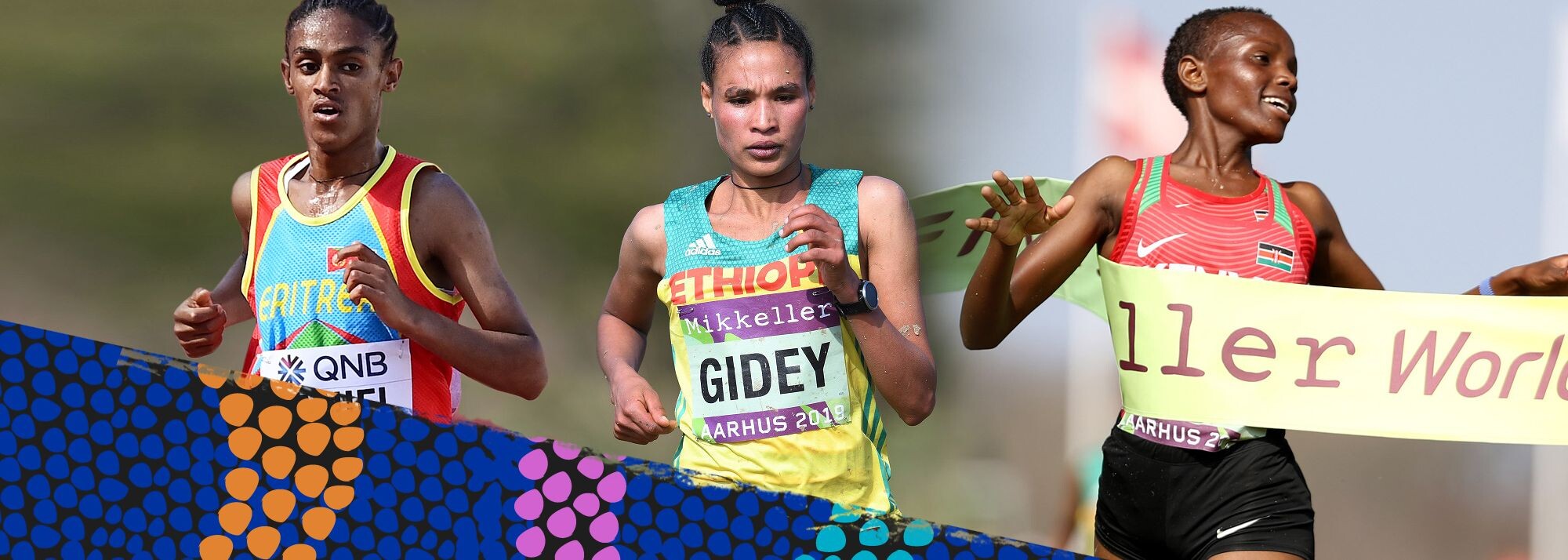
Gidey finished third in the senior women’s race in 2019 and earned gold in the team competition, but this time she heads to Bathurst as one of the big favorites.
If her performance at the Jan Meda Cross Country – Ethiopia’s trial event for the World Cross – is anything to go by, Gidey is certainly in form to challenge for gold in Bathurst. In that race back on 1 January, she bided her time until the last kilometer of the race and then soon opened up a gap of about 20 seconds on a strong domestic field.
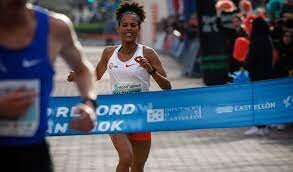
It looked as though she was running within herself, too.
As much as individual glory will be Gidey’s biggest goal on Saturday, she will also want to earn gold in the team standings, and Ethiopia will once again be in with a great shout of doing exactly that.
Gete Alemayehu, who has a 1:06:37 half marathon PB, was second in the trial race, just ahead of 30:06.01 10,000m performer Tsigie Gebreselama, bronze medalist in the U20 race in Aarhus in 2019. Fellow Ethiopian Fotyen Tesfaye just missed out on a top-10 placing in Aarhus, so will be keen to improve on that in Bathurst.
But Gidey and her Ethiopian compatriots won’t have an easy ride, as they’ll be up against someone who is undefeated in international cross-country races for more than a year.
Eritrea’s Rahel Daniel has dominated the World Athletics Cross Country Tour and currently tops the season standings thanks to her three victories last month. She won at the prestigious Campaccio meeting in San Giorgio su Legnano, then two days later triumphed in Elgoibar, winning by eight seconds. More recently she won in Hannut, racing in heavy snow, showing she can cope well in any conditions.
Daniel enjoyed a successful 2022 campaign on the track, setting national records for 5000m (14:36.66) and 10,000m (30:12.15), the latter when placing fifth at the World Championships in Oregon.
But the 21-year-old is clearly more at home on cross country, and despite this being her World Cross debut, Daniel will have high hopes for a podium finish.
Beatrice Chebet is just as formidable an opponent, though. The Kenyan took 5000m silver at the World Championships last year and won the U20 women’s title at the 2019 World Cross in Aarhus. She is also the African, Commonwealth and Diamond League 5000m champion, and is a former world U20 champion on the track.
She has raced just twice in cross-country events since the end of the track season, but won both of her races. She won by 13 seconds in Atapuerca in November and by 15 seconds at the Cinque Mulini in January.
In the absence of Chebet at the Kenyan trials, teenager Grace Loibach Nawowuna was a surprising winner of the senior women’s race, beating Olympic semifinalist Edinah Jebitok by four seconds. The Kenyan team also includes two-time world cross-country champion Emily Chebet and Agnes Ngetich.
Burundi’s Francine Niyonsaba missed the peak of the 2022 track season through injury, but still managed to win three races on the Wanda Diamond League circuit, and then triumphed at the Venta de Banos Cross Country in December. In her latest appearance, though, she was a distant fifth in Elgoibar, some 47 seconds behind Daniel.
Stella Chesang, the 2018 Commonwealth 10,000m champion, was a dominant winner of the recent Ugandan Cross Country Championships and is keen to improve on her 21st-place finish from the 2019 World Cross. She is joined on the Ugandan team by world U20 5000m bronze medallist Prisca Chesang.
Olympic finalist Nozomi Tanaka, who holds national records for 1000m, 1500m and 3000m, leads the Japanese team. The 2018 world U20 3000m champion placed 39th at the last World Cross when she was still just 19 years of age, so she’ll be hoping for a higher position this time. Ririka Hironaka, who earned U20 team bronze in 2019, will also be flying the Japanese flag in Bathurst.
Ednah Kurgat and Weini Kelati feature on the US team, while Australia’s Rose Davies and Leanne Pompeani will aim to give the home crowd something to cheer for. Other contenders include Canada’s Regan Yee, Mexico’s Laura Galvan, and Britain’s Abbie Donnelly.
(02/14/2023) Views: 858 ⚡AMPby World Athletics
World Athletics Cross Country
Athletes from across the globe will descend on Australia for the World Athletics Cross Country Championships Bathurst 2021. Mount Panorama is better known as the home of Australia’s premier endurance motor race, but in one year from now, it will welcome the world’s best endurance runners for what will be Australia’s first World Athletics Series event in...
more...Kosgei joins Obiri, Korir at Ras Al Khaimah Half Marathon
Women’s world marathon record holder Brigid Kosgei has confirmed participation at the Ras Al Khaimah Half Marathon in Ras Al Khaimah, United Arab Emirates in February 18, 2023.
Kosgei has a life time best of 2:14:04 over the 42km distance and 1:04:49 in the 21km distance. She returns to the Middle East with the hope of improving her second-place finish that she settled for in 2020.
Kosgei has a decorated running career which includes being the Olympic marathon silver medallist and 2017 Bogota Half Marathon champion. She is also the 2019 Bahrain and Houston Half Marathon champion.
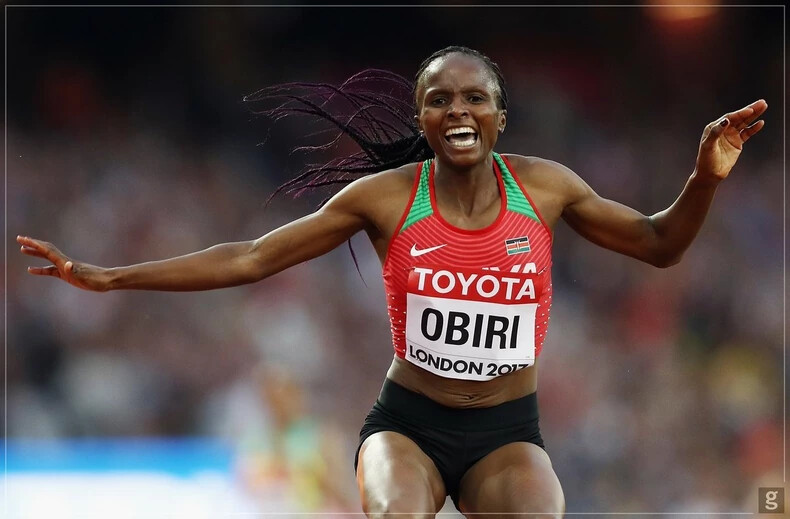
She will be joining two-time World 5000m champion Hellen Obiri and World marathon silver medallist Judith Korir.
Obiri, who has a personal best time of 1:04:22 over the distance, placed second in last year’s edition of the race after being edged out by Ethiopia’s Girmawit Gebrzihair. Gebrzihair won the race in 1:04:14. Sheila Chepkirui placed third in 1:04:36.
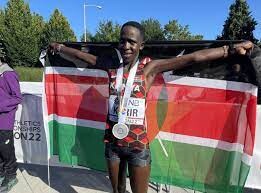
On her part, Korir is the 2021 Lugano Half Marathon champion with a personal best time of 1:05:28. She settled for fourth place in last year’s edition of the race in 1:05:28.
Meanwhile, in the men’s category, Daniel Mateiko will face-off Ethiopia’s Seifu Tura with the hope of a podium finish. Mateiko will be looking to improve on his sixth-place finish at last year’s edition of the race. He lines up with a personal best time of 58:26.
(02/14/2023) Views: 652 ⚡AMPby Abigael Wuafula
Rak Half Marathon
The Ras Al Khaimah Half Marathon is the 'world's fastest half marathon' because if you take the top 10 fastest times recorded in RAK for men (and the same for women) and find the average (for each) and then do the same with the top ten fastest recorded times across all races (you can reference the IAAF for this), the...
more...The most common reasons why people need physical therapy
Physical therapy is a specialized medical field that aims to assist people in recovering from physical ailments. Whether it’s a sports injury, car accident, or age-related condition, physical therapists can help patients regain their full range of motion and mobility. But why do so many people need physical therapy? In this blog post, we’ll explore the most common reasons why people seek out physical therapy services and how they can benefit from them. We’ll also cover some tips to make sure you get the most out of your physical therapy sessions.
What is Physical Therapy?
If you’ve ever had an injury or surgery, you may have needed physical therapy to help you recover. For starters, this is what you need to know about physical therapy. Physical therapy is a type of healthcare that helps people recover from injuries and illnesses. It uses a variety of techniques to reduce pain, improve movement, and prevent further injury.
Most people who need physical therapy are recovering from an injury, such as a sprained ankle or broken bone. Others may be dealing with a chronic condition, such as arthritis or back pain.

Physical therapists use a variety of treatments to help their patients recover. These can include exercises, stretching, massage, heat and ice therapies, and electrical stimulation. The goal of physical therapy is to help you regain strength and motion. With the help of a physical therapist, you can get back to your everyday activities and live a pain-free life.
The Most Common Reasons Why People Need Physical Therapy
There are many reasons why people might need physical therapy. Some common reasons include:

-Recovering from an injury or surgery
-Managing a chronic condition such as arthritis
-Improving balance and coordination
-Decreasing pain
-Increasing mobility and range of motion.
Physical therapy can be an important part of the healing process for many people. It can help them regain strength and function and improve their quality of life. Plus, it can be a great way to prevent future injuries or problems. Not to mention, it can be a great way to get some extra support and encouragement.
How Does Physical Therapy Help?
There are many ways in which physical therapy can help people. For example, if someone has suffered a stroke, physical therapy can help them regain movement and function. Physical therapy can also help people who have been in accidents or who have chronic pain conditions. Sometimes, people need physical therapy because they have had surgery and need to regain their strength. Not only can physical therapy help with physical movement, but it can also aid in mental and emotional health as well. Physical therapists are trained to create personalized treatment plans that may include exercises, stretches, and manual therapy to reduce pain and increase strength, flexibility, balance, and posture. Physical therapists also provide education on proper body mechanics and lifestyle modifications to prevent injury or chronic pain from reoccurring.
Keep in mind, physical therapists are not a replacement for medical treatment. It is important to consult with your doctor to discuss any medical concerns and whether physical therapy would be beneficial for you.
What to Expect During Physical Therapy
Going to physical therapy can be a daunting experience, especially if you don’t know what to expect. Here are some things you can expect during physical therapy:
1. An initial evaluation: This will involve the physical therapist assessing your problem area and range of motion. They will also ask about your medical history and any other relevant information.
2. A treatment plan: Based on the evaluation, the physical therapist will develop a treatment plan specifically for you. This may include exercises, stretches, manual therapy techniques, and more.
3. Education: The physical therapist will teach you about your injury or condition and how to properly care for it. They will also provide guidance on preventive measures you can take to avoid future problems.
4. Progress check-ins: Throughout your course of treatment, the physical therapist will periodically check in with you to see how you are progressing and make any necessary adjustments to the plan.
5. Discharge planning: Once you have reached your goals and are ready to discontinue therapy, the physical therapist will create a discharge plan outlining any continued exercises or precautions you should take moving forward.
Physical therapy is a great way to treat pain and injuries, but it can also be used preventatively. Knowing the most common reasons why people need physical therapy can help you identify if physical therapy could benefit you or someone in your family. Whether you are dealing with an injury, trying to improve your overall mobility, or just want to maintain good health, physical therapy may be worth considering. With the right exercises and treatments, physical therapists can provide lasting relief from pain and improve overall well-being.
(02/13/2023) Views: 632 ⚡AMPby Colorado Runner
2023 Tokyo Marathon Six Star Finishers going for GUINNESS WORLD RECORDS
On Sunday March 5, more than 3,000 participants in the Tokyo Marathon will be aiming to complete their AbbottWMM Six Star journey and achieve a GUINNESS WORLD RECORDS title in the process.
Going for the record of the ‘most people to earn a Six Star Medal at a single marathon’, runners in the Six Star program will contribute to the record attempt by completing the Tokyo Marathon and collecting their Six Star medal after crossing the finish line. This race signals the final Major of their journey which also includes the Boston, TCS London, BMW Berlin, Bank of America Chicago and TCS New York City Marathons.

Tokyo will mark a major milestone for the Six Star program as the total number of finishers since the program began will pass 10,000. The previous largest contingent of Six Star finishers at a single Major was 732 at the Tokyo Marathon in 2019. It was only back in 2019 when the 5,000 Six Star finishers mark was reached at the Boston Marathon, showing the increased interest and appetite for this global challenge in recent years.
Dawna Stone, CEO of Abbott World Marathon Majors said, “We are thrilled that the Tokyo Marathon is back in full force this year and is once again able to welcome international runners. We will see an unprecedented number of Six Star finishers in Tokyo, and we are delighted to be able to celebrate this moment in partnership with the Guinness World Records and the Tokyo Marathon.”
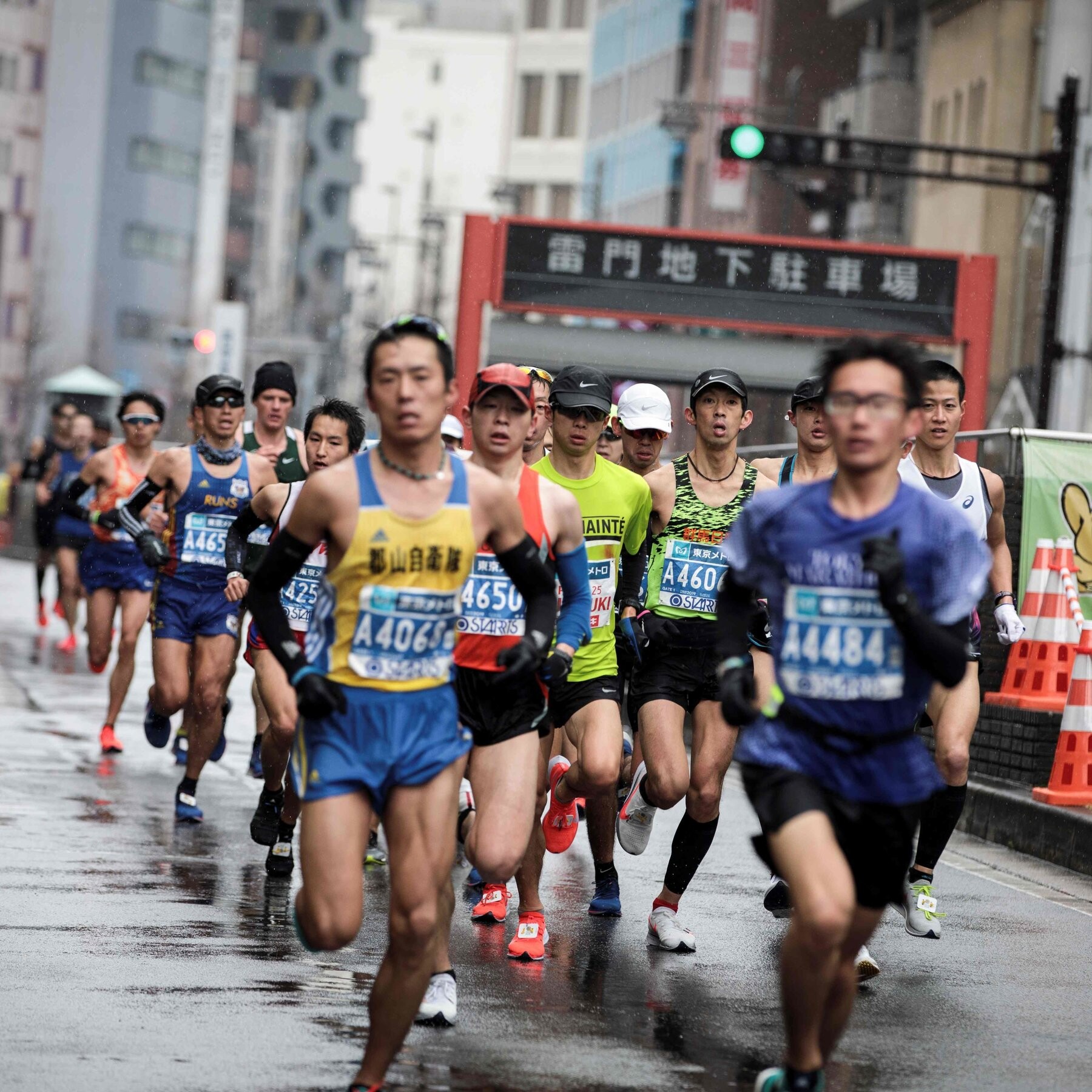
Katie Forde, SVP Brand & Digital at Guinness World Records added: “It’s our privilege to be working with World Marathon Majors and to be attending the Tokyo Marathon to verify an achievement which, due to the pandemic, is at least three years in the making. Good luck to all participating runners, we’ll see you at the finish line.”
To celebrate their additional race-day achievement, a commemorative medal is on sale now, giving Six Star runners a chance to show off an impressive three medals post-race [Tokyo Marathon, Six Star and Guinness World Records]. Once the record has been ratified on race day, an official presentation will be made to the Tokyo Marathon Foundation.
(02/13/2023) Views: 684 ⚡AMPby Running USA
Tokyo Marathon
The Tokyo Marathon is an annual marathon sporting event in Tokyo, the capital of Japan. It is an IAAF Gold Label marathon and one of the six World Marathon Majors. Sponsored by Tokyo Metro, the Tokyo Marathon is an annual event in Tokyo, the capital of Japan. It is an IAAF Gold Label marathon and one of the six World...
more...French Jimmy Gressier ran 13:12 to regain the European 5km record at the MonacoRun
Jimmy Gressier ran 13:12 to regain the European 5km record at the MonacoRun, a World Athletics Label event, in Monaco on Sunday (12).
The French 25-year-old had gone into the event targeting the area record of 13:14 that had been set by Italy’s Yemaneberhan Crippa in Herzogenaurach last April, that mark having taken four seconds off the continental record that Gressier had set in Monaco in 2020.
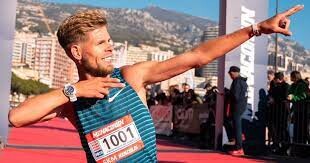
Pacing his run to perfection, the European 10,000m fourth-place finisher managed to take two seconds off the European record and won by 12 seconds ahead of South Sudan’s Dominic Lokinyomo Lobalu. Uganda’s world 5000m bronze medalist Oscar Chelimo finished third in 13:32.
“It was a controlled race. My pacers did a great job and the goal beforehand was to run close to 13:10,” said Gressier. “I came back from a great training camp in Kenya and I could feel my shape was getting better and better this week.”
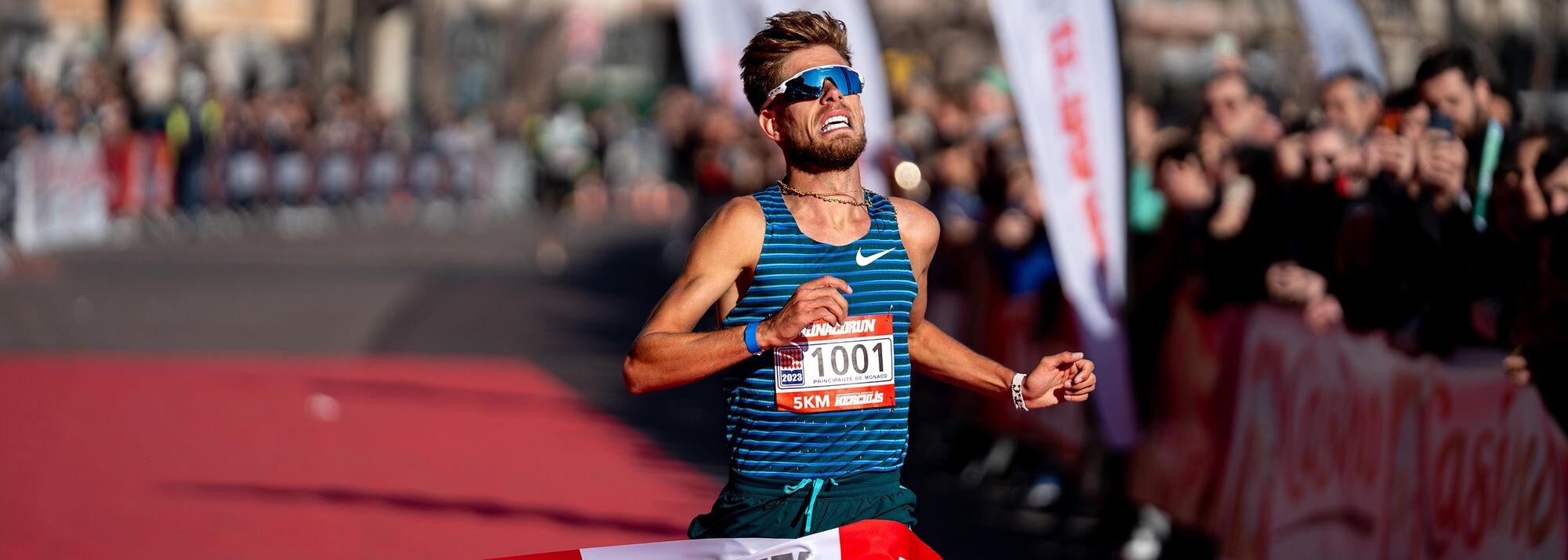
Gressier will continue to race on the roads over the next few weeks, competing over 10km and the half marathon in Castellon and Paris, before focusing on the 1500m and 5000m on the track during the outdoor season.
The women’s 5km was won by Kenya’s Mirriam Chebet in 15:40.
Chebet proved her form by finishing third at the Campaccio Cross Country Tour Gold meeting in San Giorgio su Legnano last month and in Monaco she secured a dominant victory, winning by 44 seconds ahead of Norway’s Ine Bakken. Jenipher Contois of France was third in 16:28.
(02/13/2023) Views: 753 ⚡AMPby World Athletics
Herculis 5k
The 5km Herculis course runs from the Port Hercule to the Quai Albert 1er and through the Boulevard Princesse Grace, give yourself a chance to run across the principality of Monaco and to participate in a fast, exclusive and official race. ...
more...Eilish McColgan to run 2023 Great North Run
Scottish runner hopes to follow in the footsteps of mum Liz by winning iconic half-marathon in September.
Eilish McColgan will return to the AJ Bell Great North Run this year, for her first competitive race on the iconic city to sea course, on Sunday September 10. The Scot took on the event for first time in 2021 on an alternate course that had been modified due to pandemic related restrictions and finished runner-up to Hellen Obiri.
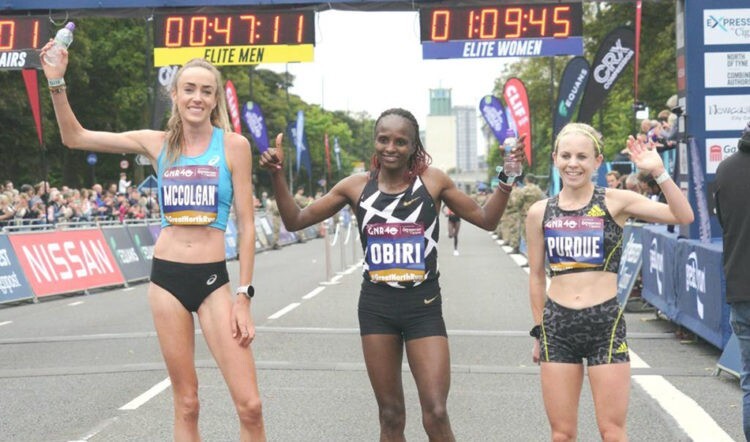
McColgan ran 67:48 on that occasion although she improved to a UK record of 66:26 at the Ras Al Khaimah event in 2022.
This year she will be following in the footsteps of her mum, Liz McColgan, who was a prolific presence at the event in the 1990s, taking top spot in 1992, 1995 and 1996.
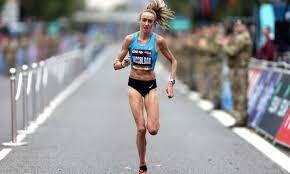
“I have such amazing memories of coming to Newcastle and taking part in the Junior Great North Run events,” said Eilish.
“We also have a great family history at the Great North Run, with mum being a three-time winner, so I’m looking forward to seeing what I can do on the original course.
“The pandemic course included a lot of uphill sections and was quite challenging, so I’m hoping for a much faster run this year.”
After an incredible 2022 on and off the track, Eilish has already confirmed plans to prioritise road running in 2023 ahead of her debut in the TCS London Marathon in April.
Brendan Foster, founder of the Great North Run, said: “After so many memorable performances from her mum, Liz, over the years, it’s wonderful for me to have the opportunity to invite Eilish back to the Great North Run this year.
“We’re delighted to confirm she will be back on the start line in September, she is an incredible ambassador for the sport and an inspiration to so many runners. We’re working on a competitive field and we’re sure it will be one to remember.”
(02/13/2023) Views: 582 ⚡AMPby Athletics Weekly
Great North Run
Great North Run founder Brendan Foster believes Britain is ready to welcome the world with open arms after the launch of the event's most ambitious plan to date. The Great World Run campaign seeks to recruit one runner from every country in the United Nations – 193 in total – to take part in the iconic half marathon in...
more...2023 Dubai Marathon Results: Abdisa Tola (2:05:42 Debut) and Dera Dida (2:21:11 PB) Win
Abdisa Tola won the Dubai Marathon with a world leading time of 2:05:42 running his debut at the distance. The 22 year-old Ethiopian, who is the brother of marathon world champion Tamirat Tola, pulled away with around 2k to go after briefly going off course at 39k and then re-taking the lead. Fellow-Ethiopians Deresa Geleta and Haymanot Alew Engdayehu took second and third with 2:05:51 and 2:05:57 respectively.
Little over 15 minutes later Dera Dida completed a very rare family triumph in a major marathon: The sister-in-law of Abdisa Tola, who is married to world champion Tamirat, stormed to her biggest career win. In fine weather conditions the 26 year-old clocked a personal best of 2:21:11. Ruti Aga was second in 2:21:24 and Siranesh Yirga completed an all-Ethiopian podium clocking 2:21:59.
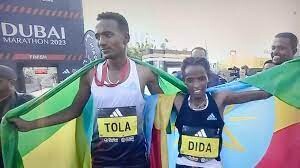
There was another triumph in a major marathon for Marcel Hug in the wheelchair event. The Swiss took the marathon with 1:23:50 while Eden Rainbow-Cooper of Great Britain won the women’s race in 1:47:15.
(02/12/2023) Views: 634 ⚡AMPDubai Marathon
In its relatively brief history (the race was first held in 2000), the Dubai Marathon has become one of the fastest, most respected and the most lucrative marathon in the world in terms of prize money. Each year thousands of runners take to the roads in this beautiful city in the United Arab Emirates (UAE) for this extraordinary race starting...
more...A Bear Was Stuck in the Snow in Minnesota. Locals Tried to Feed It Pop Tarts.
Luckily for the bear, a wildlife official arrived and rescued it from the chilly predicament
A Minnesota black bear became so stuck in snow that even the prospect of eating toaster pastries couldn’t coax it free.

On Monday, the Grand Forks Herald published a story about the rescue operation to free the bear, which was buried in snow near the town of Wannaska, located 25 miles from the Canadian border. According to the story, the bear had been living in a drainage culvert, and flowing water from an early thaw began flowing through its den. On Sunday, the bear attempted to dig itself out of the hole, only to become wedged between the snowdrifts.
“He tried to push himself out and kind of got wedged on some frozen water that had frozen and thawed, frozen and thawed,” Andy Tri, the bear project leader for the state’s department of natural resources, told the newspaper.
Curious locals saw the bear sticking out of the snow on Sunday evening and attempted to help. A local couple attempted to dig around the bear, but were unsuccessful in removing it. Two men then attempted to poke it with a large stick to get it moving, but that failed. Other locals attempted to feed the animal. According to Tri, they offered the bear treats like lettuce, fish, and even Pop Tarts.
“Bears aren’t eating this time of year, but their hearts were in the right place,” Tri told the newspaper.
February falls in the midst of a black bear’s hibernation period, which can last up to seven months in Minnesota. Bears find secluded dens that are protected from the cold and spend their days resting or nursing cubs. They don’t eat during this period—instead they live off of the fat stores they build up in the summer. A bear can lose substantial muscle mass during this time. The trapped bear in Wannaska may have struggled to free itself due to this loss of strength.
When those attempts failed, two local men cordoned off the area and waited for help to arrive.
“All they could do last night was keep him safe and keep folks out of the area to make sure they’re not messing with him or stressing him out by taking pictures and getting too close,” Tri said.
On Monday, Tri and other officials arrived on the scene. He sedated the bear, and then the crew dug the animal out and gave it a medical examination. They estimated the animal to weigh between 375 and 400 pounds, and it showed no signs of frostbite, Tri told the newspaper.
Tri told the newspaper that he fitted the bear with ear tags to identify it, and then drove it to the Thief Lake wildlife management area, where it was placed in a new den. “I was worried we’d have a sick bear mortally wounded or gravely injured or something like that,” Tri told the paper. “This is a happy story all the way around.”
(02/12/2023) Views: 590 ⚡AMPCamille Herron’s Advice: Skip the Long Run
Bones are made of dynamic tissues that need stress, just not too much, says one of the world's best ultrarunners
In January, my social media feeds were filled with the typical new year posts—year-end recaps, reflections and resolutions, and hopes for the coming year. But one tweet caught my eye.
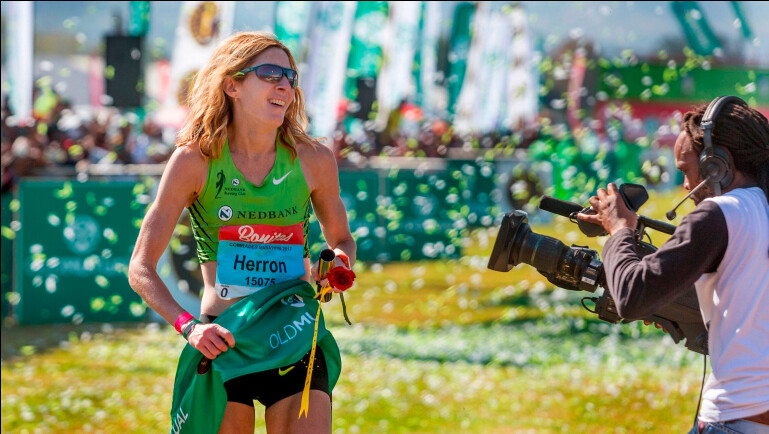
Ultrarunner Camille Herron shared one reason why she thought she was “crushing world records” in her forties: She only does one or two long runs a month (nothing over 22 miles) and she never does back-to-back long runs. Case in point: she ran one easy 20-miler in the lead-up to the Jackpot Ultra Running Festival’s 100-mile race last year, which she won outright. Instead, she focuses on cumulative volume and running frequency.
In her words, “Long runs are overrated.”
In the world of ultrarunning, where there’s a bravado around epic big-mileage days, Herron seems like an anomaly. Among the replies to her tweet, there was curiosity tinged with a side of skepticism. How could an ultra-distance athlete—one who holds world records for 100 miles and for the longest distance covered in 24 hours—run no longer than what you’d typically do in a marathon build-up? Shouldn’t her training mirror what she’d need to do in an ultra?
Karen Troy saw Herron’s tweet too. But her first thought was, “Wow. Someone’s actually trying to do it.” To Troy, who’s a professor of biomedical engineering and the director of the musculoskeletal mechanics lab at Worcester Polytechnic Institute, Herron’s training philosophy reflected what she’d read in scientific journals and seen in the lab related to mechanical stress and bone adaptation. “To me, it really aligned well with a lot of the theory,” she says.
Bone is a dynamic tissue. It changes, adapts, and gets stronger in the same way that muscles do. And in order for them to get stronger, you have to load them.
Bones have a “set point”—akin to the thermostat in your house—for the optimal amount of mechanical stress it wants to experience. Depending on the amount and rate of force transmitted through the bone, bone cells respond by either adding or removing bone. Too much force and the cells build bone to temper the load. Too little force and the cells get rid of bone so that it can sense more load.
Scientists have long been interested in finding the sweet spot between the amount of physical activity that induces adaptation and strengthens bone and the amount that can lead to injury—a fine line that many runners are intimately familiar with. What they’ve found in studies with animals like mice and rats is that, after back-to-back loading cycles, bone cells start to ignore the mechanical stress and stop adapting. Troy says it’s like when you walk into a smelly room. “It smells pretty bad for 10 to 15 minutes, and then you adapt. If you stay in the room, it stops smelling,” she says.
However, just like your nose can become re-sensitized if you leave the smelly room, bone cells do too. Studies have found that bone cells start to pay attention to mechanical stress again after a four-to-eight-hour rest period. When you spread the load over multiple sessions rather than one sustained bout, you gain more bone. (Tendons and ligaments respond similarly.)
The evidence suggests that distance running has diminishing returns when it comes to bone health. Troy hypothesizes that bone may respond to the stress of running over the first half mile or so but then become desensitized to the monotonous, repetitive loading. “You’ll get muscle and cardiovascular adaptations, but your bones aren’t paying attention anymore,” Troy says. “You’re just adding miles and potentially accumulating damage, but you’re not going to add adaptive stimulus that will help the bone become stronger.”
There isn’t a lot of data in people, making Herron an interesting case study. “Humans are made to move frequently,” Herron says. “The body responds to change and dynamic stimuli, so you need to stress the body in different ways.” It’s an approach she believes can work for runners at all levels and distances.
Her training is peppered with frequent, shorter bouts of running. Most days, Herron will run 10 to 15 miles and then doubles back for six or seven miles after a four-to-eight-hour rest period. Over a two-week period, she completes four main workouts—short intervals like 400-meter repeats; long intervals like one-to-three-mile repeats; a progression run, usually incorporated into a long run; and a hill session where she stresses both the uphill and downhill components to load her body eccentrically.
In between workouts, she runs easy and incorporates strides and drills twice a week. She likes to race a marathon or 50K a couple of weeks before a big race as a way to practice her nutrition and stress her body “just enough.”
“You can’t just look at a singular long run or back-to-back long runs. You have to look at the whole picture. Every run is like bricks that add up over time,” she says. Over the years, Herron has played around with her training formula and has cut back on her long runs, emphasizing quality over quantity and running for time rather than just distance. “I’m totally fine doing two hours as my long run,” she says.
It makes sense that Herron’s training is steeped in science. She was pre-med at the University of Tulsa before turning her focus to scientific research, studying the impact of strength training on bone and muscle. In graduate school at Oregon State, she investigated the relationship between mechanical stress and bone recovery for her master’s thesis. By studying bones, maybe she hoped to understand why she experienced multiple stress fractures in high school and college. What she learned shaped how she trains.
But she didn’t put the theory into practice right away. Early in her marathon career, she was still doing long runs up to 26 miles. It wasn’t until she started training at altitude that she began to split up her runs. Her coach (and husband) Conor Holt thought it would help her acclimate to the altitude, but she says, “It was like a rocket to the moon.” She recovered better and felt more spark in her legs.
Sabrina Little, ultrarunner and five-time U.S. National Champion, has also seen the benefits of this style of training. In college, she used to log big miles, a 30-mile run before doubling back for another 20 miles the next day. But once she graduated, she no longer had the luxury of dedicating endless hours to training. She expected to be less prepared for races but a funny thing happened—she performed better. It turns out that running multiple times a day may have other performance-boosting effects too.
“When I set the American record in the 24-hour run, my longest run was maybe 16 or 17 miles,” Little says. She would train in the morning and then come back for a faster session in the afternoon. “Breaking things into shorter blocks was beneficial. I was able to do higher integrity work instead of just long, slow distance,” she says. She thinks it helped her body absorb her training.
Now, as a parent to two young kids, Little definitely doesn’t have long blocks of time, so she practices what she calls “prepositional running”—before things, between things, and after things.
However, both Herron and Little logged many miles before happening upon their current training strategy. “I don’t want to say big days aren’t needed, but it’s hard to say what role they play,” Little says. “There’s a way in which the big races are kind of grandfathered into your legs, like you’re never too far away from your last 50-miler.”
While Herron and Little’s training mirrors research findings, it can’t be considered in isolation.
There are other factors that influence bone health and adaptation aside from mechanical loading—genetics, nutrition, running gait, and how much bone you laid down during your peak bone-building years. Hormonal health matters, too, because bone cells have sex hormone receptors. If your hormone levels are low, Troy says it tips the balance toward bone removal, leaving the tissue more vulnerable to injury.
Whether or not eschewing long, sustained bouts of running is the key to success and injury prevention, there are benefits to fostering the idea that not everyone needs big days on the road or trails.
“Most people have responsibilities and can’t spend all that time outside,” says Little. “People should know there are other possibilities. It could get a broader scope of people participating.”
(02/12/2023) Views: 567 ⚡AMPBritish Athlete Becomes First Handcyclist to Complete World Marathon Challenge
Darren Edwards completed 7 marathons in 7 days. He challenges others to “risk failure” and “dream big.”
On February 7, Darren Edwards completed the seventh marathon in the World Marathon Challenge, becoming the first hand-cyclist to do so, according to the Canadian Running.

The British athlete and veteran raised nearly $60,000 to support the Armed Forces Para-Snowsport Team, a British organization that helps the recovery of wounded, injured, and sick military personnel and veterans, according to its website.
Edwards was injured in a near-fatal climbing accident in August 2016, which left him paralyzed from the chest down, he wrote on his fundraising page.
“I was incredibly fortunate to survive, but life would never be the same again,” he wrote. “I have been on a journey of rediscovery and have refused to let disability stop me from dreaming big and taking on tough challenges.”
There is, perhaps, no tougher challenge than the World Marathon Challenge.
In order to complete it participants must finish one marathon on every continent in seven days.
The first race took place on January 31 in the Antarctic Circle. From there, racers traveled to Cape Town (Africa), Perth (Australia), Dubai (Asia), Madrid (Europe), Fortaleza (South America), and Miami (North America). According to Canadian Running a “speed bump” caused a delay in athletes leaving South Africa, giving racers an extra day of recovery.
Edwards completed the Antarctica race in 5:48:37 before slashing his time in South Africa, with 2:52:04. In Australia, he finished in 2:36:30, in the heat. Next, he finished in 2:23 in Asia. The travel and racing began to take a toll. Edwards completed his European leg in 3:23:05. Then, he finished the South American race in 2:36:59.
Despite further travel issues, according to Canadian Running, athletes managed to get from South America to Miami mostly on schedule where Edwards became the first handcycle athlete to finish the challenge, completing the race in 2:31:40.
Edwards reflected on his whirlwind of a week on Instagram: “This week has tested me and my disability to the limit. I went into this challenge knowing that there was a potential for failure, that there were elements out of my control, which could dictate the success or failure of this endeavor. But, unless we are prepared to roll the dice and bet on ourselves, we are even less likely to achieve our true potential. Bet on yourself. Risk failure. Dare to dream big. You are capable of so much more than you know.”
(02/12/2023) Views: 620 ⚡AMPby Runner’s World
Nuguse breaks North American indoor mile record at Millrose Games
Yared Nuguse ran the second-fastest indoor mile in history as three national records fell or were equalled in a thrilling men’s Wanamaker Mile at the Millrose Games. Alicia Monson also set an area record in the 3000m, while Abby Steiner claimed a US record in the 300m at the World Athletics Indoor Tour Gold meeting in New York on Saturday (11).
In the infield, Ryan Crouser demonstrated his effective new shot put technique and Katie Moon returned to her winning ways in the pole vault before a roaring crowd that also cheered runners in competitions from U8 through high school and college.
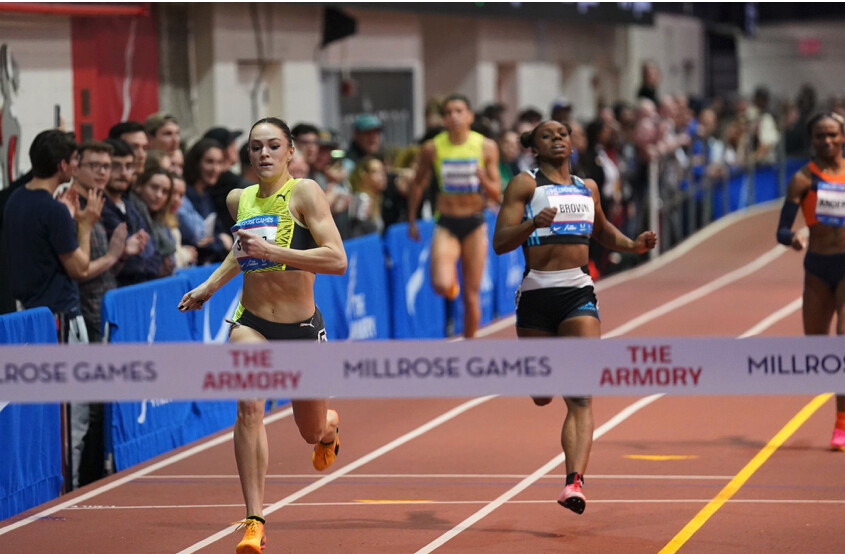
As always, the men’s Wanamaker mile culminated the meeting, and Nuguse ran away with the race in a world-leading 3:47.38 to claim his second area record of the season to go along with the 3000m.
Pace setter Erik Sowinski brought the runners through half way in 1:52.99 – just as he had been asked – with Nuguse and training mates Mario Garcia Romo and Olli Hoare in the lead group. But Nuguse turned on the jets and covered the final quarter of the race in 54.23, breaking the meeting record, facility record, and crushing Bernard Lagat’s 15-year-old US indoor record of 3:49.98.
“Running that race the way we did,” Nuguse said, “all three of us right there up for the first half of the race, I felt good knowing I had my closest guys having my back. And then that last part was give it everything I had and I was able to close with something crazy and get it.”
Great Britain’s Neil Gourley ran a PB of 3:49.46 to move to sixth on the world indoor all-time list, and Hoare equalled the Oceanian record with 3:50.83. New Zealand’s Sam Tanner ran a PB of 3:51.70, while Romo’s 3:51.79 was a Spanish record.
Yuguse has now eclipsed Hicham El Guerrouj on the all-time list; only Ethiopia’s Yomif Kejelcha has run faster, clocking 3:47.01 in 2019.
“I’m always excited to see what else I can do next,” Nuguse said. “There was definitely a nice confidence boost. After that 3000m (where he broke the US record), I was feeling pretty confident already, but to do this in the event that I love the most and the one that I feel like I’m going for at the world championships, that makes me feel even better.”
Laura Muir won the women’s Wanamaker Mile in 4:20.15, followed by Josette Andrews in 4.20.88. Muir, the Olympic silver medallist, led for most of the race, then Andrews hit the front with two laps to go. But the Briton kicked again on the final lap and went on to win comfortably.
Sprint sensations
World record-holder Christian Coleman took a bow after winning the men’s 60m in a season’s best of 6.47. “I feel like this is what I do best and I came to put on a show,” he said.
Noah Lyles was charged with a false start and ran the race under protest, clocking 6.53, although the time would not count. Lyles, the US record-holder in the 200m outdoors, admitted a little bit of movement, but said his feet never left the pad. “I got a time that I’m very happy to see,” Lyles said. “Everybody knows I’m just here to play around. I’m not a 60-metre runner, but if I can take some heads, I’m going to do it.”
Jamaica’s Travis Williams was awarded second place with a PB of 6.59, followed by Josephus Lyles, Noah’s younger brother, also with a PB of 6.59. Williams edged Lyles by .003.
Aleia Hobbs set an Armory record of 7.04 to win her fourth straight competition, having clocked a world-leading 6.98 at the end of January. Teenager Tamari Davis was second in a PB of 7.08, followed by Marybeth Sant-Price in 7.11, Mikiah Brisco at 7.13 and 17-year-old Shawnti Jackson in 7.16.
“I don’t think my start was as good as it’s been, but I was patient,” Hobbs said.
In only her second 300m, Steiner broke the US record, clocking 35.54 to easily go under Quanera Hayes’ time of 35.71 from 2017. Steiner held off a spirited challenge from Brittany Brown, who ran 36.13.
“It’s definitely one of those races I think you learn a little bit about every time you run it,” said Steiner, who set the collegiate record in her first race.
Although this 300m is her last of the season, she still wants the world record of 35.45, shared by Shaunae Miller-Uibo and Irina Privalova. “I clean up my start a little bit,” Steiner said, “and I think it’s there.”
World indoor champion Jereem Richards of Trinidad & Tobago ran a season’s best of 45.84 to avenge the previous week’s loss to Noah Williams, who clocked 46.20. In Boston, they were separated by only .004 as both ran 45.88.
Devynne Charlton won the women’s 60m hurdles in 7.91, while Tonea Marshall ran a season’s best of 7.94 and Sharika Nelvis clocked 7.96 to edge Olympic silver medallist Nia Ali in 7.97.
(02/12/2023) Views: 549 ⚡AMP
NYRR Millrose Games
The NYRR Millrose Games,which began in 1908 as a small event sponsored by a local track club, has grown to become the most prestigious indoor track and field event in the United States. The NYRR Millrose Games meet is held in Manhattan’s Washington Heights at the New Balance Track & Field Center at the Armony, which boasts a state-of-the-art six-lane,...
more...Runners gearing up for final Mercedes Marathon in Birmingham this weekend
The countdown is on to the final Mercedes Marathon race this weekend. The race has run its course in Birmingham for over two decades.
This weekend, the marathon will bid farewell to Birmingham. Race organizer Valerie Cuddy told us in November that she’s no longer able to support the event financially. She’s put a lot of her money and her store’s money into it over the years.
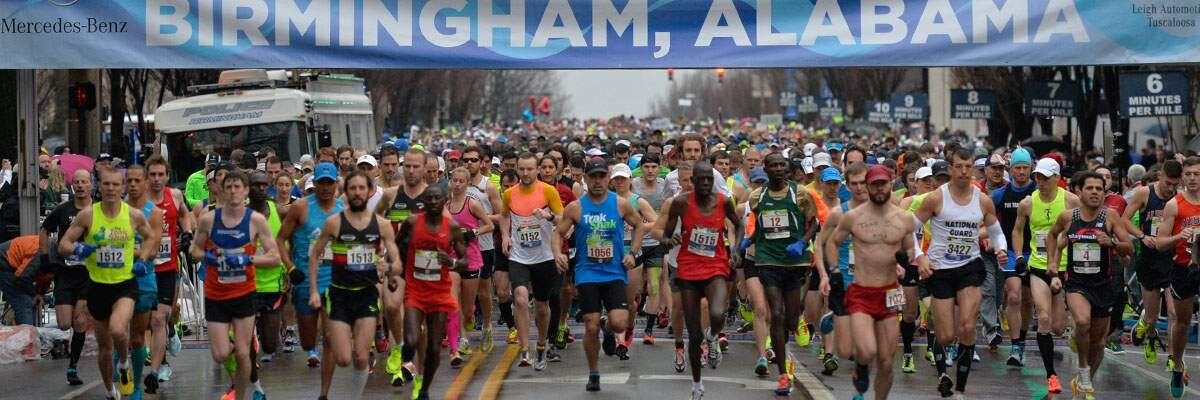
The marathon expo and packet pickup kicks off Friday from 12-6pm at the Boutwell Auditorium.
“We’ve got a little surprise at the beginning. Something that I’ve always wanted to have done. Hopefully people will enjoy that. We’ve got more entertainment on the course, A little more music. A little more cheering. Some interesting stops out there that I think people will enjoy,” Cuddy said
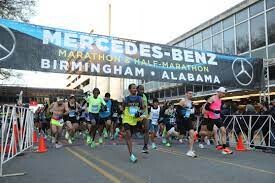
The race weekend brings people to Birmingham from all over the country. Cuddy is grateful over the many years it’s called Birmingham home. And over the years, the race has raised more than $3 million for the Bell Center.
You can find out about all the racing events at https://www.mercedesmarathon.com/.
(02/11/2023) Views: 718 ⚡AMPby Josh Gauntt
Mercedes-Benz Marathon
The race is a Boston Marathon qualifier and attracts racers from across the nation and around the world. The race was founded in 2003 as a fundraising effort for The Bell Center, a program for developmentally-challenged children. Celebrating 18 years, we're Alabama's premier running weekend! Bring the family and stretch out your legs on Saturday with our Regions Superhero 5K...
more...130 runners break 15 minutes at local 5K in Northern Ireland
Breaking 15 minutes for 5K is a feat most male runners dream of; at a local race in Armagh, Northern Ireland, a shocking 130 runners went under the 15-minute barrier.
The Armagh 5K promotes itself as one of the fastest road races in the world, and after seeing the results, it’s hard not to agree. This year was the first time the 5K took place since 2020—when 139 runners recorded sub-15 minute times.
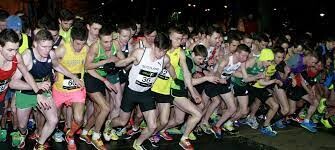
The winner of the 5K was Henry McLuckie of Shaftesbury, England, who recorded a course record time of 13:37. Seventeen men also ran under 14 minutes.
If you are curious about what makes the course so fast, it’s entirely flat, with less than 10m of elevation gain. Racers are required to do five laps around a large communal park in the centre of the city before finishing on the opposing side.
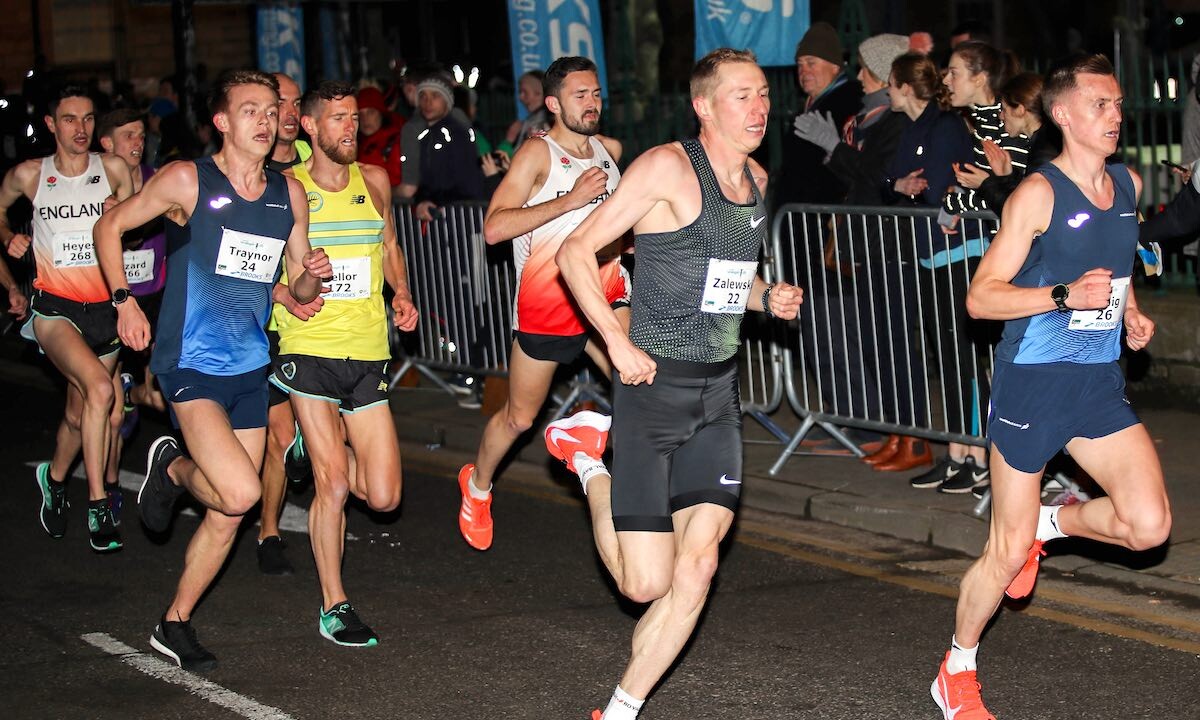
Athletes from all over the world make the trek to the town of 14,000 for a chance to run a fast time, and this year’s field had athletes from the U.S.A., U.K., Finland, Poland, Belgium, France, Germany, Scotland, Ireland and Wales in attendance.
According to the race, the town comes to a halt for this race, and the entertainment and excitement of elite runners draw large crowds–not to mention that a road 5K at night is also pretty cool.
(02/11/2023) Views: 783 ⚡AMPby Marley Dickinson
Armagh 5K
This iconic event now ranked as the best and most popular road race in the world. Runners post some of the fastest times in the world.This has come about through the incredible in-depth, consistent standard of the Men’s 5K over many years. This has been highlighted by the fact that no other race brings together so many athletes running under...
more...Why runners should add swimming to their cross-training schedules
As a runner, you might feel slightly disdainful of swimming. You like getting in the pool to cool off in the summer, but swimming laps just isn’t for you. Well, it’s time to change that, because swimming is a great way to cross-train as a runner. It is a low-impact sport, it’s a fantastic workout and it’s fun (we promise). There’s no reason not to at least try adding swimming to your cross-training routine.
A full-body workout
Something that running doesn’t offer is full-body exercise. Running is great for your heart and lungs and you’ll develop some muscles in your legs, but swimming works your arms, shoulders, back, core and legs all at once (as well as being a great cardio workout).
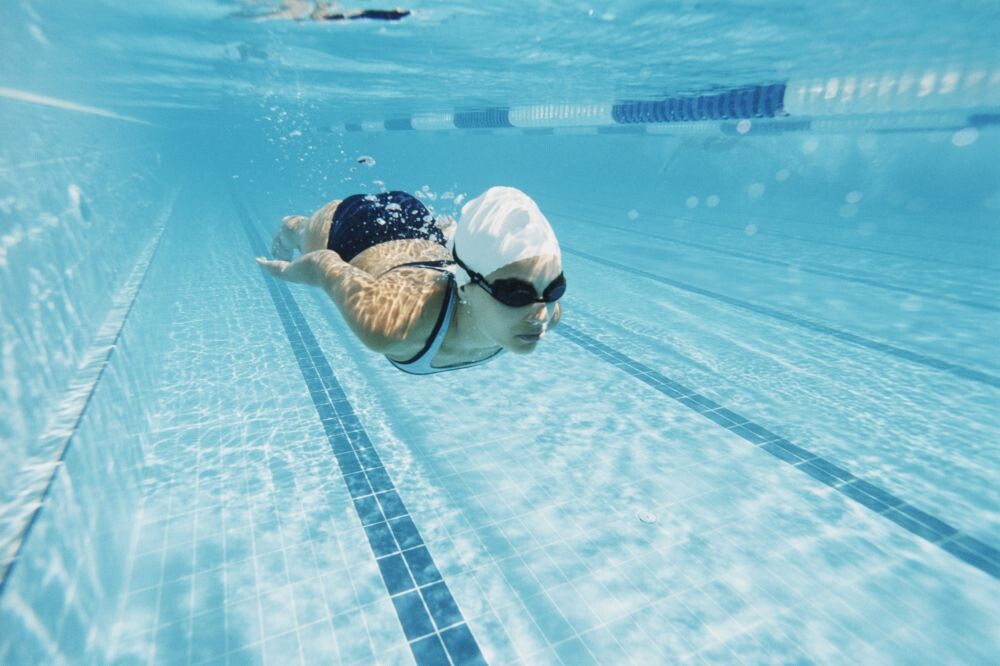
The full-body nature of swimming means you can still hit the pool, even if you’re injured. If you have a shoulder injury, you can grab a flutter board and do a kick workout. If you’re dealing with a leg issue, you can toss a pull buoy (a foam flotation device) between your legs and only use your upper body. Plus, since swimming is so low-impact, you’re much less likely to get hurt than you are when you’re running, which is much harder on your body.
What strokes to use

You can choose from four strokes: front crawl (also known as freestyle), backstroke, breaststroke and butterfly. Front crawl is probably how you learned to swim, with your face in the water, your feet flutter-kicking behind you and your arms pulling the water from above your head down to your hips. Backstroke is another classic that will be familiar to anyone who knows how to swim, and it’s a similar motion to front crawl (but on your back). Breaststroke puts you on your front again, but instead of flutter-kicking, you’ll kick like a frog while your arms scoop the water in front of you.
Those three strokes are the best options when you first enter the pool. Then, there’s the butterfly, which is a difficult to perform as a newcomer to the sport. This is the stroke that you’ve probably seen Michael Phelps swim at the Olympics; it involves a dolphin kick (both feet kicking in unison, as if they are one unit, like a dolphin’s tail) that propels your upper body out of the water so you can complete the stroke with your arms. The butterfly is fun to try, but even if you get the technique down, it’s unlikely you’ll be able to swim more than a couple of lengths of the pool before feeling gassed.
Finally, in addition to all of those strokes, you can grab a flutter board and simply kick your way across the pool. This is, of course, not going to work your full body like the other strokes, but it is still useful for cardio fitness.
Try a workout
Now that you’re ready and excited to get to the pool, you need a workout. Here’s a very basic one to try out. Use any or all of the strokes listed above.
Warmup:
200m of light swimming
100m kicking
Set:
4 x 50m swim (rest 30 seconds between each)
2 x 50m kick (rest 30 seconds)
4 x 100m (rest 45 seconds)
2 x 50m kick (rest 30 seconds)
4 x 50m (rest 30 seconds)
2 x 50m kick (rest 30 seconds)
8 x 25m (rest 15 seconds)
Cool down:
Take it easy for 200m
Total: 1,800m.
(02/11/2023) Views: 585 ⚡AMPby Ben Snider-McGrath
5 people runners hate seeing on Strava
Strava is a great place to follow and support other runners, and it’s always nice getting kudos from your friends and followers, but it can sometimes be annoying. Anyone who uses Strava regularly has someone they follow that just gets on their nerves. You know who we’re talking about. And if you don’t know this person, then we’re sorry to say, but you may be the annoying Strava user in your area. Don’t worry, we’re here to help you figure out exactly what not to do on Strava with this list of the most annoying runners you’ll find on the app.
The unnecessary poster
Have you ever seen someone you follow post their walk to the bus stop? Or maybe they’ve shared the 10 minutes that they played tennis and covered approximately 160 metres. We don’t know who needs to hear this, but just because Strava has “Walk” or “Tennis” or whatever else as a tracking option, it doesn’t mean you have to record everything you do. No one cares that you walked for five minutes to the bus stop, and 10 minutes of tennis is barely enough time to finish a couple of games. Of course, if you go on a long walk, that’s fine to post, and if you and a friend play an hour of tennis, no one will complain if you share your match data. Just make sure the workouts you post are, well, actual workouts. The watch stopper
You do realize that Strava shows two different times, right? There’s moving time, which is however long your timer was actually running during your workout, and then elapsed time, which is the entire time Strava was open. This includes any seconds (or minutes) you spent with your workout paused. Don’t be that guy (or gal) who runs hard for a kilometre or two, then pauses the run to catch their breath, then goes hard for another bout, all so your pace time on Strava will look fast. Anyone who wants to see your actual results can find your elapsed time and pace. Just tell the truth and run an honest time.The excuse maker
Have you ever noticed that some people make excuses for what they consider to be bad workouts? They might title the run something like “Way Too Windy,” or they’ll write a description like, “I would’ve run a PB if not for [insert lame excuse here].” No one is judging you for a slow run on Strava. The only reason anyone will notice that you had a bad run will be if you point it out with an excuse-filled title or description, so skip the excuse-making and move on to the next run. The bike runner
Every now and then, you’ll see someone record a bike ride as a run on Strava. It’s an honest mistake and almost always an accident, but it’s incredibly frustrating for anyone who loses a crown to a “runner” who averaged 25 kilometres per hour over 50K. If you realize that you’ve made this mistake, be sure to edit the post so that it is listed as a bike ride. If you leave it as a run, you may get some angry runners commenting on your posts. The crown stealer
There’s nothing wrong with stealing someone’s crown on Strava, but there’s no denying that it’s annoying to open the app and see that your hard-earned record has been bested. It’s the name of the game, we know, so you can’t get too mad about this one. All you can really do in this case is lace up, head out for a hard run and try to steal the crown right back.
(02/10/2023) Views: 610 ⚡AMPby Running Magazine
High school runner disqualified for celebrating
The running world is confused after a high-school runner was disqualified from the Maryland 1A West Region meet for celebrating during his 300m victory. Catoctin High School senior Brody Buffington set out to defend his state title over 300m, but his title defense did not come without some controversy. Buffington knew he had a lead down the final stretch, and threw his arms in the air about 20 metres before the finish line, which resulted in a disqualification for “taunting.”
His celebration cost him the victory and the chance to retain his 300m title. According to The Maryland Herald, Buffington was disqualified for “an action which brings discredit to an individual or their school, citing the NFHS rule book.”Many notable members of the running community expressed confusion on Twitter about why Buffington was DQ’d, seeing no harm in what he did:

“I’ve watched this video 20 times. What am I missing?! I see a kid running hard and having fun. I see him enjoying his moment. I don’t see any disrespect. Gah, track and field, why are we killing our own excitement?” – @KaraGoucher, U.S. Olympian and marathoner.
“That’s so stupid. Why do we keep hindering ourselves as a sport.” – @LylesNoah, reigning 200m world champion.
“Is that the celebration he got DQ’d for?” – @ReidCoolsaet, a two-time Canadian Olympic marathoner and ultrarunner.
“That’s messed up!” – @LukeMathews95, Australian 800m Commonwealth Games medallist.
Sometimes disqualifications make sense, but in Buffington’s case, it makes no sense, as the other athletes in the race were his teammates. In my opinion, if you are winning races, you deserve the right to show off a bit of emotion.
300m, but his title defense did not come without some controversy.
(02/10/2023) Views: 938 ⚡AMPby Running Magazine
Want Kilian Jornet To Be Your Running Coach? Pick Up His New Watch.
It's hard to dispute that Kilian Jornet is one of the greatest mountain athletes in the world. He's a living legend, that humble-yet-tenacious Spaniard who needs no introduction and doesn't seem to be slowing down. We've reported extensively on his training consistency, his seasonal skimo/run performance composite, the food he eats (lots of bread), how much he sleeps (8 hours average), and how much he strength trains (very little).
Last week, COROS announced a new collaboration with Jornet and his year-old footwear and apparel company NNormal, with the launch of the APEX 2 Pro Kilian Jornet Edition. This has been a highly anticipated partnership-though COROS has collaborated in the past with their athletes, including Molly Seidel and Eliud Kipchoge-ever since he parted ways with Salomon and Suunto, in late 2021, and teamed up with COROS last year.
"Working with COROS developers, I've learned a lot about creating the best tools for me to use when trail running, skimo, or out in the mountains," said Jornet. "I believe that with this special edition APEX 2 Pro, we can keep pushing how the COROS device can help me-or anyone-improve their training."
Jornet's new GPS watch is a limited offering, at 5,000 units, and it not only includes some fun personalized Jornet flare, but it also arrives with an opportunity to jump-start your 2023 training with guidance from the legend himself. Here's what we know so far:
The COROS APEX 2 Pro Kilian Jornet Edition
If you're expecting the hardware of Jornet's new watch to be much different from the COROS APEX 2 Pro, you might be setting yourself up to be disappointed. Good thing there's very little to be disappointed about because the APEX 2 Pro is a top-shelf GPS watch for any trail runner.Here's a quick look at the four main innovations you need to know about this watch that sets it apart from other GPS watches out there for trail runners:
Battery. The battery can now last up to 75 hours, 88 percent longer than the first generation. (It's cool: Jornet only took 26 hours to summit Everest. No. Charge. Needed.)
GPS. The APEX 2 Pro has 50 percent higher accuracy with a new GNSS chipset and an "all satellite dual frequency."
Heart rate. COROS has upgraded the advanced optical heart rate sensor with a 5-LED system.
Recovery. The APEX 2 Pro upped its game on sleep tracking and recovery metrics dashboards.
First Impressions
We found the APEX 2 Pro to be about the perfect dimensions for a high-performance GPS watch, not terribly chunky or heavy but not too small, either. They've nailed both the watch face diameter and thickness. The navigation is seamless and quick, too. The GPS locks in mere seconds and, after completing a workout, the data zips to the COROS app, which is about as robust and intuitive as any on the market.
Sometimes the watch's interface aesthetic feels like I'm in a 90s video game, and I'm still not totally sold on the spin navigation knob, but overall, there's little to complain about. Triathlete reviewed the APEX 2 Pro favorably, though they did have a few things to say about its price-to-performance ratio and its lifestyle functions. Bottom line? The watch is an exceptional addition to any trail runner's tech gear.Takeaway
To connect our evolving trail community through a piece of high-performance wearable gear, with one of the greatest athletes alive is a unique opportunity, something that only further validates the integrity of an athlete who cares about stewarding the planet, who wishes to remain an ambassador, in contact with the many people he inspires. If you're looking to upgrade your GPS watch experience-and are willing to pay a pretty penny for it ($549)-you may be setting yourself up for a chance to gain personalized insights from Jornet himself, and that appears, well, priceless.
Go Further:
(02/10/2023) Views: 655 ⚡AMPby Trail Runner Magazine
What is Endurance? A New Study Shows the Importance of Mind-Body Connection In Endurance Running
Do you ever have this type of internal dialogue?
"Today, my legs were 'heavy' in the first couple of miles, but this was to be expected after a quicker run yesterday and training through last weekend's race. I know this is the last 'long' run before tapering into next week's race and freshening up - these heavy, fatigued runs are just part of the course. While I may have felt a little 'leggy,' especially in the early stages, the run was mainly on trails from thereon, thus much more forgiving on my slightly weary legs."
This is an example of lived body fatigue and heaviness.
A recent book chapter analyzes endurance and 'endurance work' in women's cross country and trail running. What is termed 'endurance work' (in sociology) conceptualizes endurance in a specific way as cognitively, physically, and interactionally lived. The research focuses on the lived experience and social production of endurance in trail and cross-country running.
The chapter "Endurance and the Production of 'Endurance Work' in Women's Cross-Country and Trail Running," by Prof. Jacquelyn Allen-Collinson and Dr. Patricia C. Jackman, was published in the new book, Contemporary Meanings of Endurance: An Interdisciplinary Approach. The book investigates the concepts of endurance from various schools of thought. This includes the lived experiences of mundane daily activities to physical performances.
The research utilizes a theoretical approach and analyzes data from three autoethnographic and autophenomenographic research projects on distance running. "Autoethnography is where the researcher analyzes their own experiences of the culture," explained Dr. Patricia Jackman. "Autophenomenography is where the researcher analyzes their own experience of a particular phenomenon, such as their lived experience in an activity like running."
Autoethnography is a research approach, grounded in anthropology, and has grown considerably in the social sciences in recent decades. Autophenomenography, in contrast, is a relatively novel approach that focuses on the researcher's direct, lived experiences of a phenomenon, such as trail running, to generate rich, detailed data from the perspective of an 'insider.'
The thinkpiece explores various experiences of endurance that may differ between individuals and may manifest themselves at different times (i.e., your experience of running up a hill may vary from running 100 miles).Endurance and Endurance Work
What is endurance? For premier female trail runner, Maude Mathys, of Switzerland, "Endurance is an ability to sustain a constant rhythm, concentration, repeated action, which sometimes seems easy, but sometimes difficult."
The authors loosely define endurance as what it means to keep going while facing adversity, discomfort, fatigue, and pain. It is a process to be learned - and relearned - over time through effort and training.
As mentioned, 'endurance work' conceptualizes endurance as mind-body, and interactionally lived. "Endurance work involves an approach to how mind-body-environment connections shape our sensory experiences," the authors explain. "To undertake distance running demands that physiological endurance is developed through physical training." As such, the cognitive and the physical are inextricably intertwined. Prof. Allen-Collinson emphasizes that such endurance of mind-body is never achieved once and for all, but rather is provisional, contingent, and can become eroded. The Study
The researchers analyzed two forms of running: cross-country and trail running. Cross-country encompasses multi-terrain running in rural or countryside areas, while trail running encompasses running in natural environments, including mountains, deserts, forests, or countryside, and both forms seek minimal possible contact with paved or asphalted surfaces.
The study explores endurance as cognitively, physically, and interactionally lived and communicated through endurance work. The mind-body linkage is central to understanding endurance, as distance runners must learn to endure physiologically and psychologically.
The authors explore the direct, physical, and mental experiences of endurance as lived in their running lives.
In analyzing their experience of endurance in running, the researchers analyzed data from three research projects on running, undertaken over many years. The researchers systematically recorded their experiences through field notes, daily training logs, reflective notes, and taped daily training, and also rehabilitation, during the processes of training, and also being injured and recovering. They identified two key themes in their analysis of the experience of endurance: 1) Pain and Discomfort; and 2) Fatigue. Pain, Discomfort, and Fatigue
Pain and discomfort are central elements of experience in endurance running. As runners, we learn and develop our own ways of knowing how to distinguish between the discomfort of niggles and the type of pain that merits medical treatment. As such, discomfort and pain are often normalized and even glorified in endurance cultures. This is often considered a given - or prerequisite - following the effects of considerable training volumes.
A key component of endurance work draws on the accumulated knowledge of different kinds of pain and injury, enabling us to identify these, and then draw on the willingness, to persist through such niggles.
The data reveal that runners engaged in discussions, with themselves, co-runners, and the wider running community, about the nature of the pain or discomfort. Enduring the discomfort of manageable injuries is often a pragmatic and necessary strategy.
Runners learn over time and experience how to distinguish between good and bad pain. We understand how to discern and tolerate forms of pain and discomfort. Such knowledge and practice are often shared resources within distance running cultures.
Additionally, as runners, we become more attuned to fatigue, engaging in meaning-making around the sensations of fatigue while learning how to cope and endure tiredness of mind and body. Such fatigue - of mind and body - also constitutes an essential part of the experience in the endurance work of distance runners.
Feelings of fatigue can have favorable implications for our running. While adapting to general fatigue, it is generally accepted as routine to progress. However, expending high levels of energy can be detrimental if combined with under-fueling and can spill over into Relative Energy Deficiency in Sport (RED-S).
With experience, runners learn to endure various levels of fatigue. "Part of this cognitive and corporeal knowledge encompasses the ability to detect and identify subtle, nuanced variations in the nature of our fatigue, and also to communicate these to co-runners and others, as part of endurance work," the authors explain.
To continue running while experiencing fatigue, runners often rely on embodied memories of enduring similar experiences. The mental experience of running fatigued becomes embedded in our minds. To extrapolate this idea, the researchers portrayed analytically their fatigue levels.
"For us, as for many endurance runners and athletes, it can seem as if the muscles themselves hold memories of this fatigued modus operandi, and somehow feel 'instinctively' that they will be able to endure, to keep going through the run," the authors explain.
'Endurance work' involves social agency, and is an active, ongoing, social, and reflexive form of work that often requires mindful engagement with both the physical and social worlds. Endurance is embedded in our consciousness. Endurance itself has to be worked at, for it is contingent, and part of an ongoing body project never achieved once and for all. Endurance can begin to decay when endurance practices start to fall out of use. Endurance must be learned over time and with experience, cognitively and physically, and sometimes it must be re-learned. Simply put, endurance is plastic, and can be learned and enhanced over time.
Theory in Practice
It is important to note that the study's authors have charted their endurance experiences over many years. Their accounts should not be seen as rigidly dogmatic, capturing the essence of endurance, unlike classical 'generalizable' results that may apply to a broad population.
Their research findings may or may not apply to your experiences. The resonance is the important thing. "We provide an account, and it may be the case that this will resonate with people," explained Dr. Jackman. "The main question we pose to readers is: does this resonate with you? Did it speak to you? Did you find yourself nodding your head (in agreement)?"
(02/10/2023) Views: 894 ⚡AMPby Trail Runner magazine
Two more Kenyans banned, Barsosio and Chebiwott land a two-year ban each over doping
The Anti-Doping Agency of Kenya (ADAK) has given athletes Stellah Barsosio and Gloria Kite Chebiwott two-year doping suspensions.
The development was announced on Monday by ADAK, whose mission is to defend athletes' fundamental rights to take part in a doping-free sport in the nation.
Chebiwott, 25, received the suspension after being found guilty of violating the World Athletics Anti-Doping Rules by utilizing an illegal drug called anabolic androgenic steroids (AAS). Her sample was obtained for analysis in May 2022.
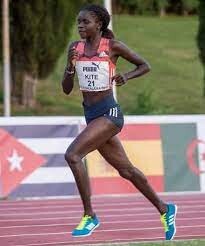
“The Tribunal notes that there’s no dispute between the athlete and the applicant that a prohibited substance S1.1. Anabolic Androgenic Steroids (AAS)/Androsterone, Adiols, Pregnanediol11-ketoetiocholanolone, Etiocholanolone (Etio), testosterone, 5a-androstanediol, and 15 epitestosterone were present in the athlete’s body and thus resulting in an AAF,” the ruling read.
The penalty for the silver medalist in the 10,000m race at the 2019 Valencia Ibercaja has been backdated to August 12, 2022, and it will remain until August 12, 2024.
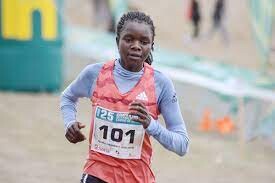
“Consequently and the discussion on merits of this case, the Tribunal imposes the following consequences: a) The period of ineligibility (non-participation in both local and international events) for the Respondent Athlete shall be for two (2) years from the date of mandatory provisional suspension that is with effect from August 12, 2022,” they ruled.
Barsosio, a former winner of the NN Marathon Rotterdam, was disqualified due to the presence of the banned chemical trimetazidine in her sample.
“Hormone and Metabolic Modulators/Trimetazidine which is prohibited under S4 of the 2022 WADA prohibited list was found in the respondent’s urine samples. This is a non-specified substance and is prohibited at all times as per the WADA Prohibited List of 2022.
"The Respondent will be ineligible (unable to participate in both national and international tournaments) for a period of two years beginning on August 17, 2022, the date of the mandatory temporary suspension, according to her decision.
Barsosio, who has five marathon victories to her credit, will have her suspension retroactively applied; it will start on August 17, 2022, and end on August 16, 2024.
The development comes exactly a month after World Athletics showered flowery words on Kenya for waging a successful war against substance abuse.
As cases of anti-doping infractions involving its athletes went overboard, member federations increased pressure on WA to enforce the rules, and the East African sports powerhouse narrowly avoided being banned.
(02/10/2023) Views: 553 ⚡AMPby Tony Mballa
Adidas reveals 2023 Boston Marathon jacket
Made from 70 per cent recycled materials, this is the most sustainable Boston Marathon jacket to date.
With the 2023 Boston Marathon just over two months away, Adidas revealed this year’s race Celebration Jacket design on Wednesday. For the 2023 design, Adidas focused on sustainability, and each jacket is made from 70 per cent recycled materials. This year will mark the 127th running of the Boston Marathon, and the race is set for April 17. The Celebration Jacket will be available as of Feb. 15.

Adidas has been the official manufacturer and distributor of Boston Marathon apparel for more than 30 years, and the company is constantly working to bring new and innovative ideas to the Celebration Jacket and other race clothing. In recent years, sustainability has been a key factor for the design teams at Adidas, and this year is no different.
“As we developed this year’s iteration, we prioritized sustainable design, all while maintaining the high-performance quality adidas is known for,” said Jennifer Thomas, Adidas’s vice president of global sports marketing. “We’re proud to provide best-in-class sustainable running apparel that supports and empowers our athletes in making their dreams come true: chasing records and personal bests while participating in the Boston Marathon.”
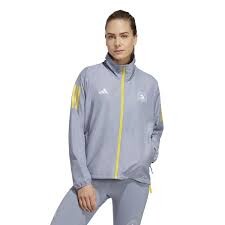
The 2023 jacket is made in part from Parley Ocean Plastic, an original Adidas creation that the company says is “re-imagined plastic waste intercepted on remote islands, beaches, coastal communities and shorelines to prevent it from polluting [the oceans].”
The Adidas team also notes that the jackets colours are intentional, with the “natural tones inspired by sand and stones as a twist on the traditional blue and yellow colors of the Boston Marathon.” In addition to the celebration jacket, Adidas will provide the race’s 10,000-plus volunteers with different jackets, along with official Boston Marathon participant shirts for the more than 30,000 racers.
The 2023 Boston Marathon celebration jacket will retail for US$120.
(02/10/2023) Views: 828 ⚡AMPby Running Magazine
Boston Marathon
Among the nation’s oldest athletic clubs, the B.A.A. was established in 1887, and, in 1896, more than half of the U.S. Olympic Team at the first modern games was composed of B.A.A. club members. The Olympic Games provided the inspiration for the first Boston Marathon, which culminated the B.A.A. Games on April 19, 1897. John J. McDermott emerged from a...
more...Olympic medalist Paul Chelimo says 5,000m “is all in the mind”
In a recent interview with the Diamond League, American Olympian Paul Chelimo said, “the 5,000m is all in the mind.” With two Olympic medals (silver in 2016 and bronze in 2021) and a world championship podium (bronze in 2017) to his name, Chelimo knows a thing or two about the 5,000m (and running in general).
This “mind over matter” mentality is widely embraced by professional athletes, but just because you’re not an elite runner doesn’t mean you can’t apply it to your training and racing, too. Here are some tips on how to improve your mental game when racing.
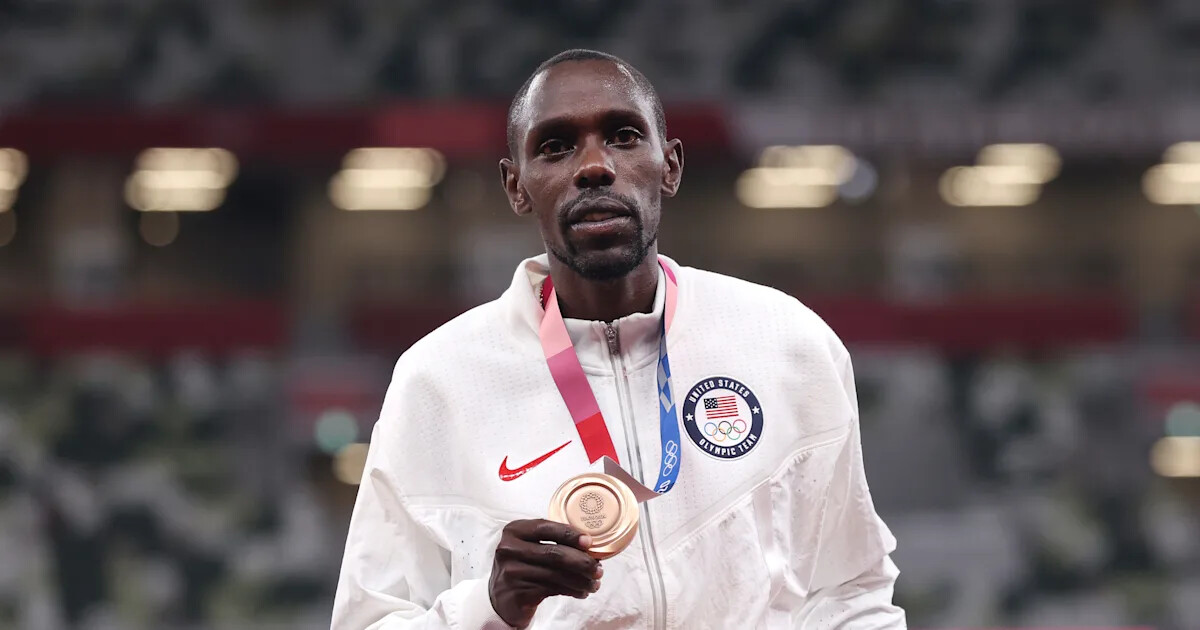
Be ready for anything
Alright, so full disclosure: after his initial declaration that the 5,000m is all in the mind, Chelimo went on to say the race is actually 75 per cent physical and that “the rest is mental,” but the point remains that your mind plays a huge role in your success (or failure) on race day. And that you must expect the unexpected–always. Chelimo’s races are likely much different than the ones you enter, but both can come with unexpected hiccups.
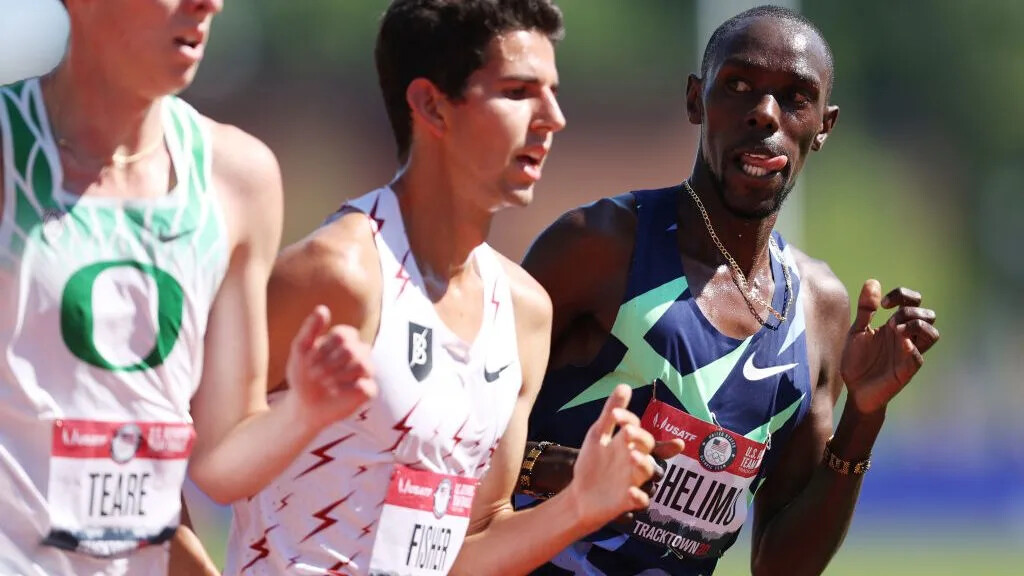
Right from the moment you wake up, it’s possible for any issues to arise. Maybe your alarm won’t go off, and you’ll have to rush to the race; or perhaps your classic race morning breakfast will burn in the toaster. Whatever the case, these speed bumps could potentially mess with your head long before the starting gun goes off. When it comes to the race itself, weather could be a factor, you could get caught up in the moment and go out too fast, or you could have digestion issues that lead you to the course-side porta-potties.
When these problems pop up, you have a choice: you either let them get to you, or you move on and forget about them. Of course, it’s easier said than done, but when things go wrong on race day, try to give yourself a few moments to be upset, then do your best to leave them in the past and refocus on the task at hand.
Set mid-race goals
If you get knocked out of your groove, try not to worry about how that will affect the PB you were aiming for, or any other pre-race goal you set for yourself. Instead, set some mid-race goals to get your mind off the negatives. Is there a pack of runners a few hundred metres ahead? Commit to catching them by a certain kilometre marker. Maybe you can start counting the number of people you pass as you make your way through the field. Try to get back into your groove by aiming to hit a certain time for your next kilometre, or, if you’re in a longer race, for the next 5K segment. If you set these goals in the middle of the race, they’ll give you something new to chase, and when you start reaching them, your spirits will be lifted and you can get back on track.
Use positive self-talk
When things go wrong on race day (and in training), talk yourself up. Find a mantra (something as simple as “You’ve got this” is good, just make sure whatever you pick works for you) and repeat it to yourself. Remind yourself of all of the hard work and long training hours you put into preparing for this day. If you start a positive inner dialogue, soon enough you’ll feel lighter, and chances are, that will make you faster. Also, remind yourself that it’s only a race. It’s natural to be disappointed if things don’t go the way you hoped, but remember to be grateful that we get to run.
(02/10/2023) Views: 589 ⚡AMPby Ben Snider-McGrath


